admin
Staff member
Review Summary
The Helite Turtle 2 is the company’s second generation airbag vest. It is intended for street use since they have another product specific to the track. It is both comfortable and provides incredible protection to riders of any skill level at a price comparable to a quality full face helmet.
Build Quality
Comfort
Protection
Value for Money
Pros
Can be worn over existing jackets
Excellent vital organ coverage
Air bladder expands more than competitors
Restricts head movement when deployed to prevent neck hyperextension or clavicle fractures
User serviceable CO2 canister replacement
Flows air well
Comfortable and does not restrict head movement
Available in Hi ReZ color
Cons
Same cost as high-end full-face helmet
Cannot be rolled up for storage
4.9
Buy Now
RevZillaHelite
This review is for the most current analog Helite 2 Air Vest for motorcycles. I say analog because their model uses a physical tether to deploy the trigger for the firing mechanism when the rider departs from the motorcycle (i.e., crashes). I tend to only depend on things I have tested myself—firsthand experiences.
There are a number of videos about the Helite vests; most simply show the airbag’s deployment and then being hit by someone with their fists or more potentially damaging instruments like a golf club. There are a handful of videos where actual users have fallen while doing vlogs of themselves riding. All are very impressive.
I’ve written for webBikeWorld about other items and have told stories about my crashes at the racetrack. I’ve had three in total; one at Laguna Seca in turn three, one at Pahrump NV in turn two, and one at Thunderhill Raceway in turn 10. Even though that crash resulted in me being airlifted to the Enloe Trauma center, I had no broken bones or road rash of any kind. Rung the snot out of my bell, but I’ve had no spinal injuries in any track crash.
Keep in mind that racetracks are designed to contemplate crashes—they have corner workers, runoff areas, kitty litter, soft barriers, and a minimum of two ambulances at the standby along with EMTs. My custom-made leathers and back protector saved me from becoming a paraplegic for sure. Fortunately, not many street riders have to test their safety gear. But we have different dangers that don’t exist at the track. There are no ambulances on standby along with EMTs; no corner workers or flags. There are curbs, cars, texting, pedestrians, trucks…. you get the drift.
So my review will compare my firsthand experience with safety gear that has saved me from dire physical harm in the past to my observation of the preventive qualities of the Helite Turtle 2, which I will refer to as the HT2. I have not crashed in this vest, so as of now I cannot speak firsthand of its effectiveness in a high-speed crash.
My custom-made team leathers and back protector (seen below) were both worn during all crashing events. In two cases, the leathers had to be repaired after the crash.

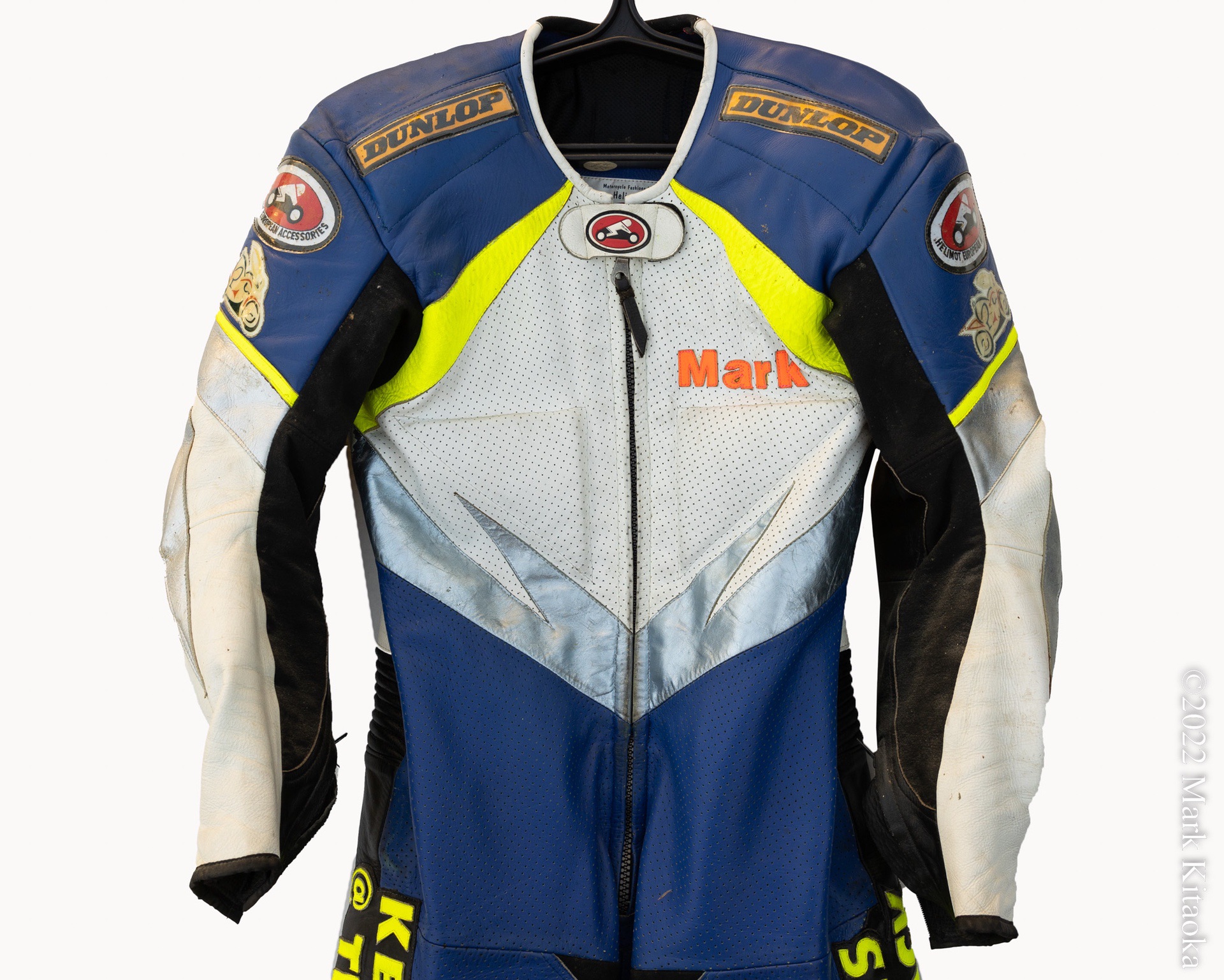
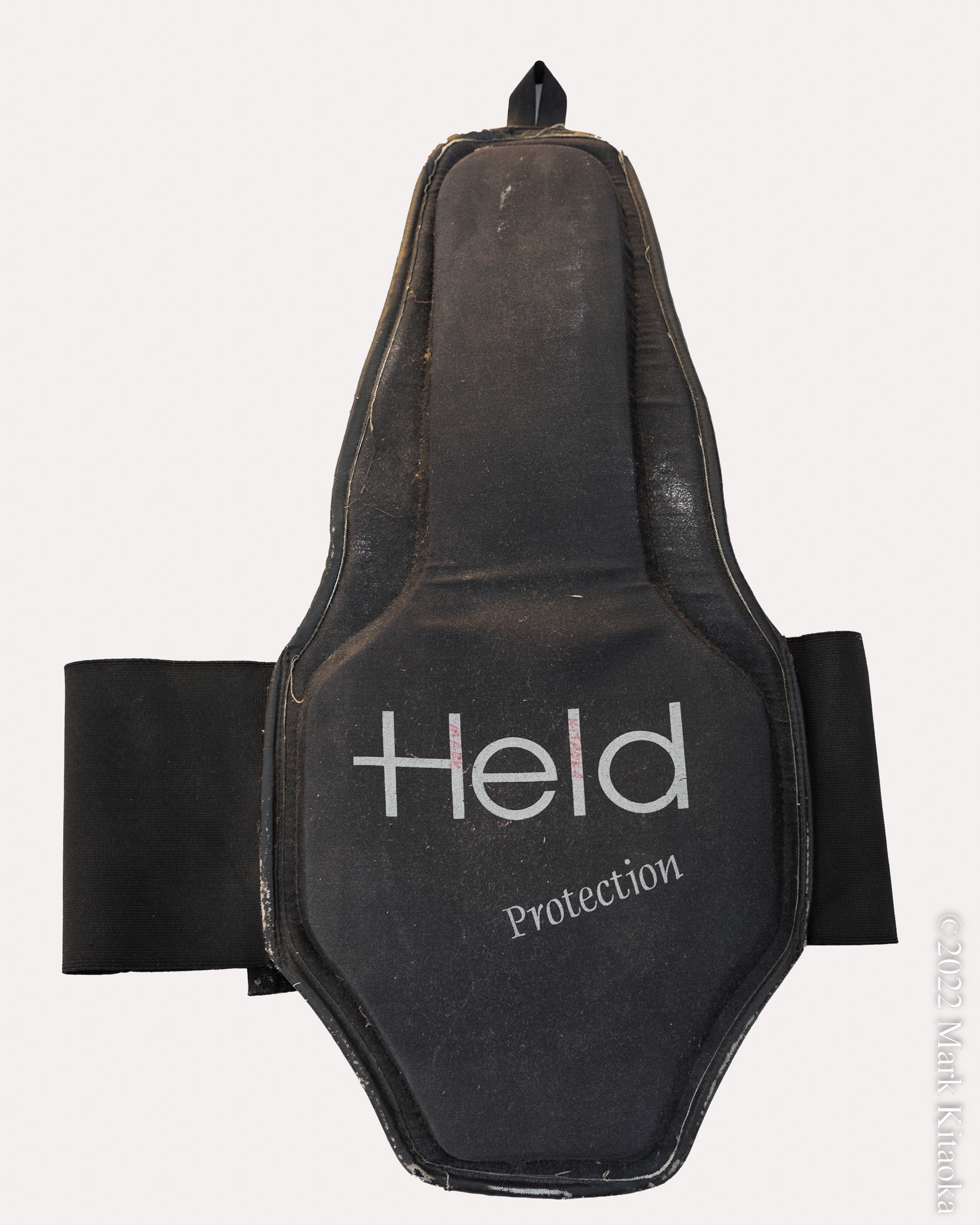
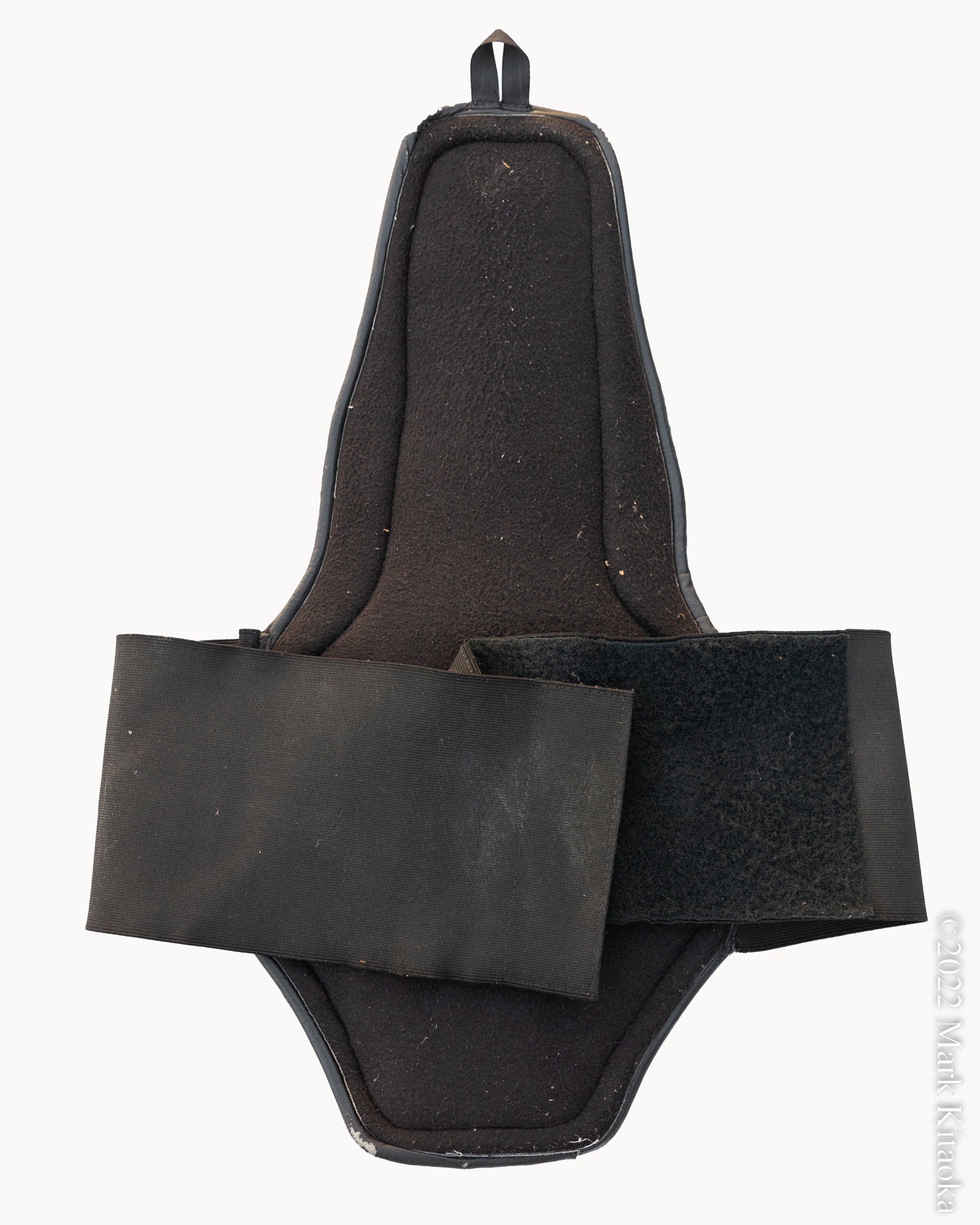
Helite was founded in 2002 by Gérard Thevenot, a French engineer who specialized in fluid mechanics and was passionate about light aeronautics (ULM, hang gliders, paramotors). The high accident rate in these sports led him to look for solutions for pilot protection, and so a first patent was filed for individual protection airbags.
As airbag technology is applicable to all high-risk activities, Helite has become an expert in this field, dedicating itself exclusively to the development of individual protection systems. Helite airbags are already used in a wide variety of fields such as motorcycling, horse riding, cycling, health, aeronautics, and industrial work; they are also highly appreciated in top-level sports.
From Helite’s website:
Our Ambition:
Helite’s mission is to make the world safer by developing new intelligent solutions to protect people in their sports and daily activities. Our special recipe: innovation, technology, simplicity, all made in France with our touch of authenticity.
Our R&D Approach:
From the idea to the design of an airbag, a long process and many skills are involved. In this sense, our airbag technology is still validated by numerous prototypes and crash tests.
Buy Now
RevZilla Helite
Let’s start with the protection offered by the coverage of the Helite Turtle 2:
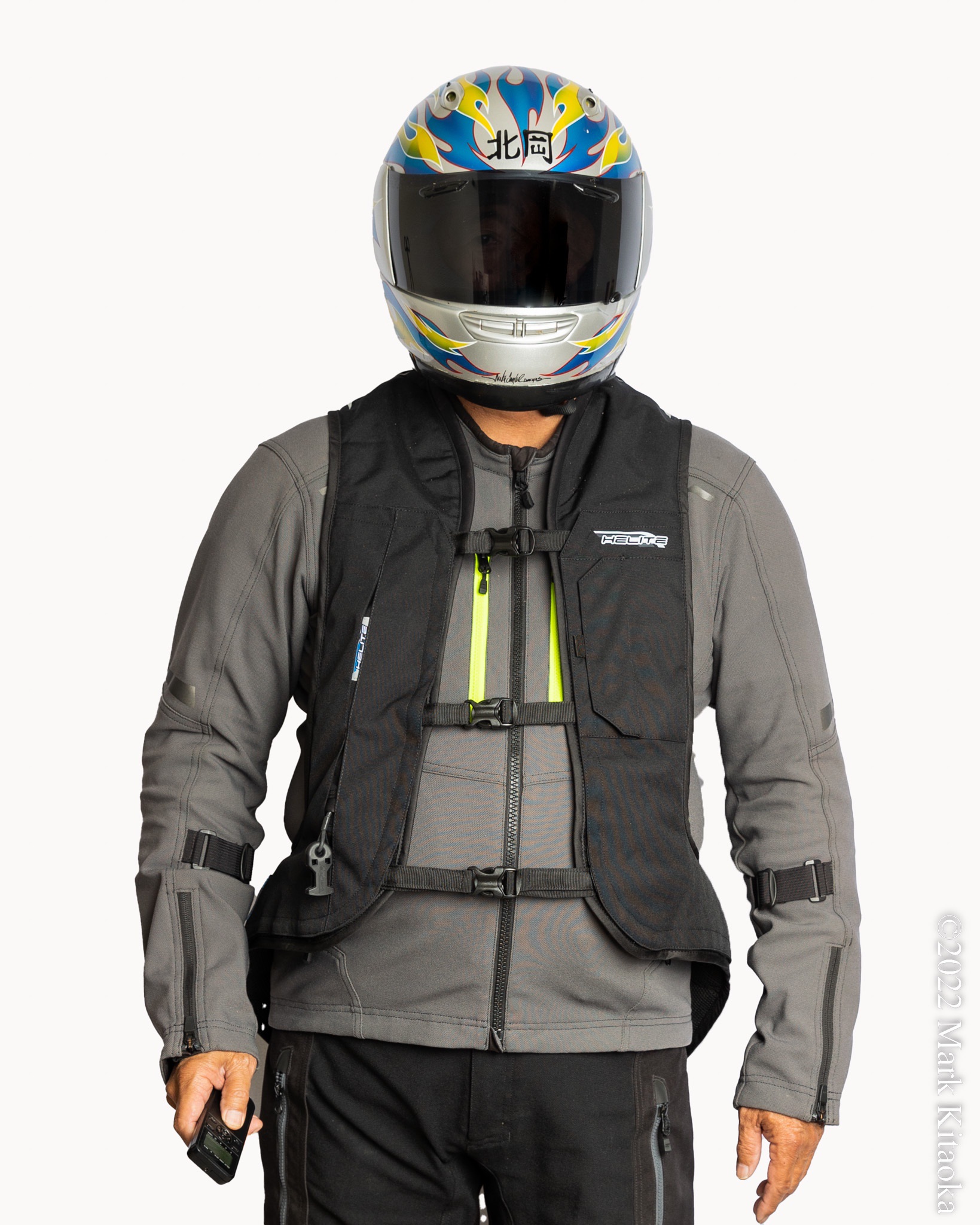
The front of the HT2, when inflated, offers support around the neck and head, preventing fore and aft movement as well as side-to-side. This greatly reduces the potential for neck/spine injuries and the fracturing of the clavicle bone.
Most clavicle fractures occur when the lower edge of the rider’s motorcycle helmet impacts the clavicle bone upon impact. The HT2 does not restrict my head movement at all in any direction when not inflated. My leathers did not prevent head/neck movement in the event of an impact.
In addition to the vest itself, here is what’s included with the HT2:
An instruction manual with a plastic pouch and 5mm hex key used to replace the CO2 cartridge when necessary.
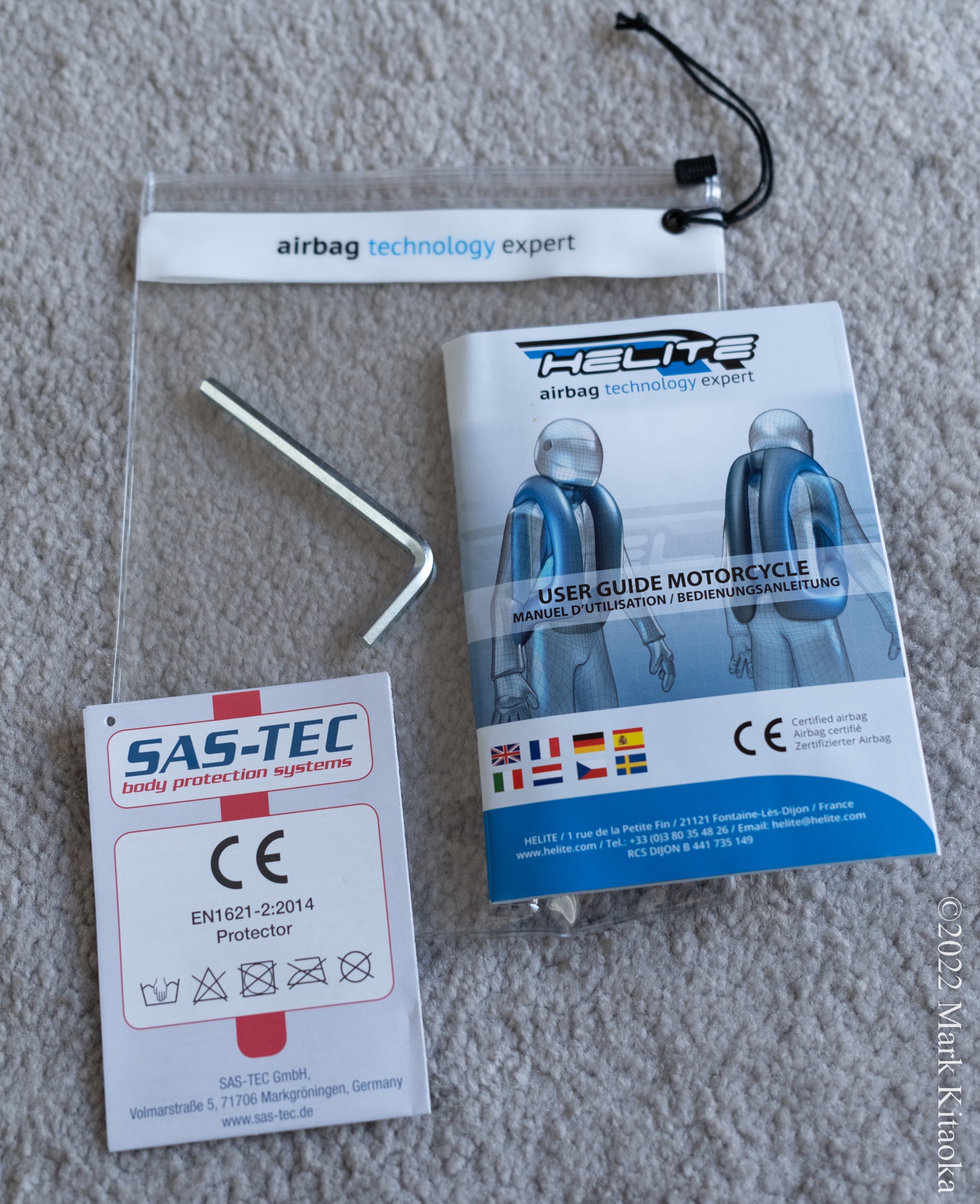
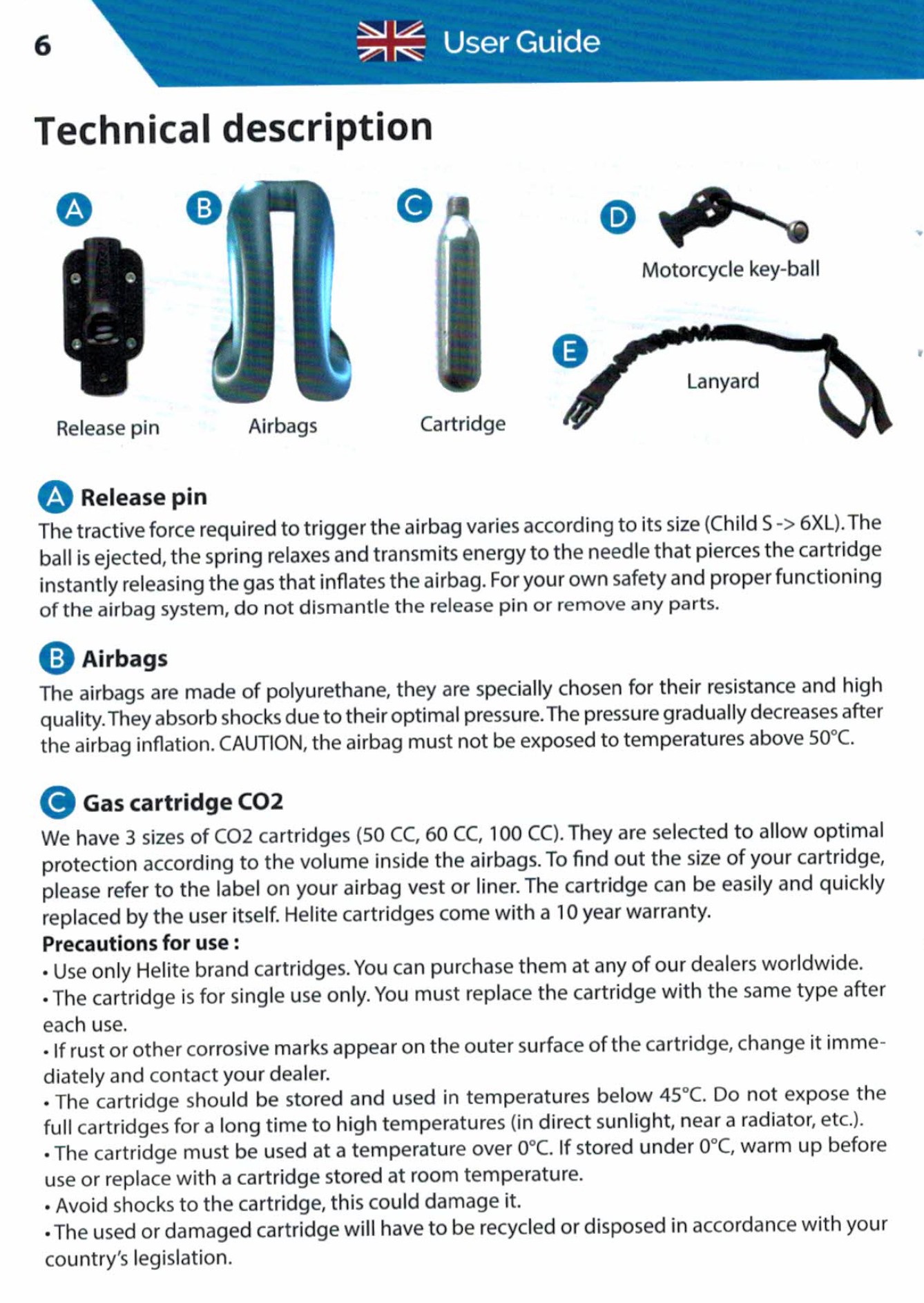
Next up: one 60 cc Helite CO2 cartridge.
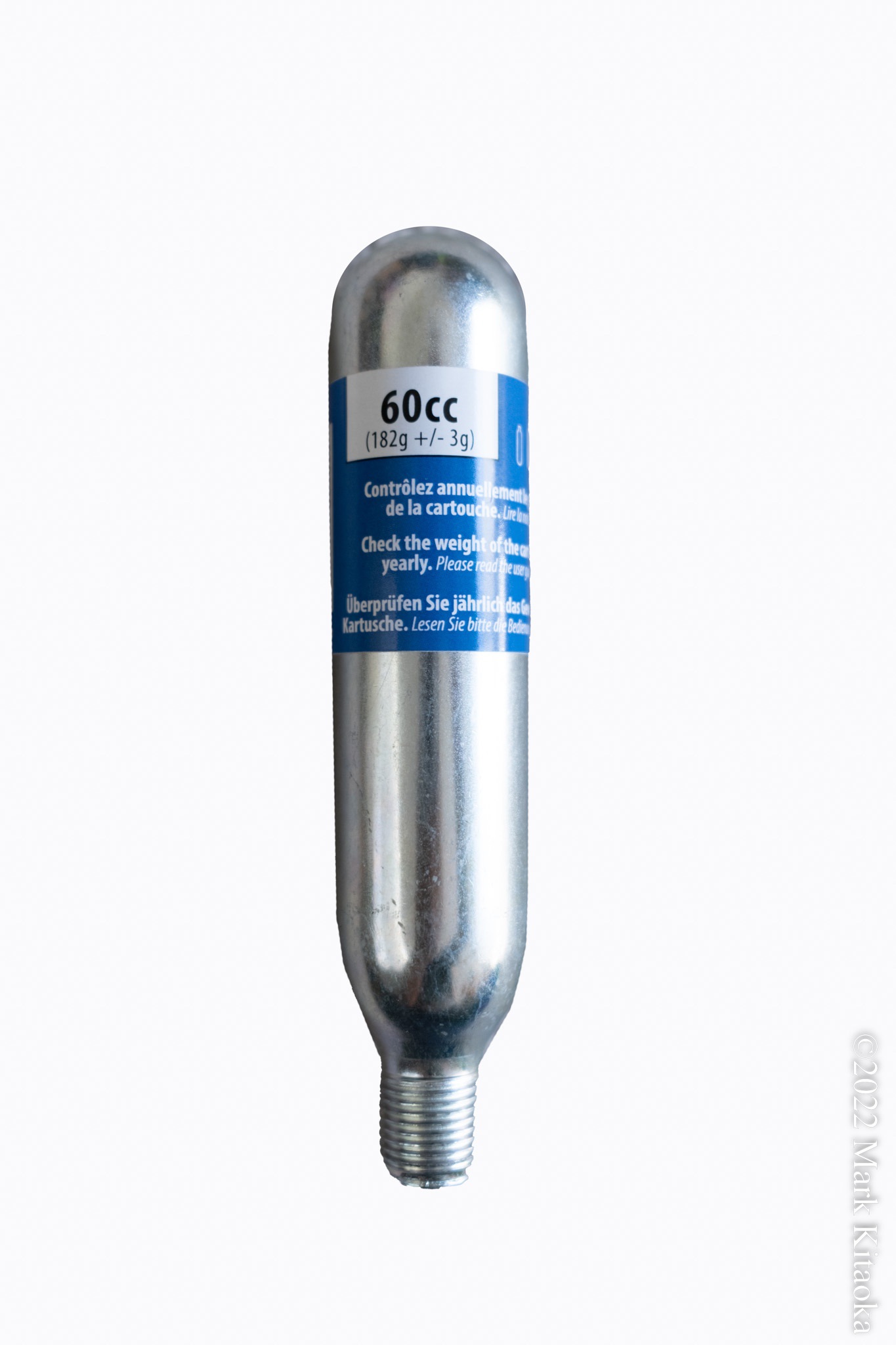
A lanyard tether, which attaches to the bike frame, and which incorporates an elastic portion for ease of movement when dismounting the bike.
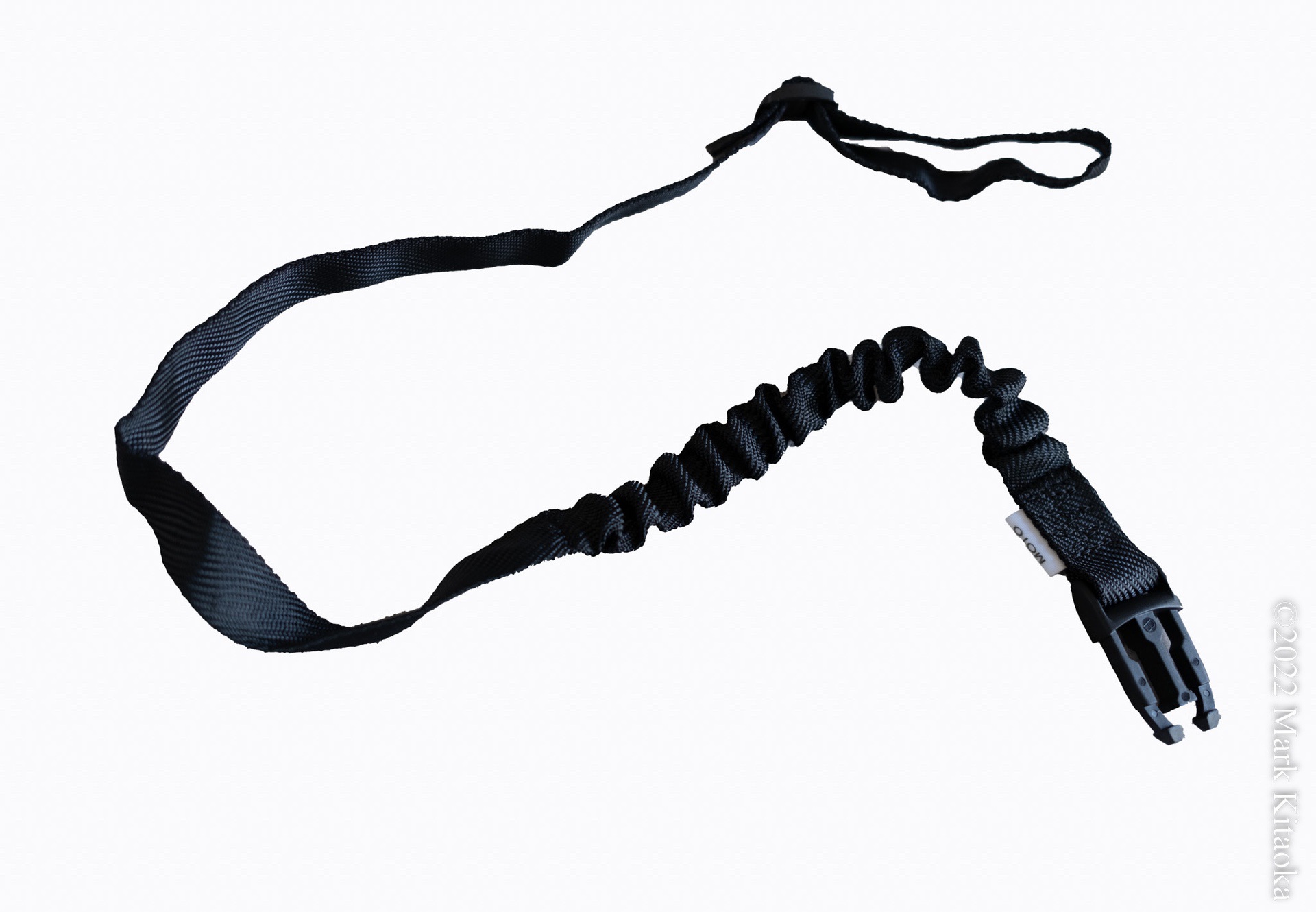
Examining the HT2 revealed to me just how well engineered and executed the vest is. Seams are consistently sewn with no thread fraying. I have a size large and have worn it over a leather riding jacket as well as a KLIM Marrakesh, Alpinestars, and Aerostich Darian jacket. The side arm hole area is generous in its size, allowing complete freedom of movement and great airflow as well.
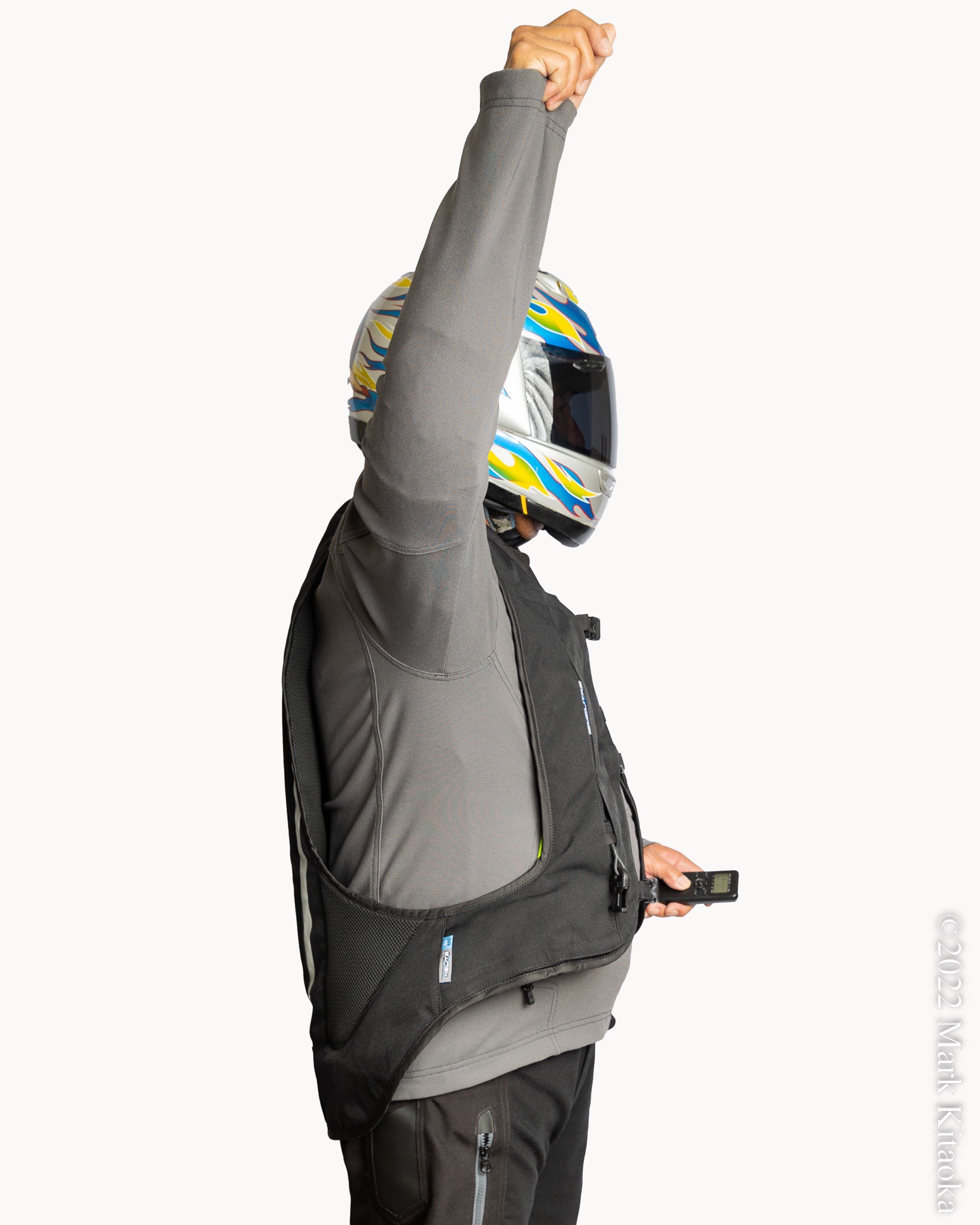
The reflective accents on the rear of the HT2 reflect well when illuminated by headlights.
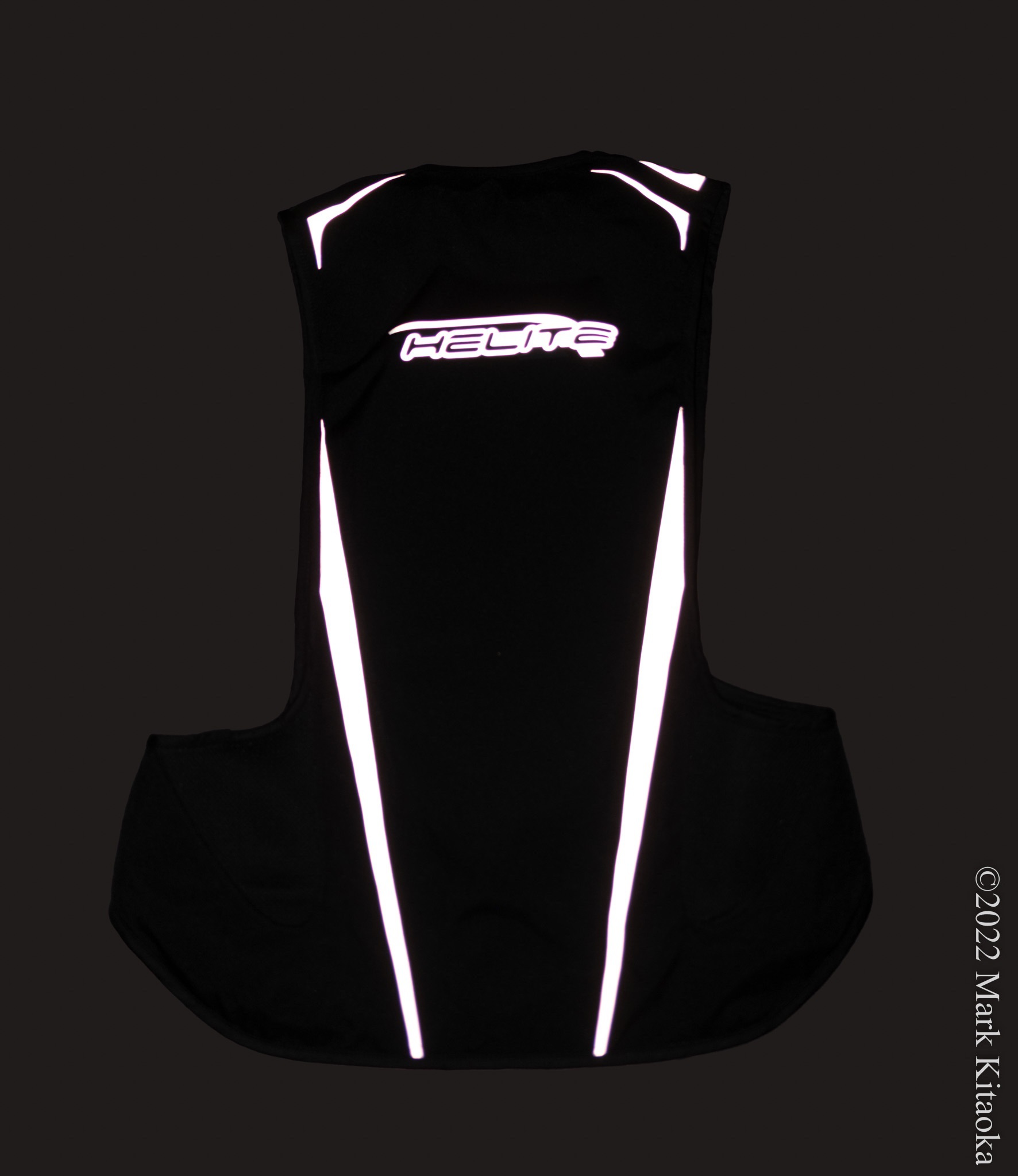
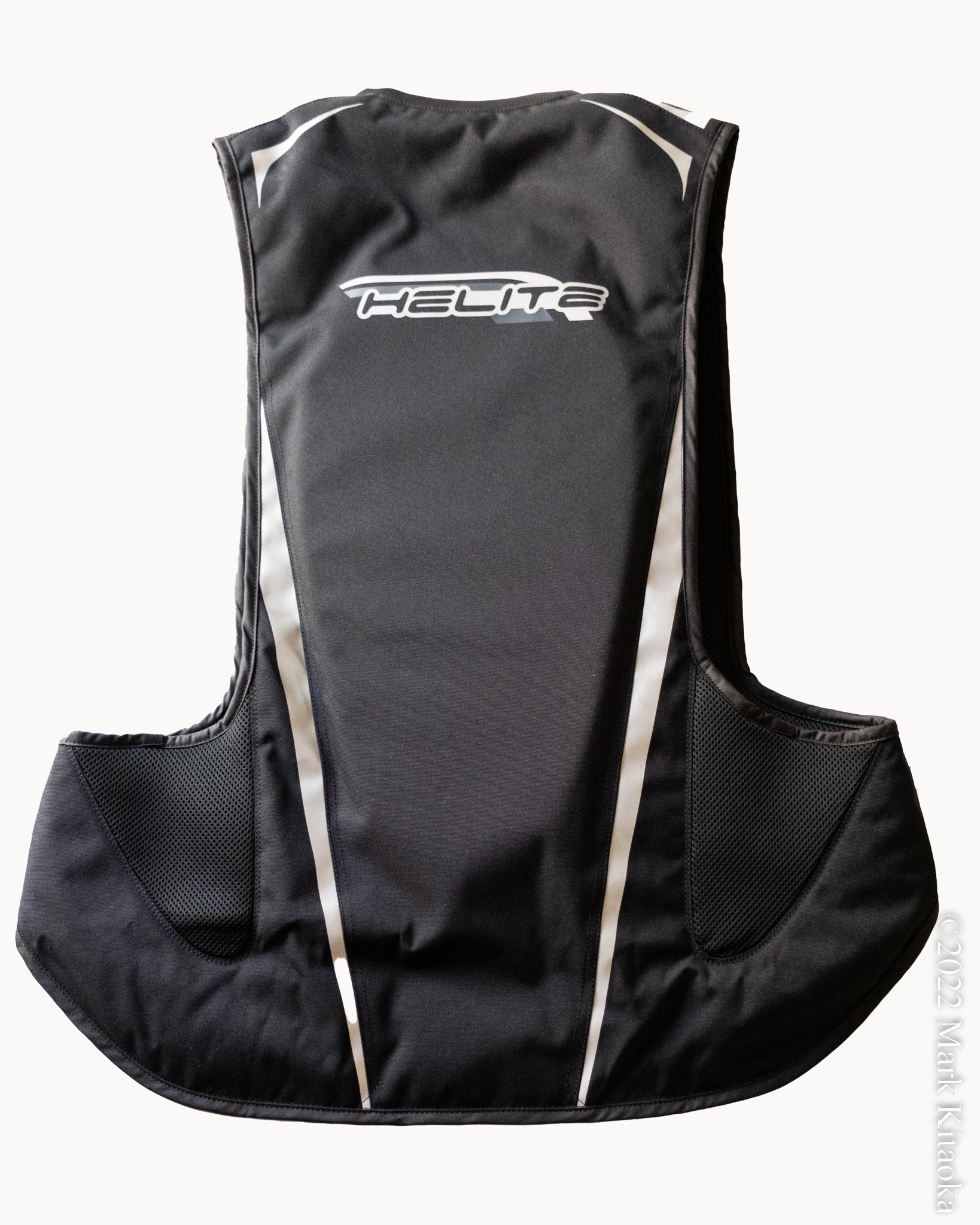
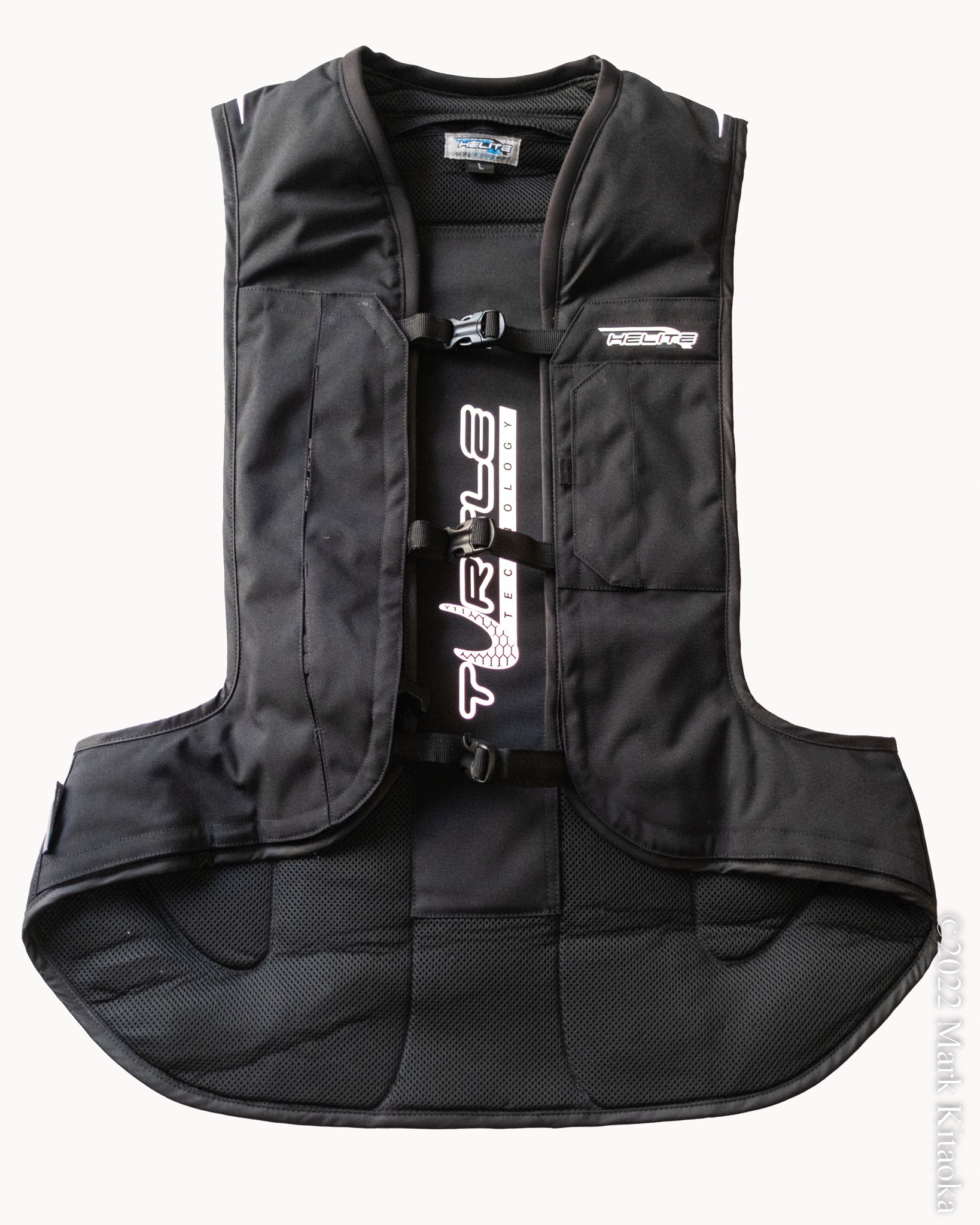
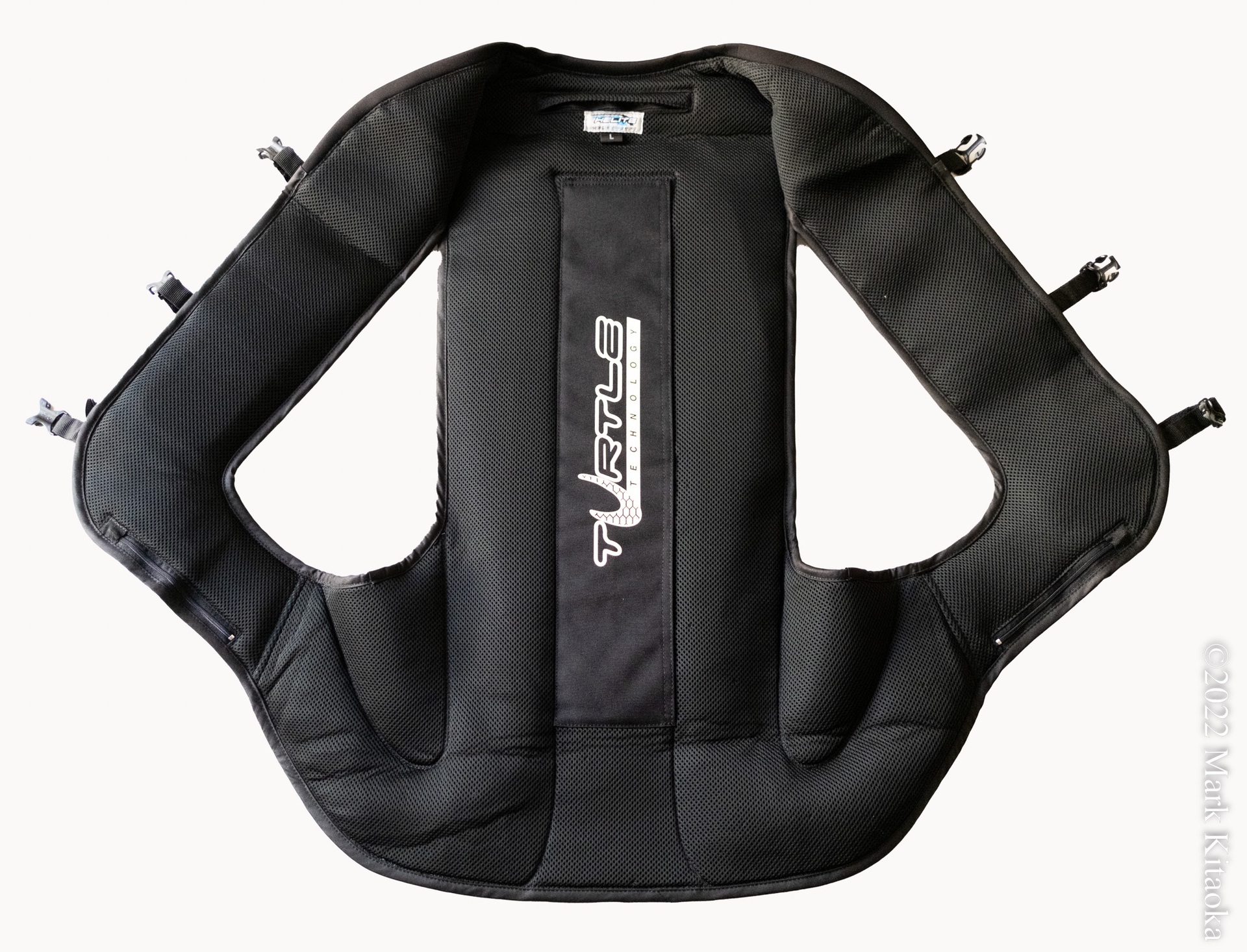
The length of the rear of the HT2 covers the tailbone area, which is much appreciated by someone who has crashed. No, not in the HT2, but wearing full leathers and being able to examine damage to them after the fact in two low-sides and one high-side. Later in this review, I will explain how the HT2 protects the tailbone area.
Helite’s V1 and V2 models differ primarily in cosmetic changes. Helite USA notified me that the internal workings of the vests are the same. Here is Helite’s video of the changes between the V1 and V2.
I have previously mentioned that the quality of construction in the HT2 is excellent. Let’s go over the components step by step.
I had previously mentioned the size of the side arm holes. It’s more accurate to describe them as arm openings. They’re huge, and I appreciate the amount of movement and airflow this offers. It also makes putting the vest on and off with a jacket a breeze—no pun intended.
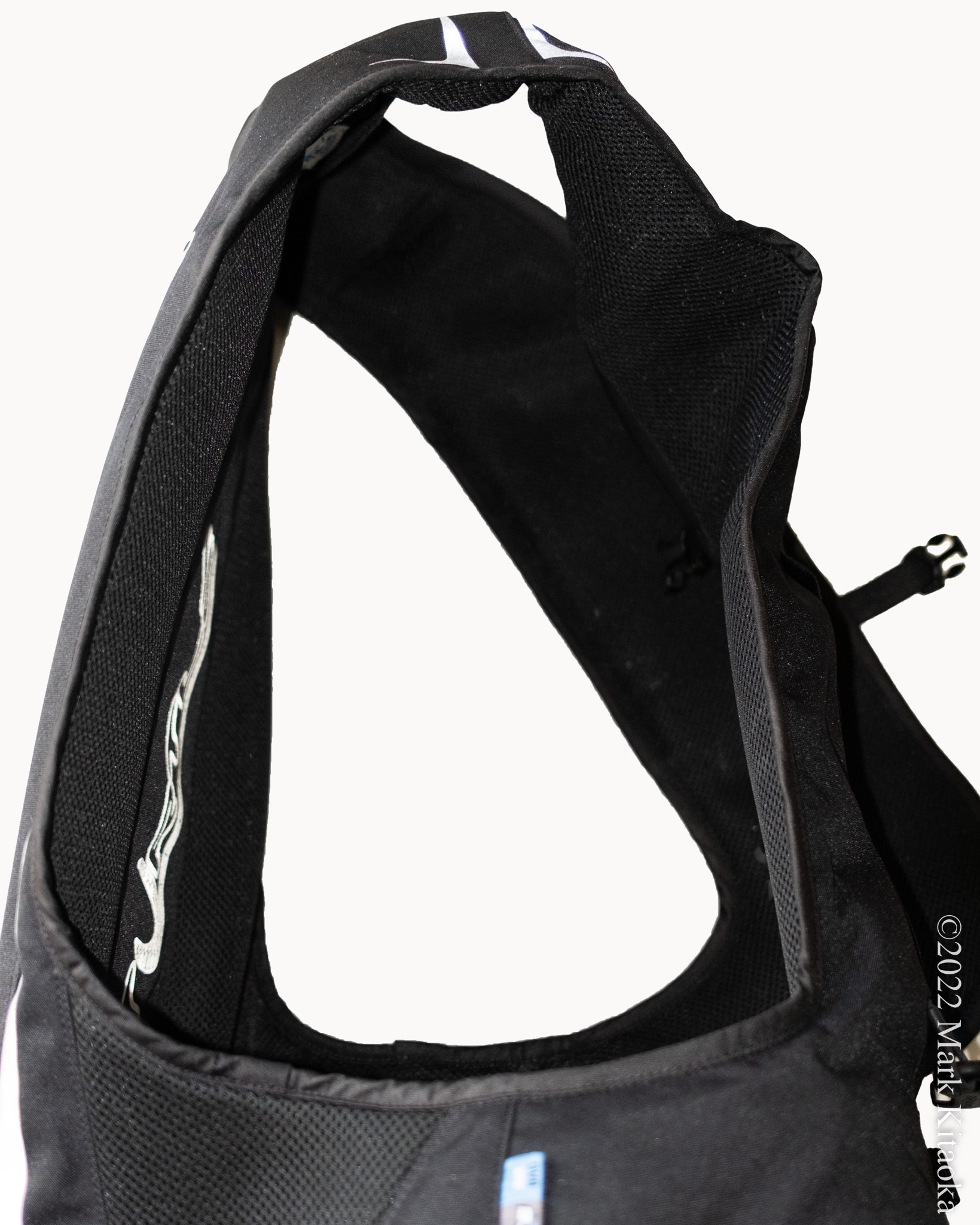
Both sides of the front of the vest contain Velcro panels, which open to allow adjustment of the three straps, which hold the vest to your body. On the right-hand side, the vest contains the CO2 cartridge and the firing spring mechanism. Velcro straps sewn into each side panel allow the user to adjust the length of each strap.
Helite recommends that when adjusted over your riding jacket, enough space should exist between the vest and your jacket to fit a full fist on each side of the front panel. This is an estimate of how much room will be needed when the vest expands in deployment. My video in the Deployment section will show this.
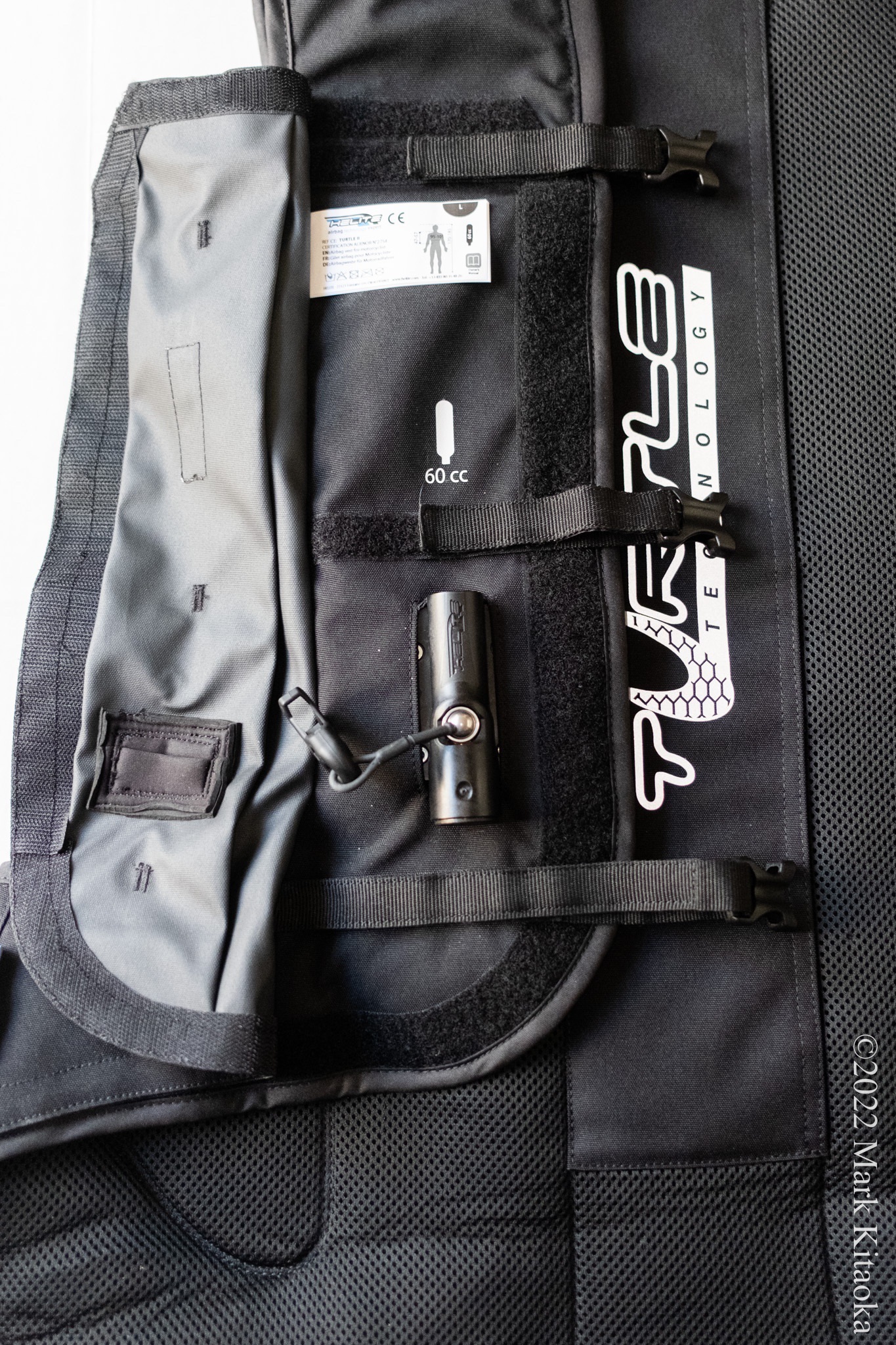
The vest does not ship with the CO2 cartridge installed. It’s very convenient that the vest pocket shows the correct size cartridge to be used with the vest size you’ve purchased. Helite cartridges come in 50, 60, 85 and 100cc sizes depending on the vest’s size. Retail pricing for the replacement canisters ranges from $32.00 to $37.00 USD, depending on vest size.
Mine is a large, which uses a 60cc size. The black portion on the left of this image is where the female portion of the lanyard attached to the ball passes through when the flap is closed.
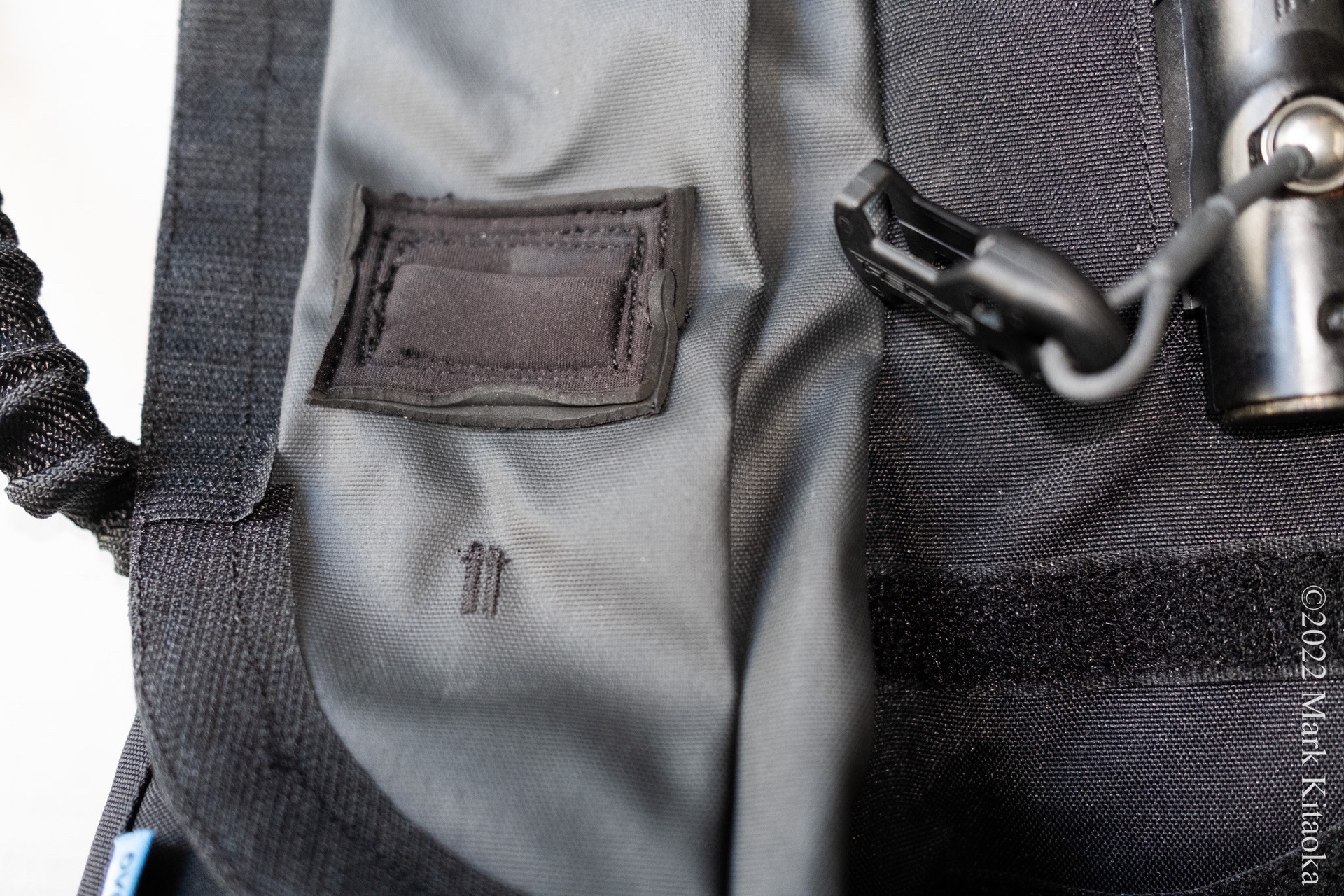
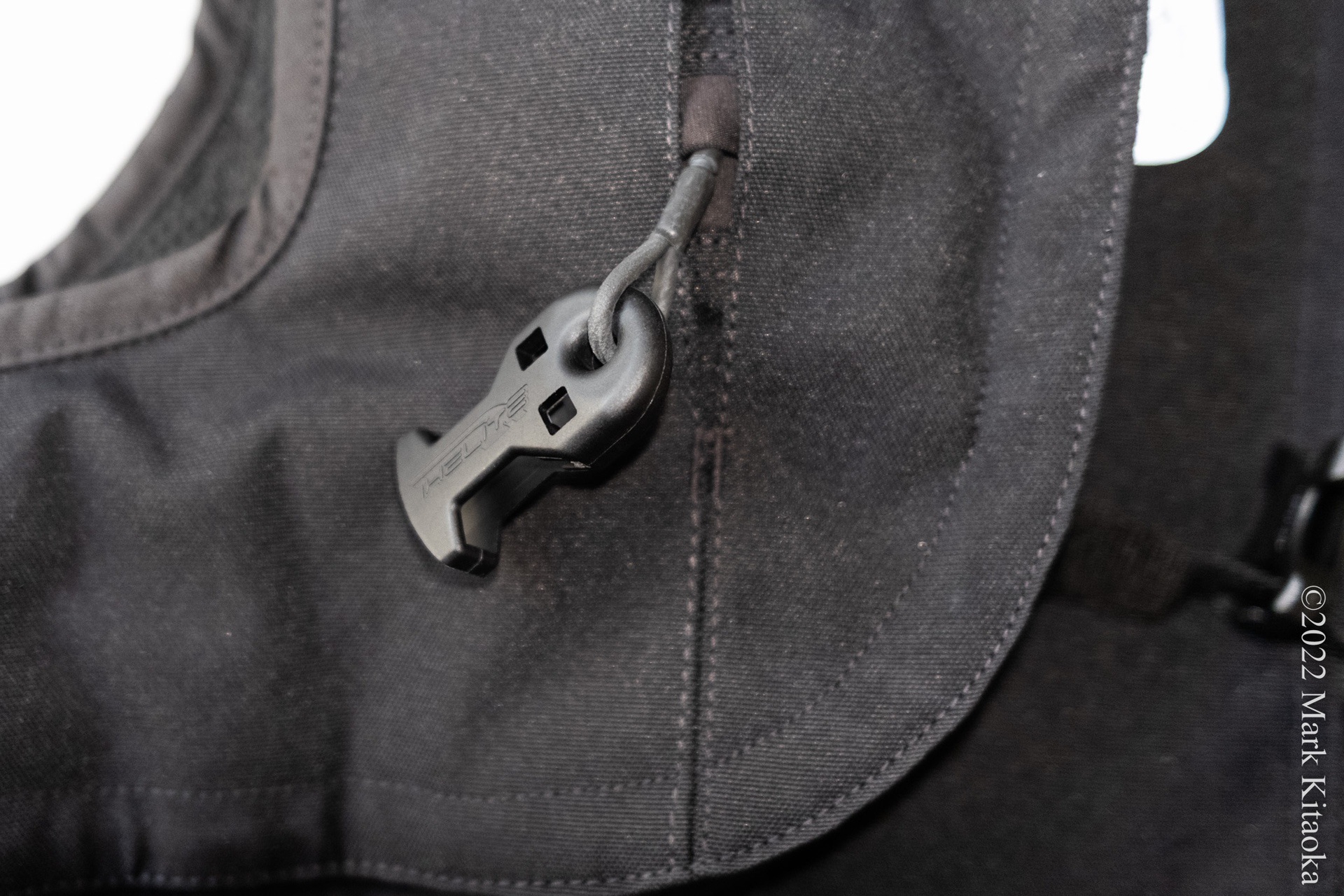
On both sides of the vest’s front, the interior panels have zippers where their pulls are hidden beneath elastic keepers. These zippers are used by Helite if the vest’s airbag needs to be serviced. There is also one of these zippers located in the neck area just above the Helite logo tag. Again, these zippers are not intended to be opened by the end user.
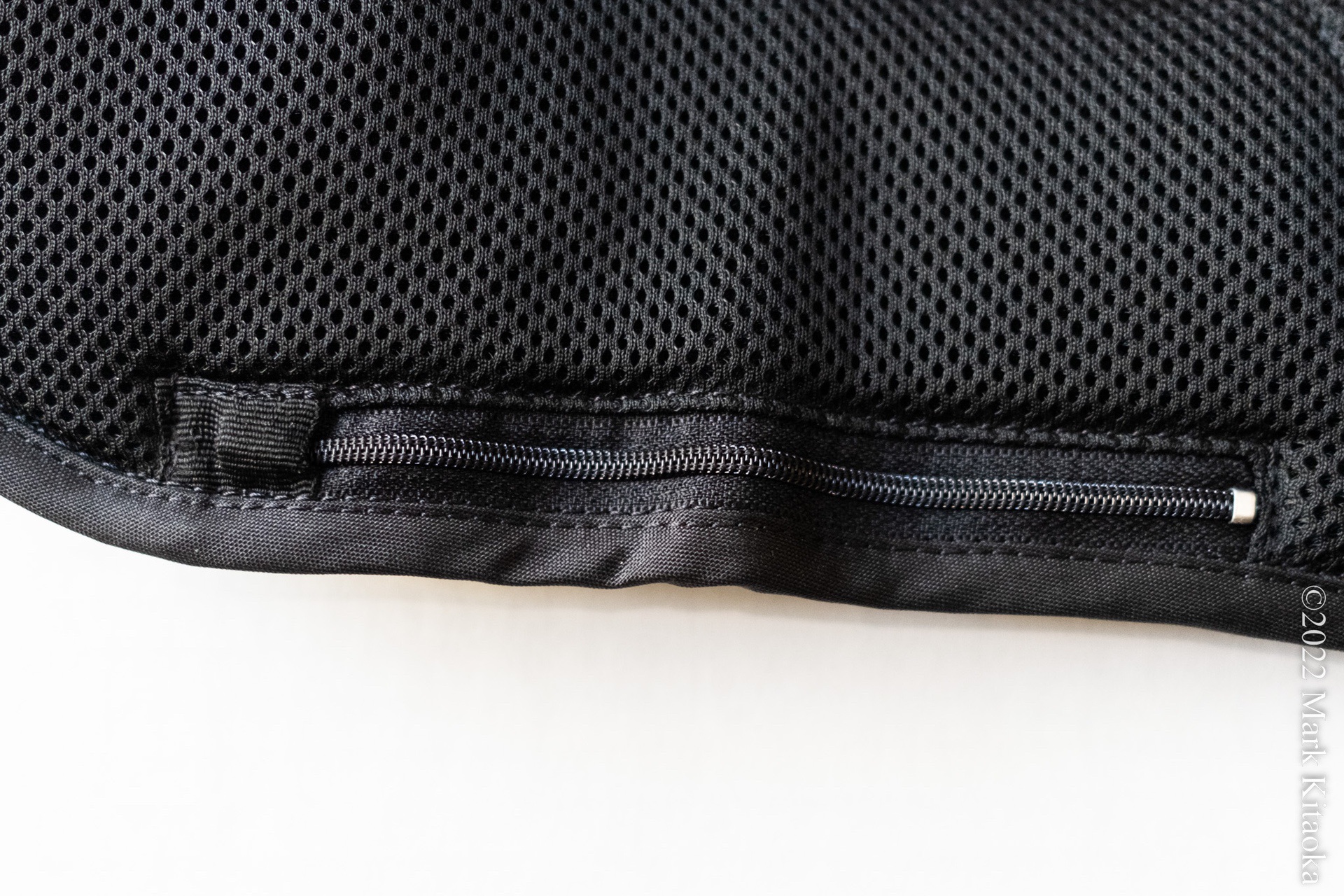
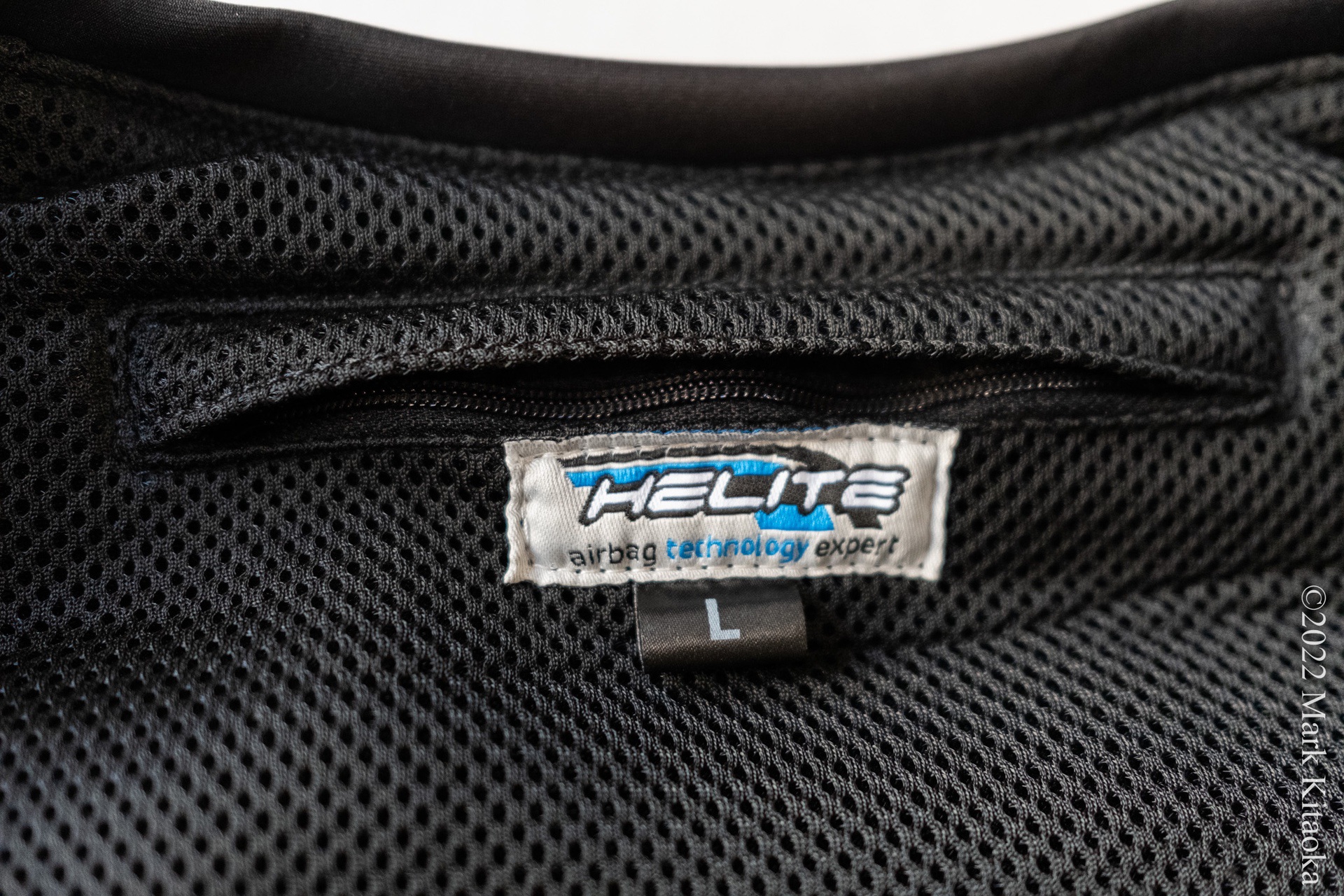
Like the right side, underneath the front panel on the left-hand side of the vest’s front exists Velcro straps, which are used to adjust the sizing straps.
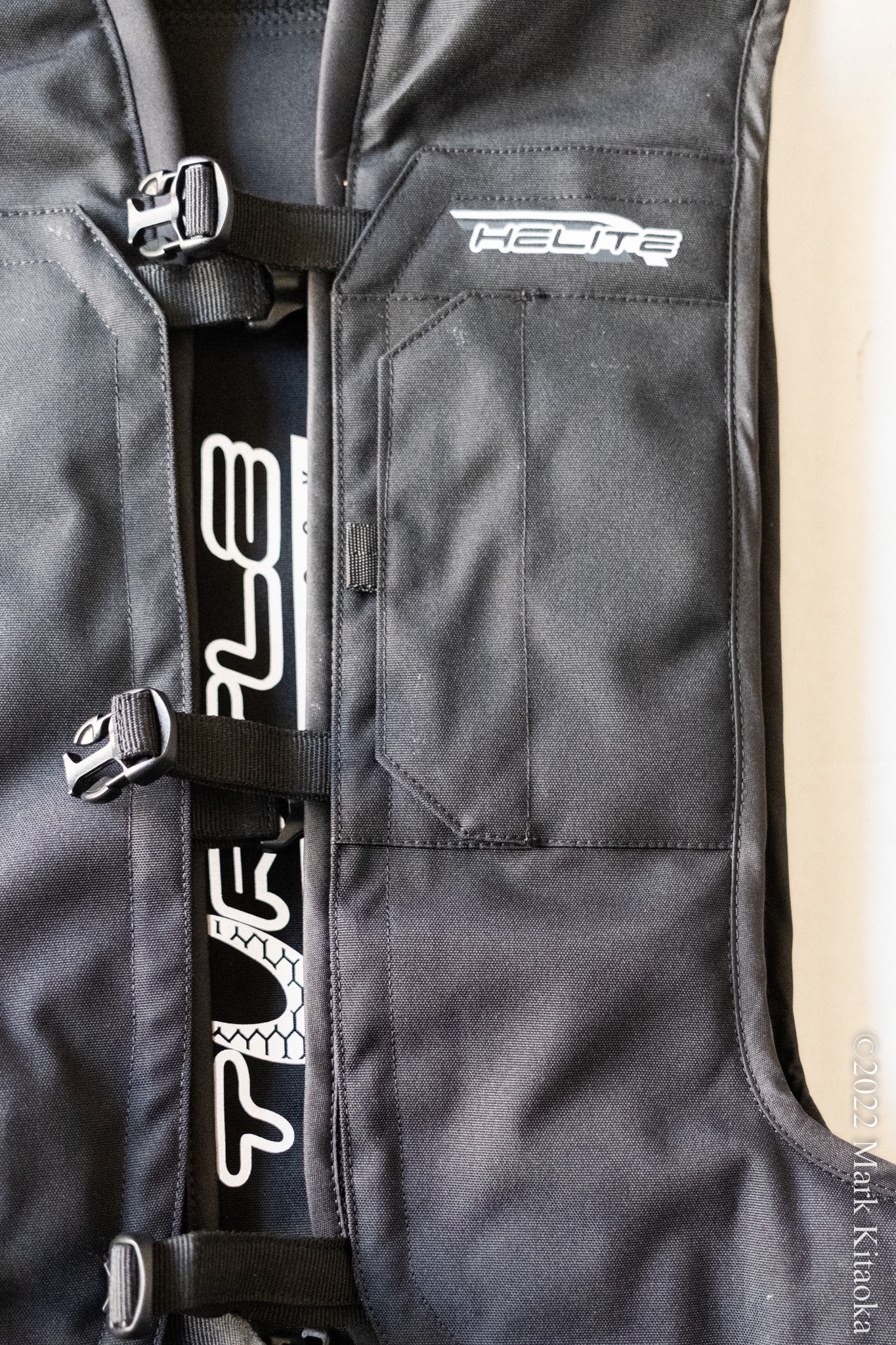
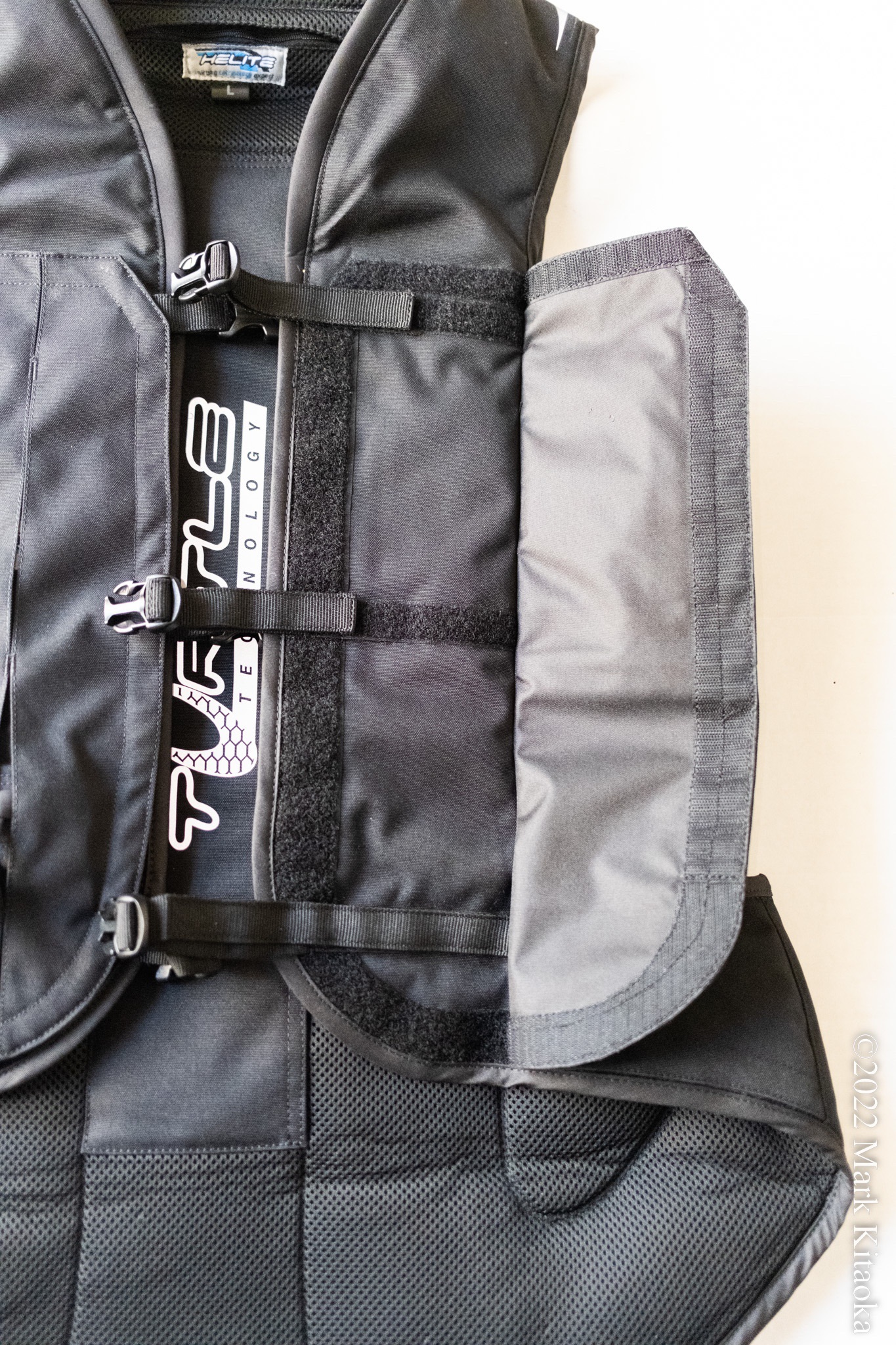
In addition, the V2 Helite Turtle has added a small zippered pocket under its own Velcro panel. Although not stated in their literature, it appears that the zipper is the waterproof type. I’m not certain if the pocket is waterproof.
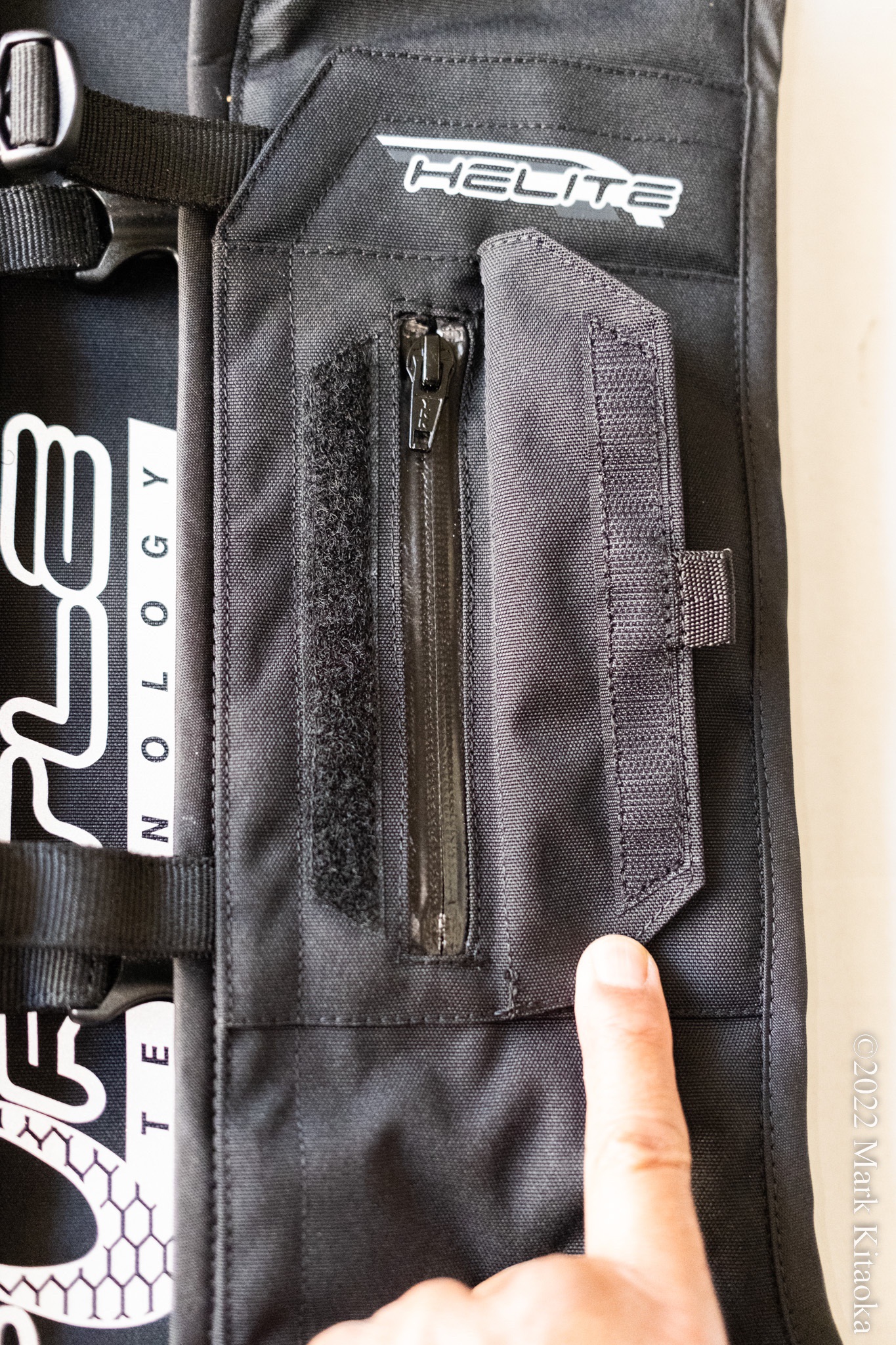
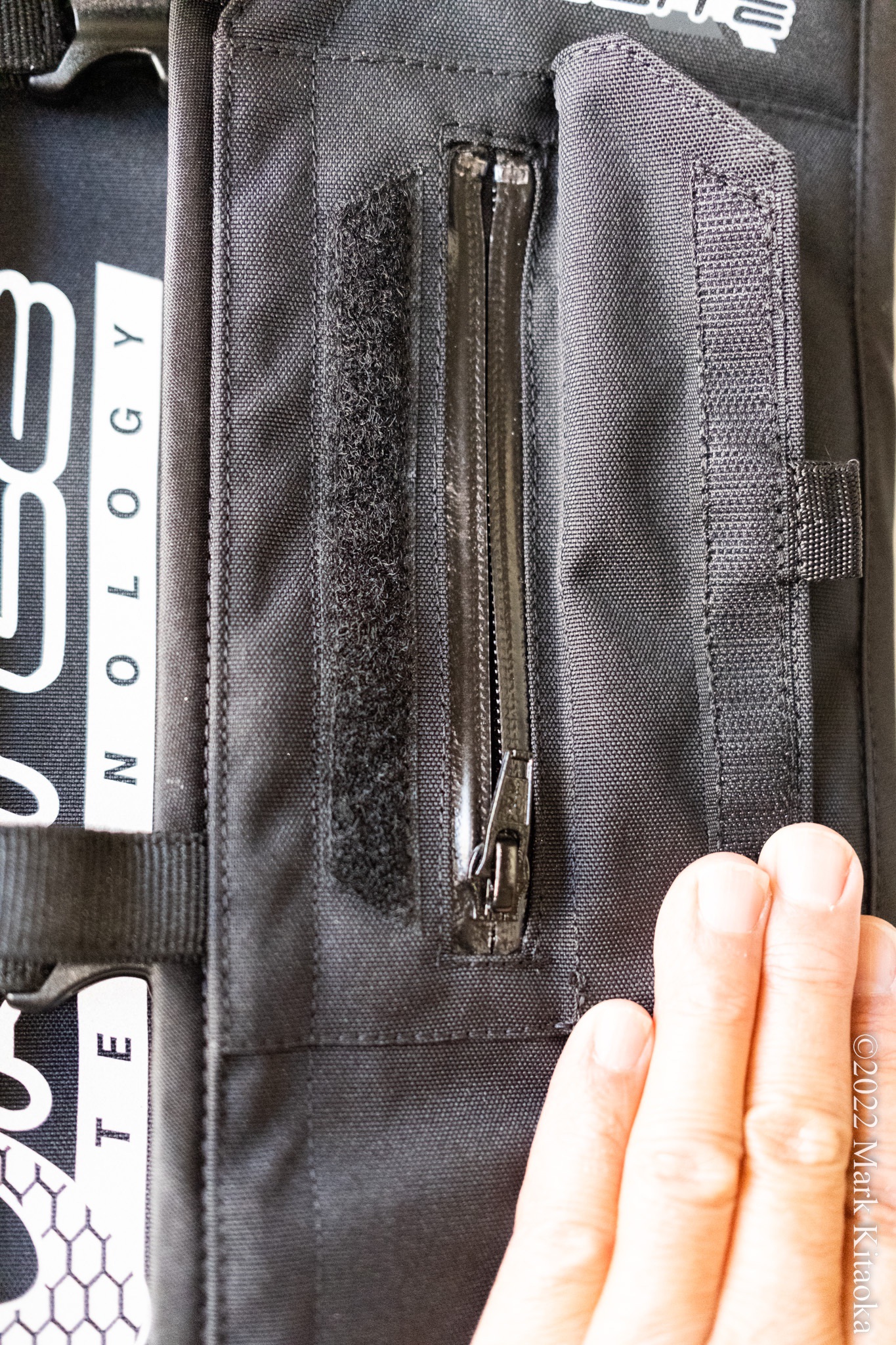
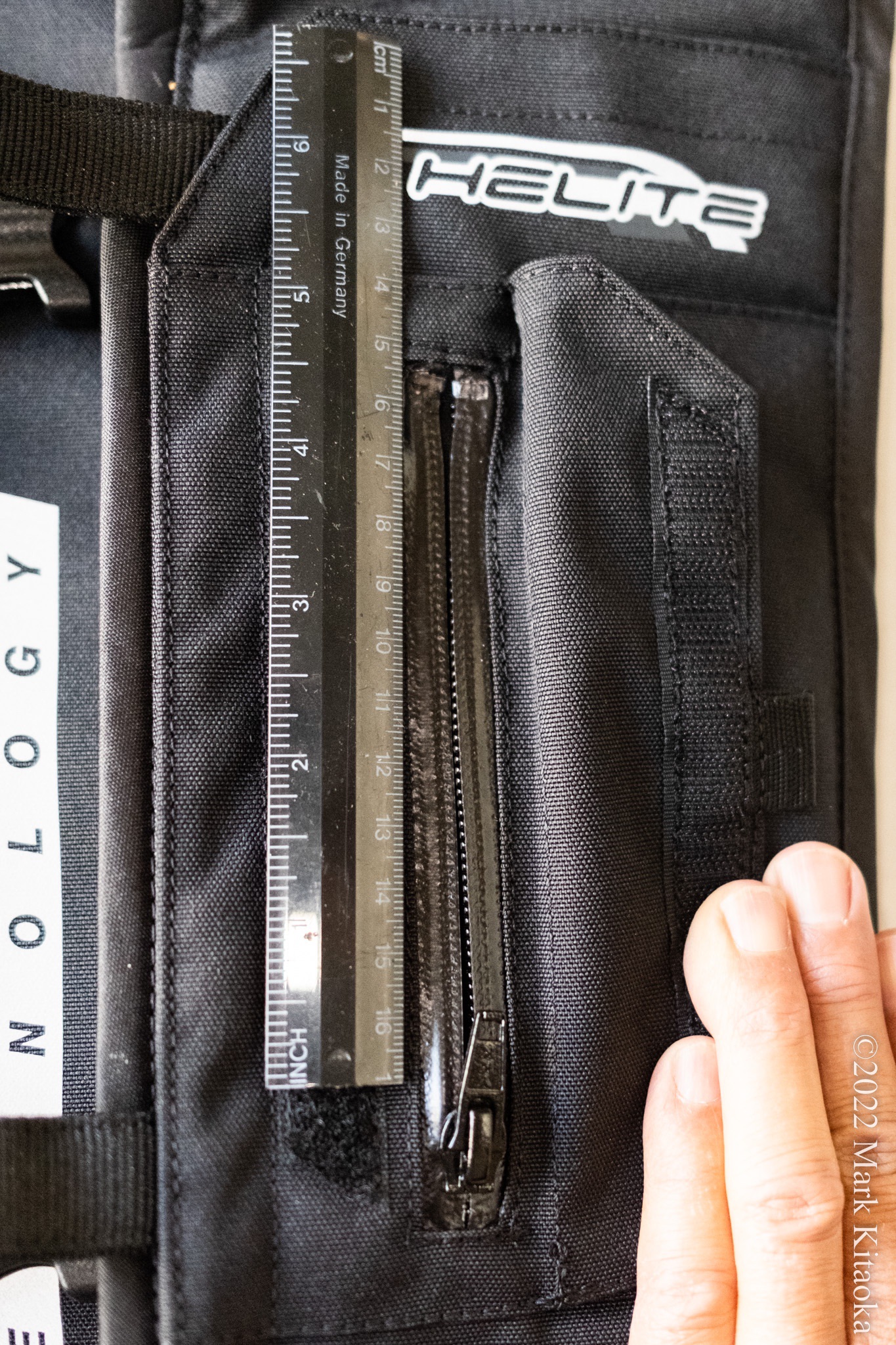
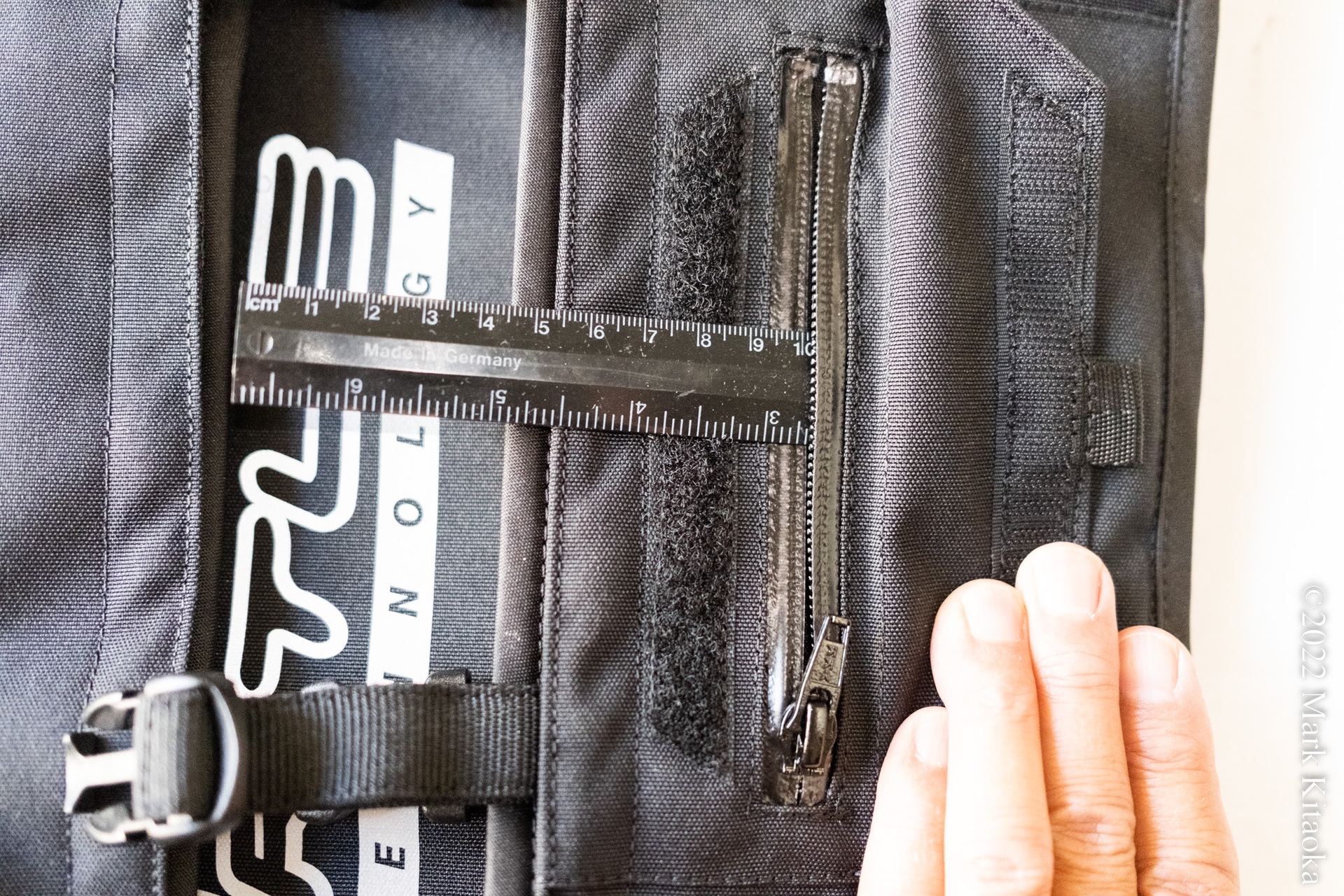
Nowhere in Helite’s literature do they state what should or should not be placed into this chest pocket. My personal view is I would not store anything in it other than a credit card, ID, or some cash—and certainly not my cell phone. When the airbag activates, I don’t want anything sharp or anything that could be damaged upon impact when the airbag deploys to be in there!
The back of the HT2 houses a solid piece of material between the vest’s material and the airbag. In examining the inside of the rear panel, I found that a vertical velcro patch exists that can be lifted on the right hand side.
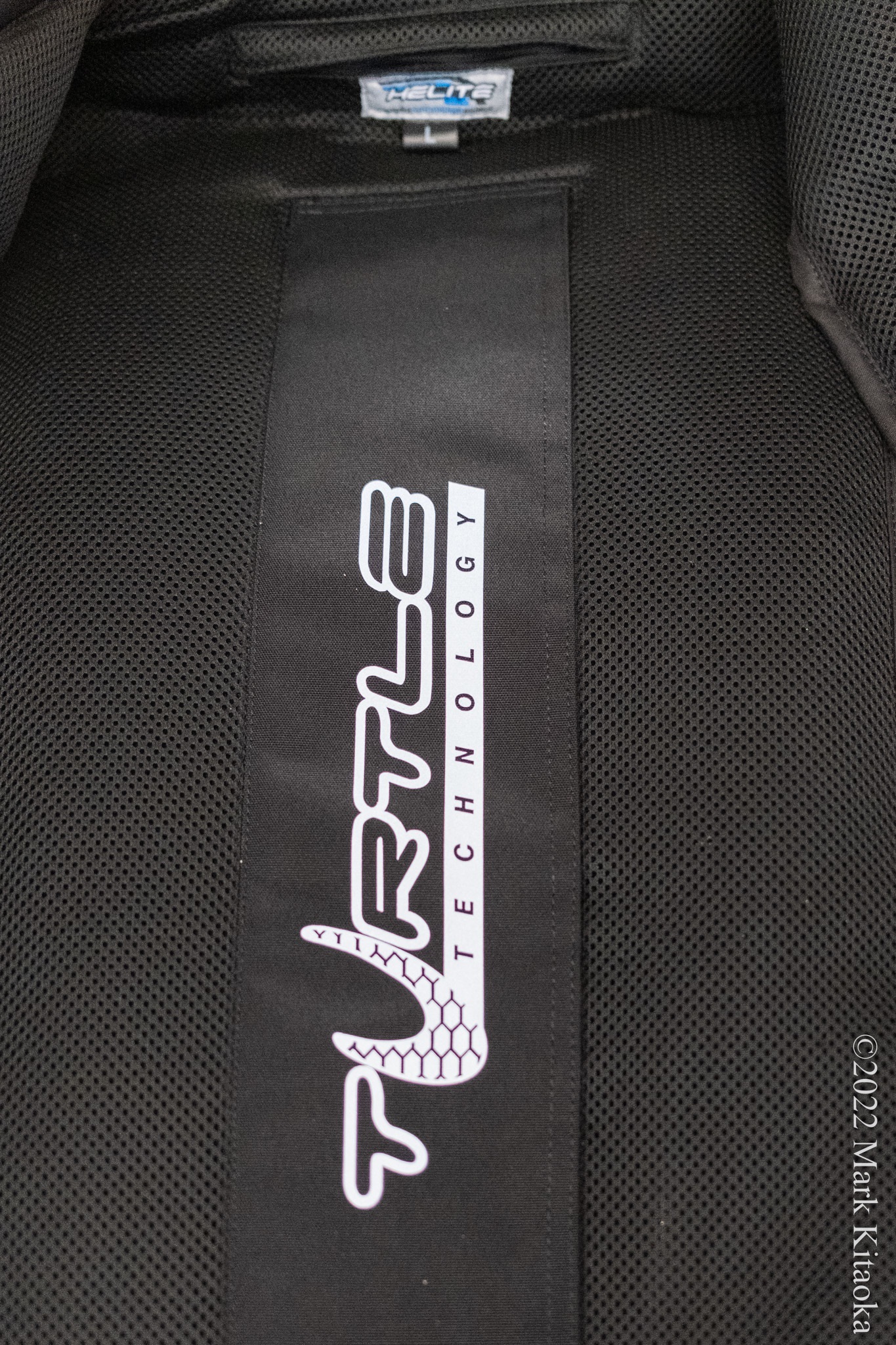
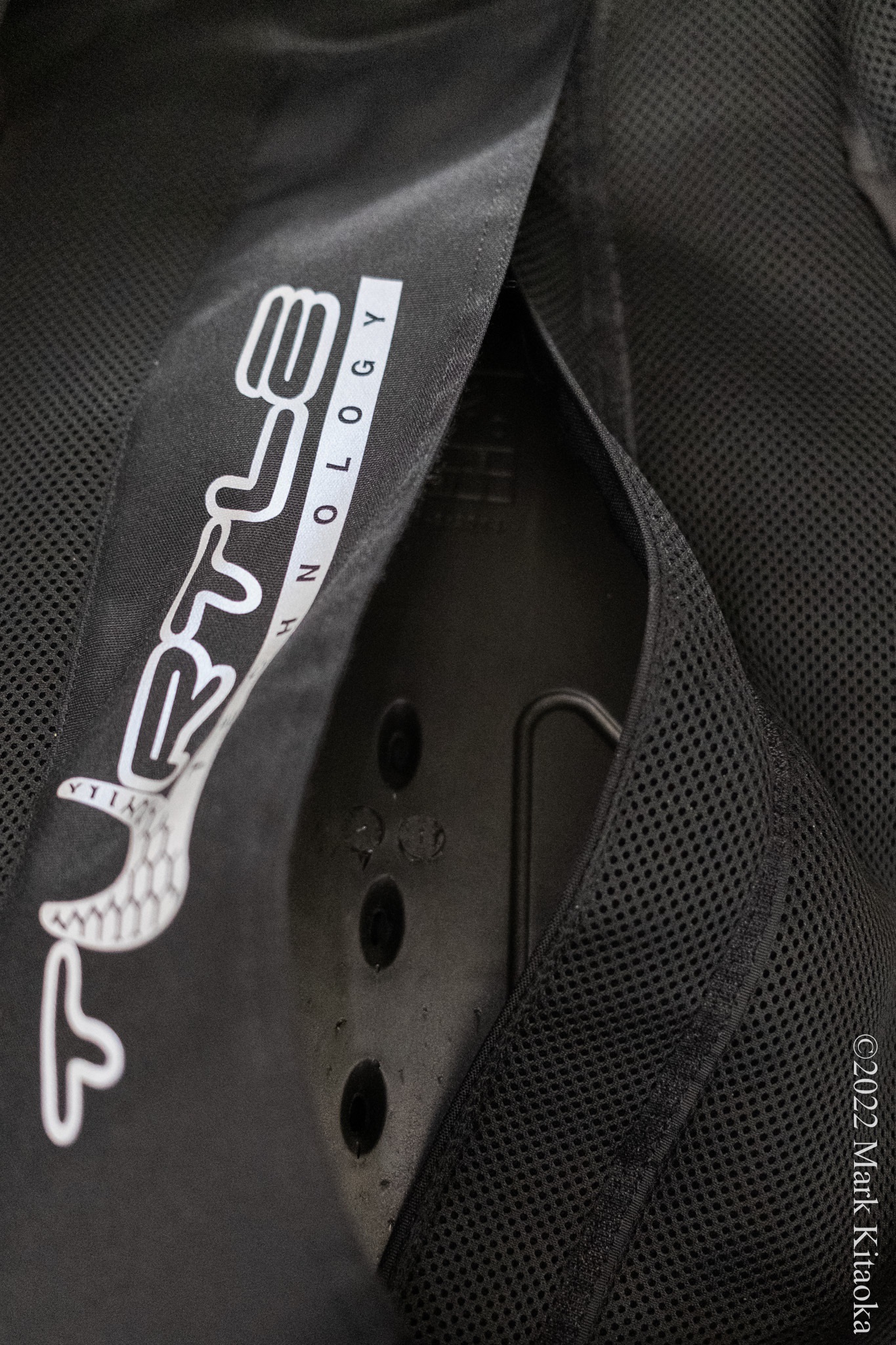
Lifting this panel revealed hard armor on the interior of the airbag.
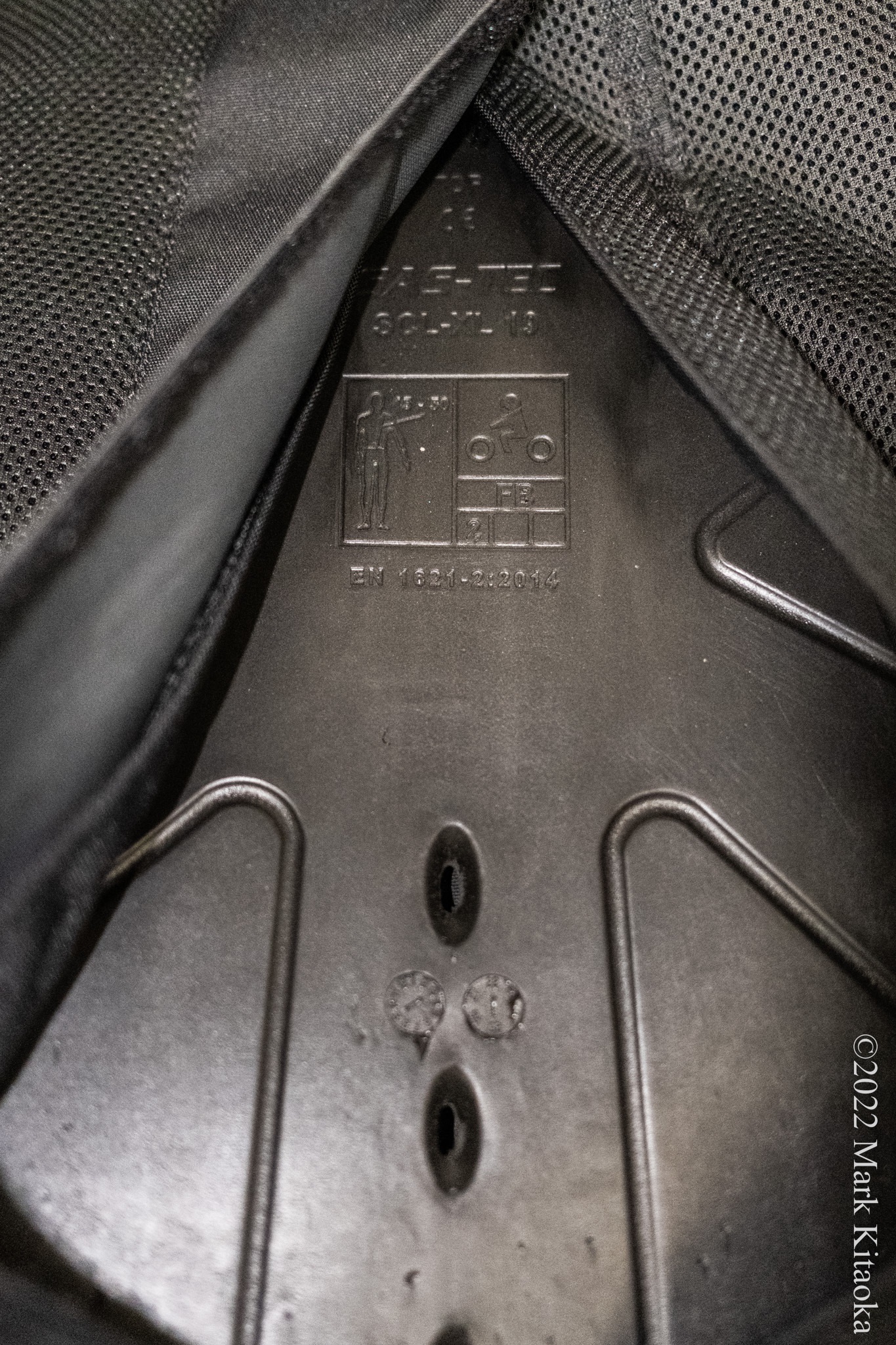
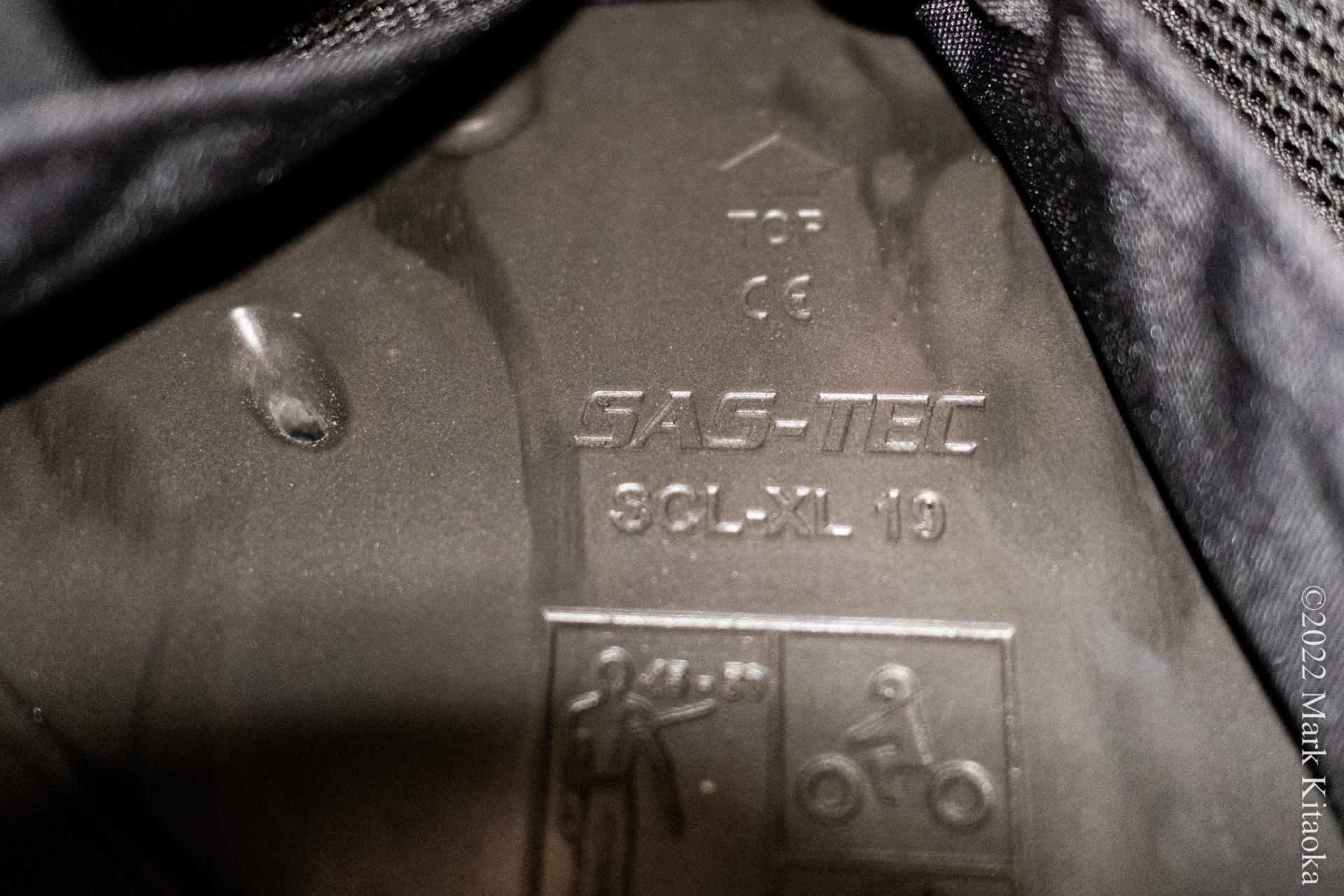
The airbag portion in the rear of the vest appears to be sandwiched between two hard armor plates offering excellent spine protection. Later in my deployment video and imagery you can view how the spine is cradled between two air chambers.
I want to say here, before I discuss how the vest operates, that for me, dying is not my primary fear. But I don’t believe I have the strength of will to endure what people like Wayne Rainy and Christopher Reeves experienced. Anything I can do to prevent that happening is something I will do.
Buy Now
RevZilla Helite
In this section, I will combine Helite’s own user guide instructions with my own imagery. First off is the process of installing the partial elastic tether to your bike.
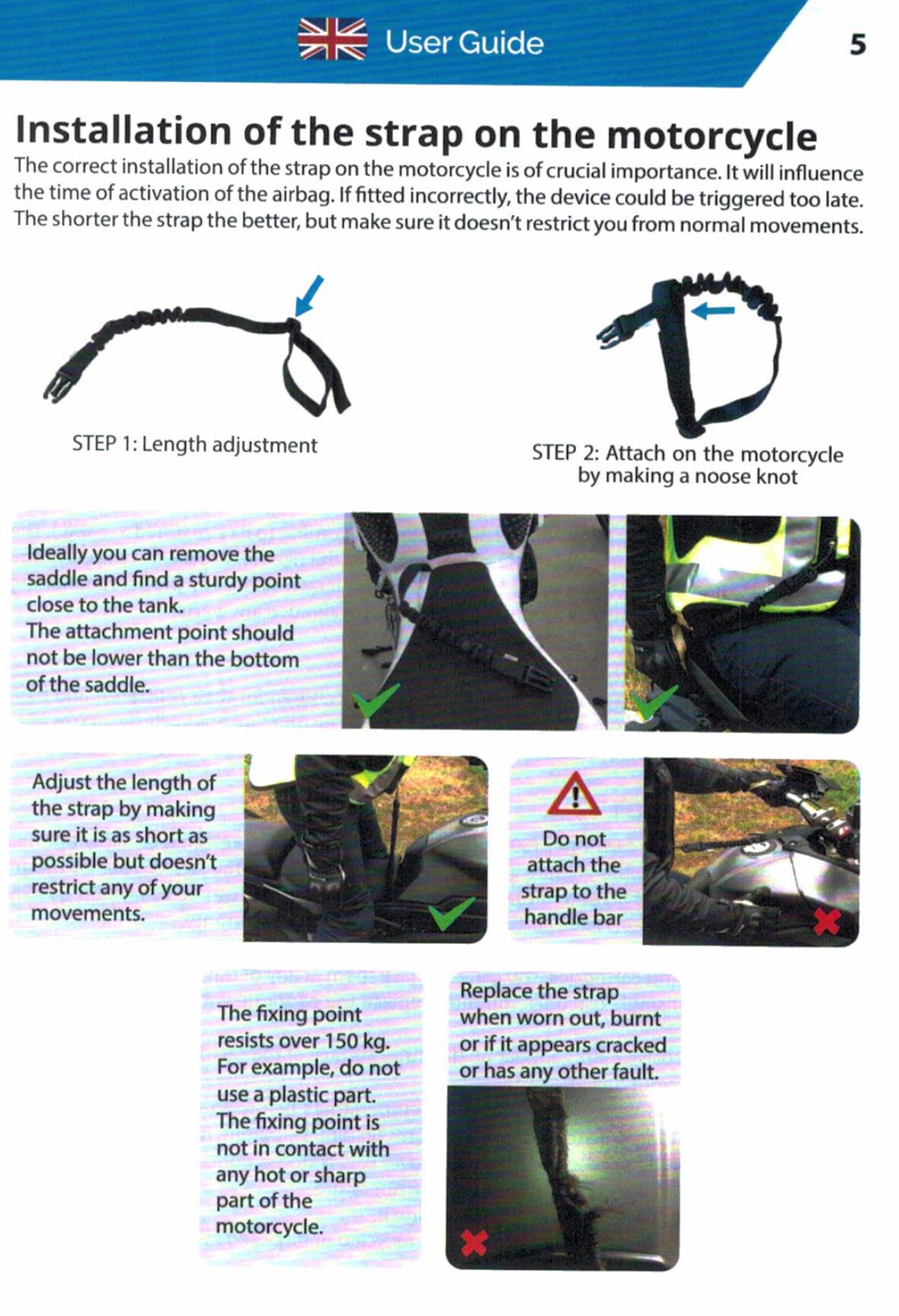
This is how I installed the tether on my Zero DSR:
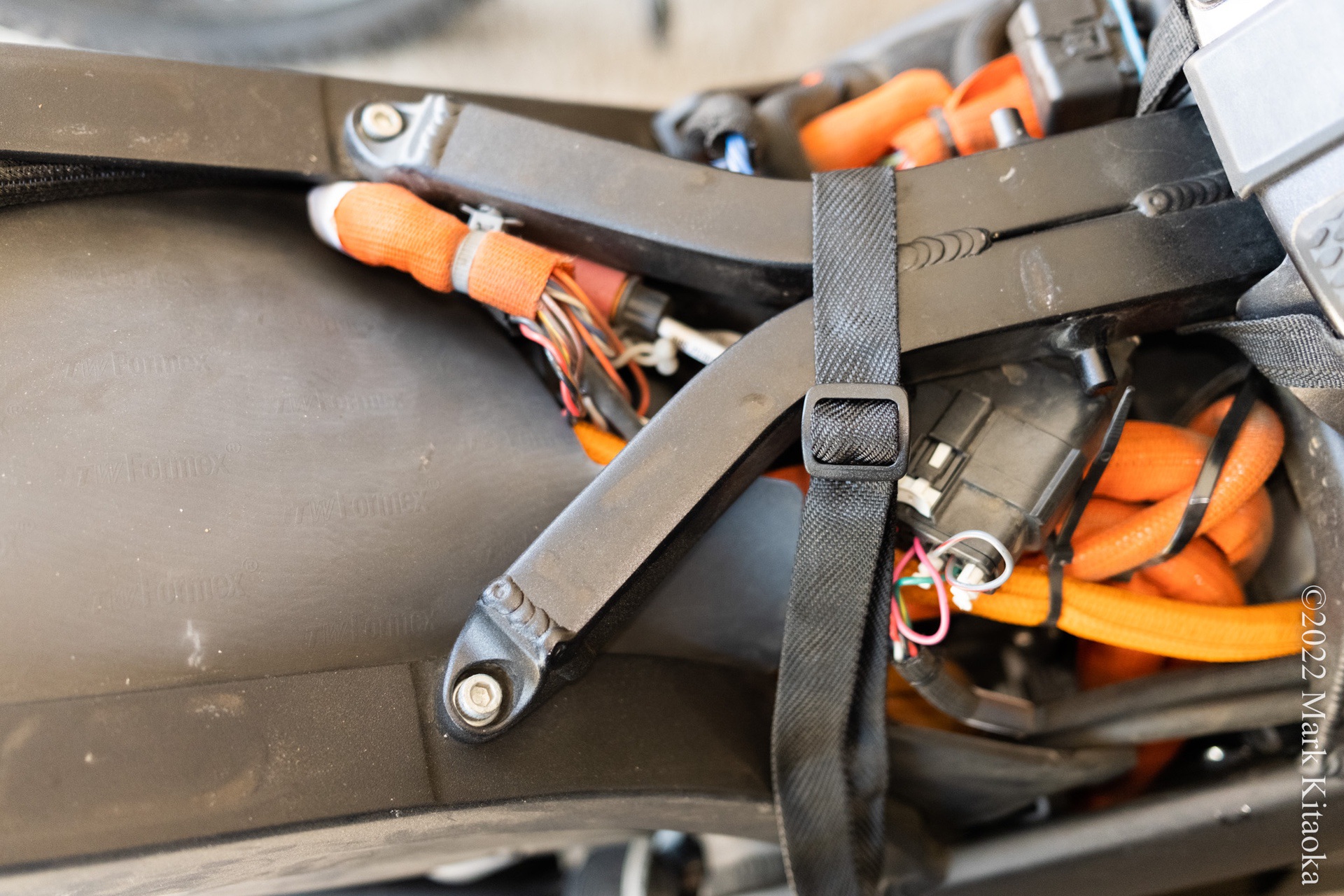
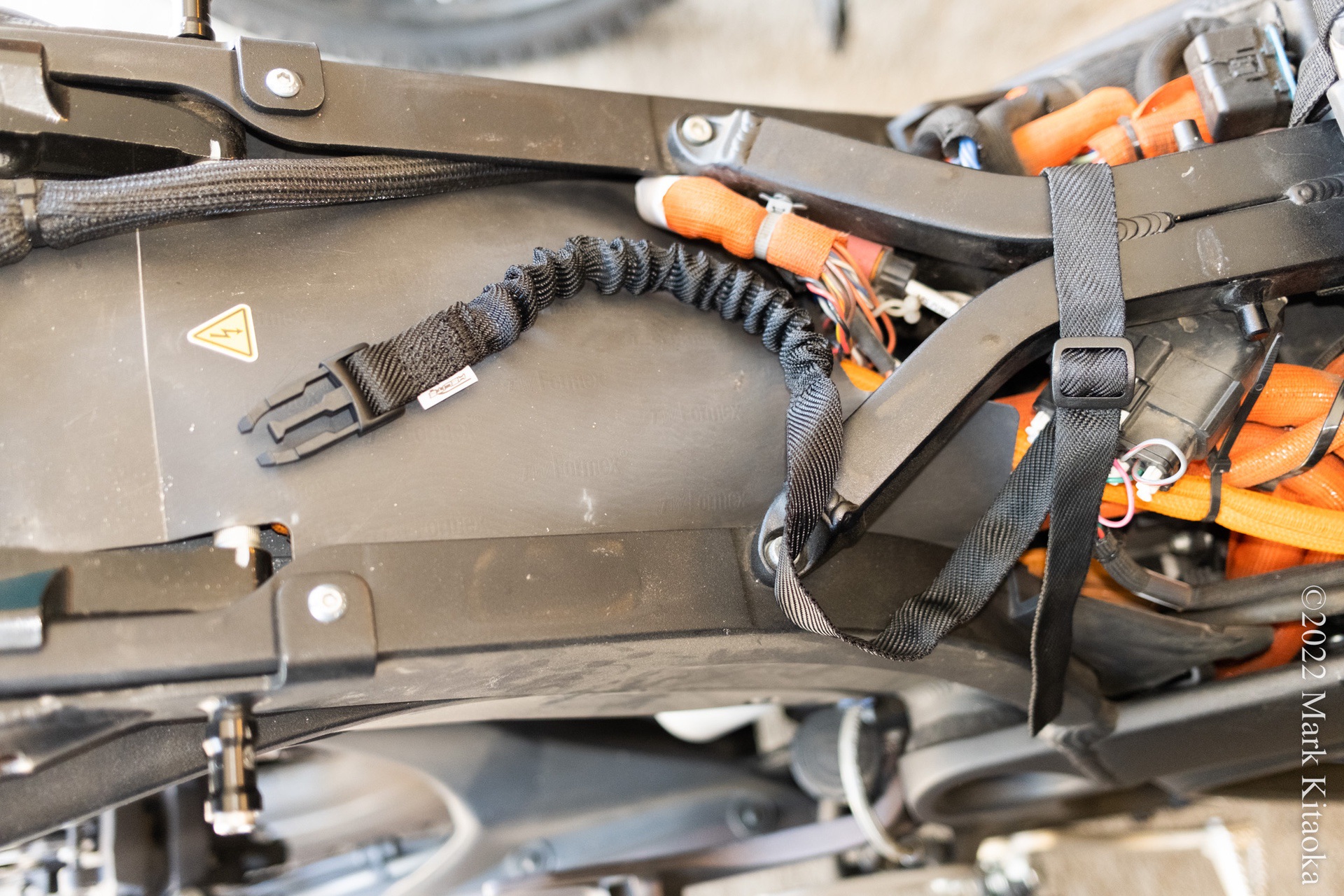
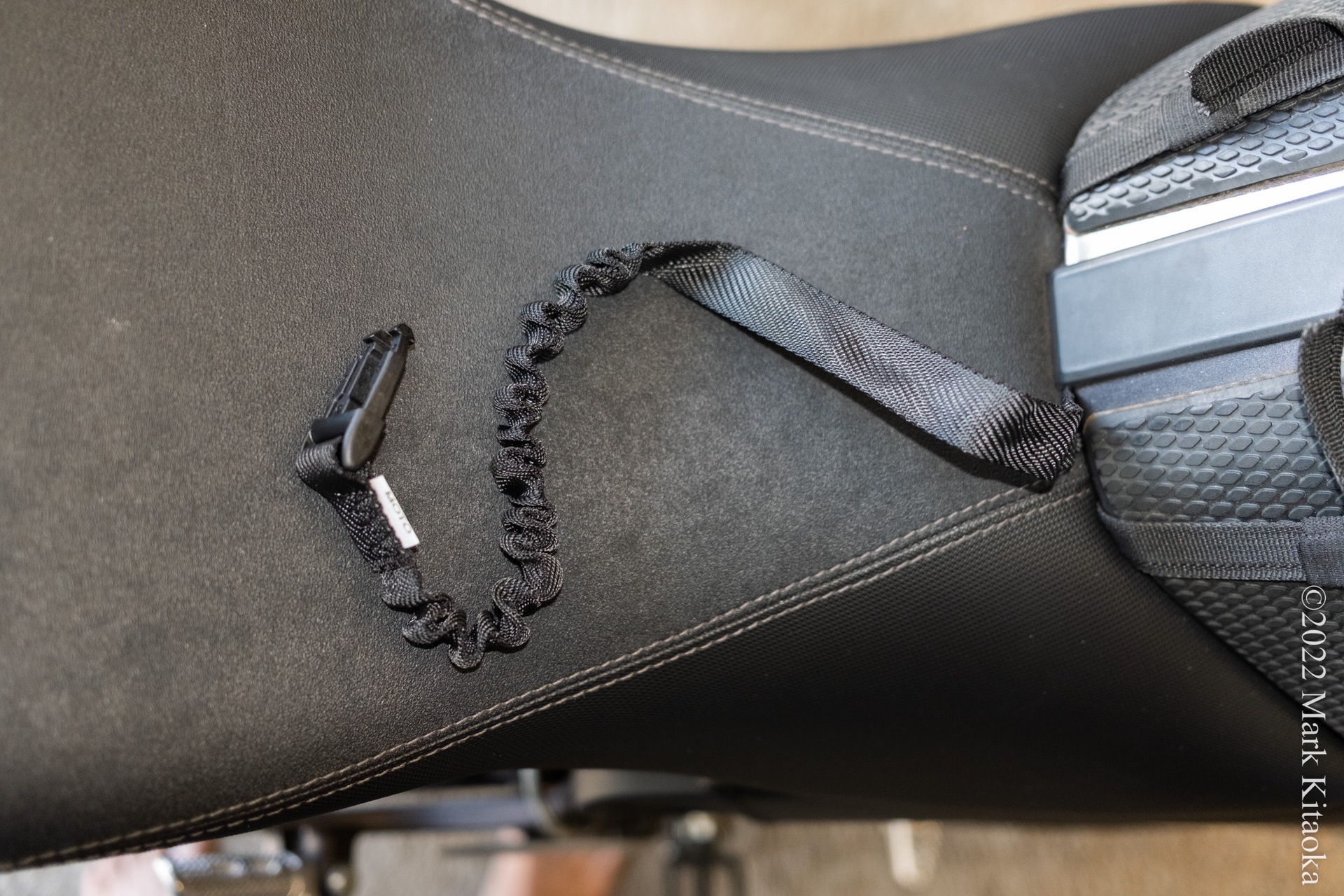
Since I use a dual sport strapped tank bag on my bike, I can store the tether this way when I’m not using it.
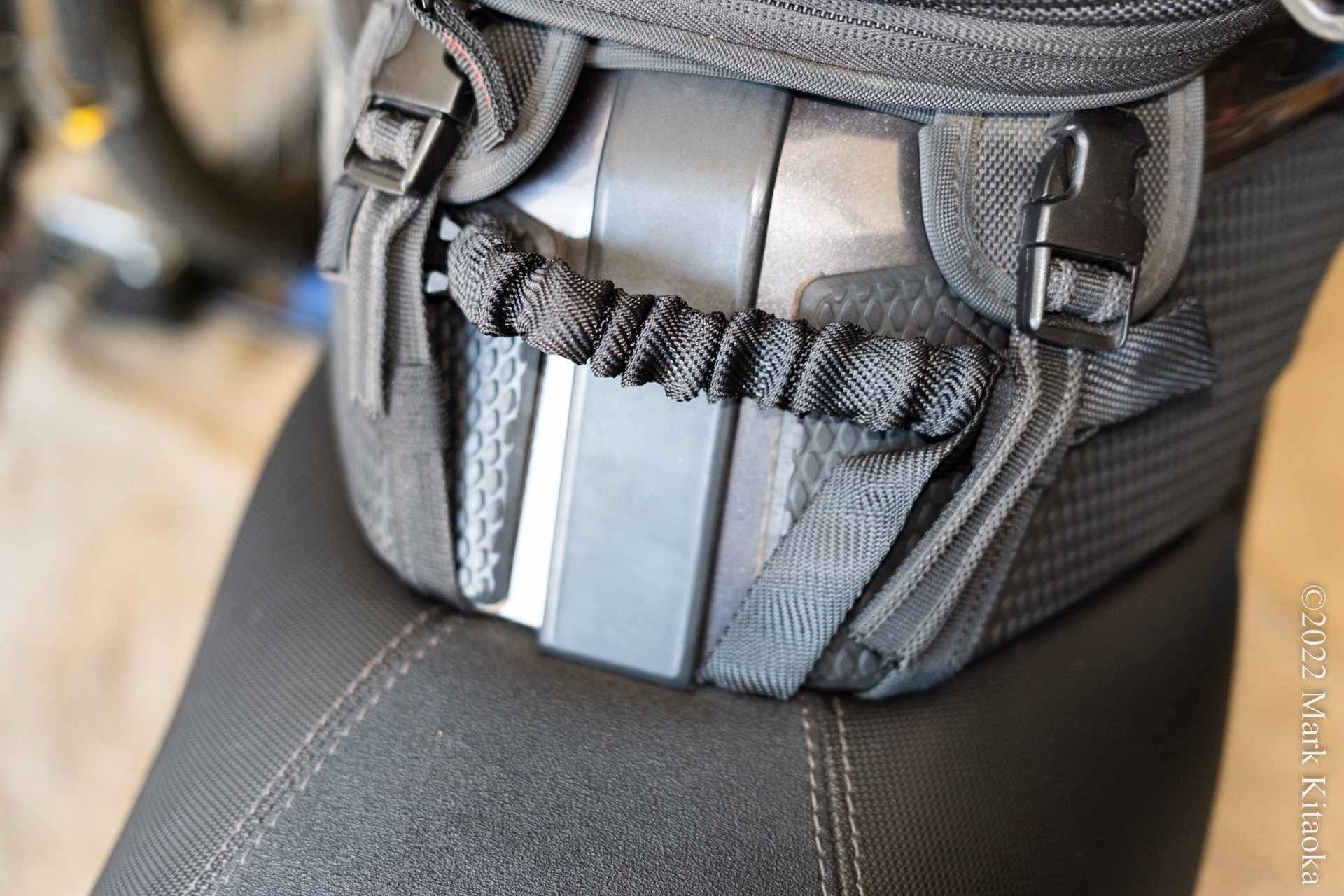
Push the female end of the lanyard clip through the vent hole in the right-side flap. Open the right-hand flap. It’s best to adjust the length of the velcro straps before installing the CO2 canister on the right side. Once the canister is installed, it’s tough to get your fingers under the vessel to lift the velcro strap. So adjust the size of your straps first.
And as with all threaded things, be sure to not cross thread the canister as you screw it into the airbag’s housing. Conventional threads, ‘righty tighty, lefty loosey’, finger tight.
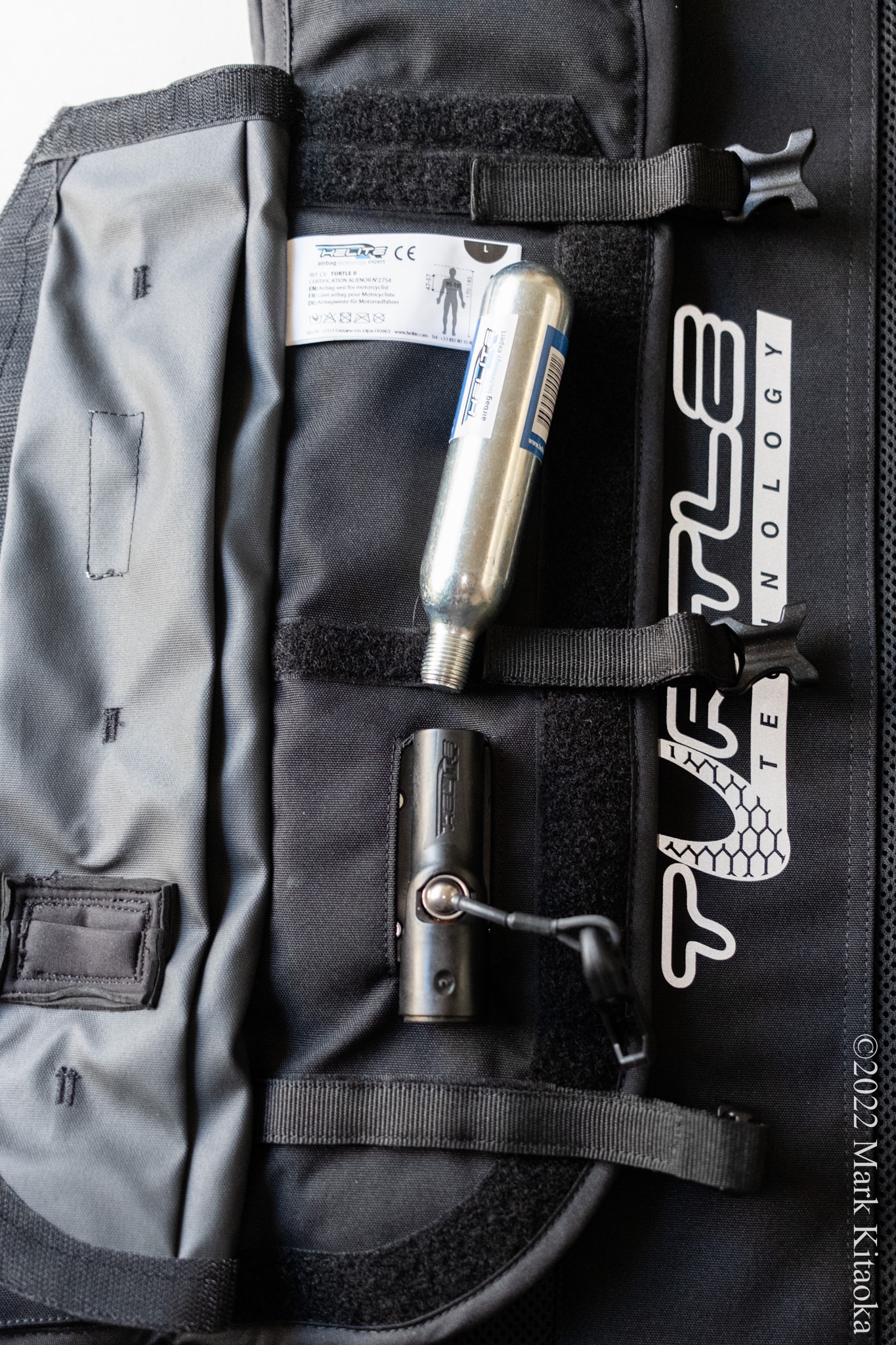
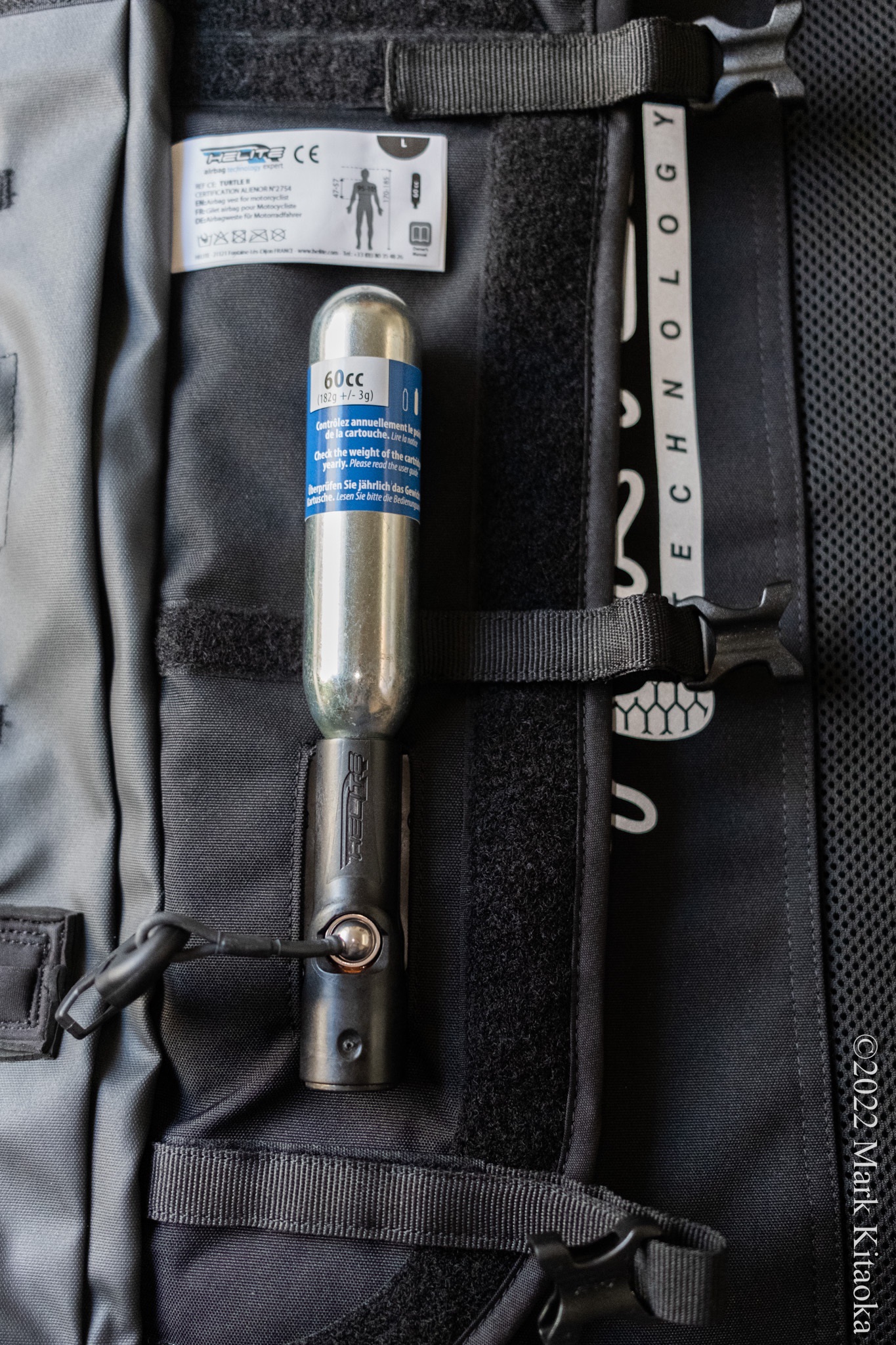
Thread the female end of the lanyard attachment clip back through the flaps vent hole.

Close the right hand flap over the canister.

I noticed that once I inserted the CO2 cartridge the Helite logo patch appears in between the small seams on the right-hand side panel. Not sure if this is intended, but a cool way to check that the canister is installed. Of course, just feeling for the bulge in the panel works too. I just appreciate small details.
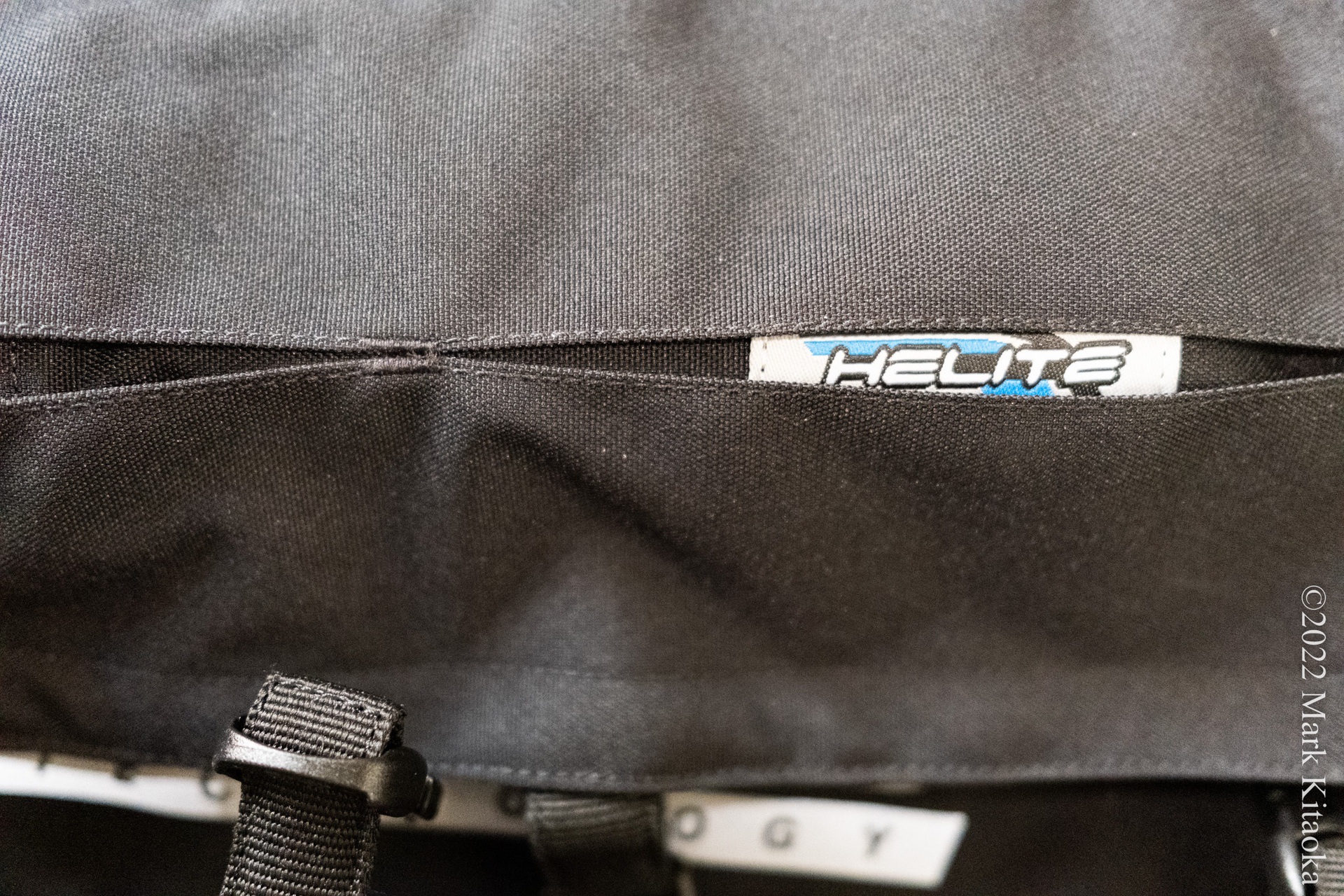
I wanted to examine the mechanism after the HT2’s trigger was deployed. Here are Helite’s instructions to perform that operation, along with their company’s video:
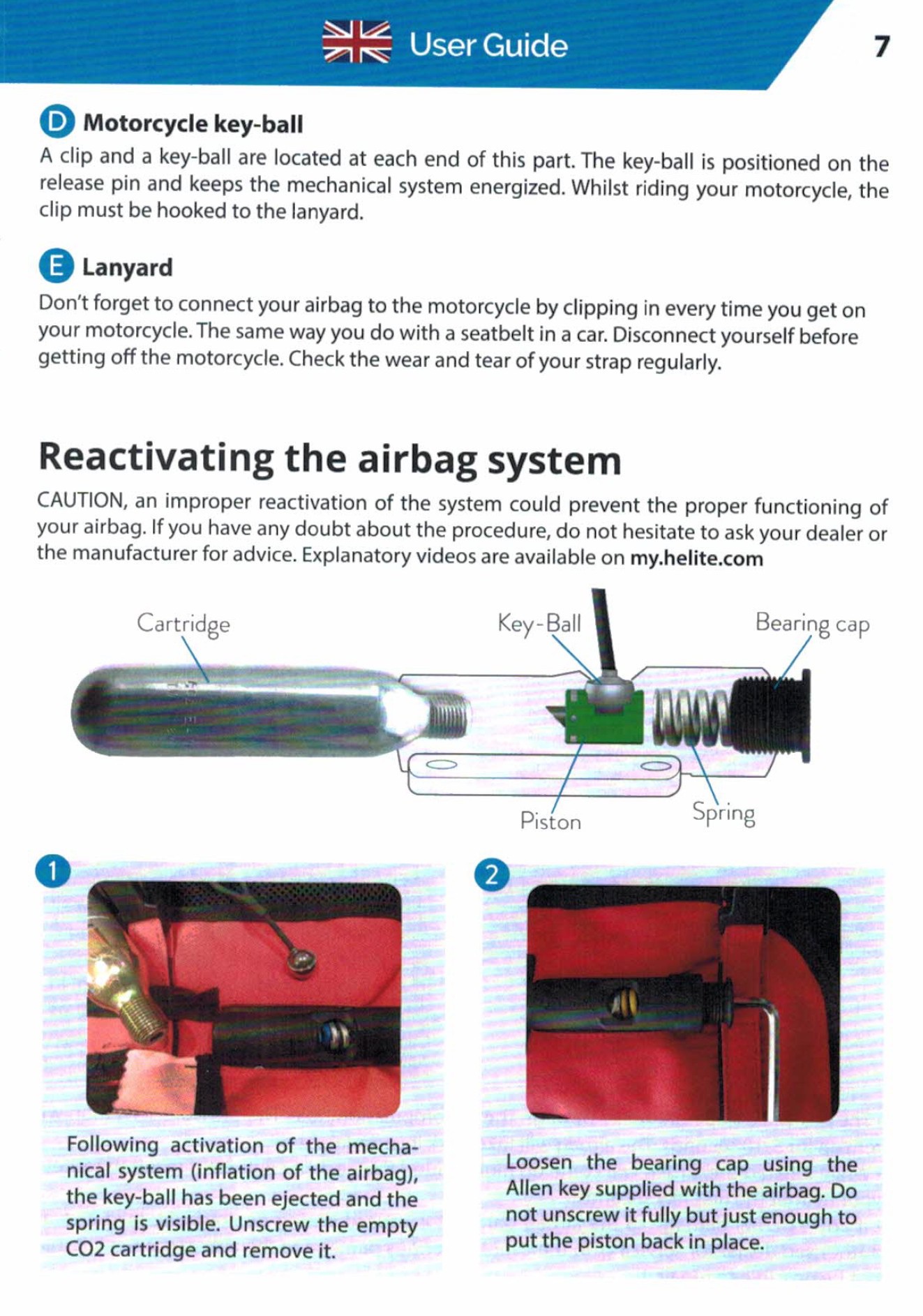
Helite’s video on how to install a new CO2 cartridge:
Here is how the CO2 canister appears after being pierced:
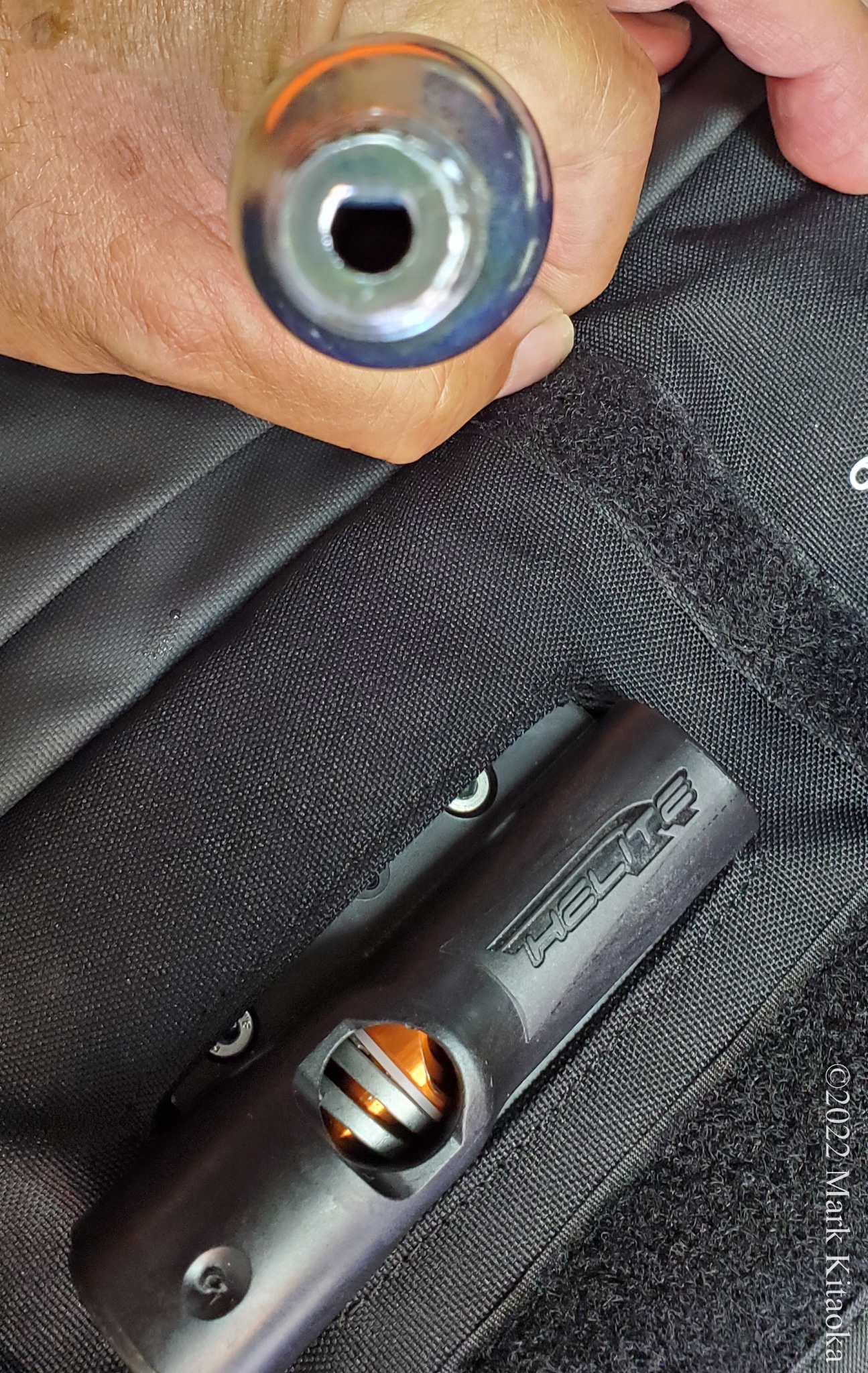
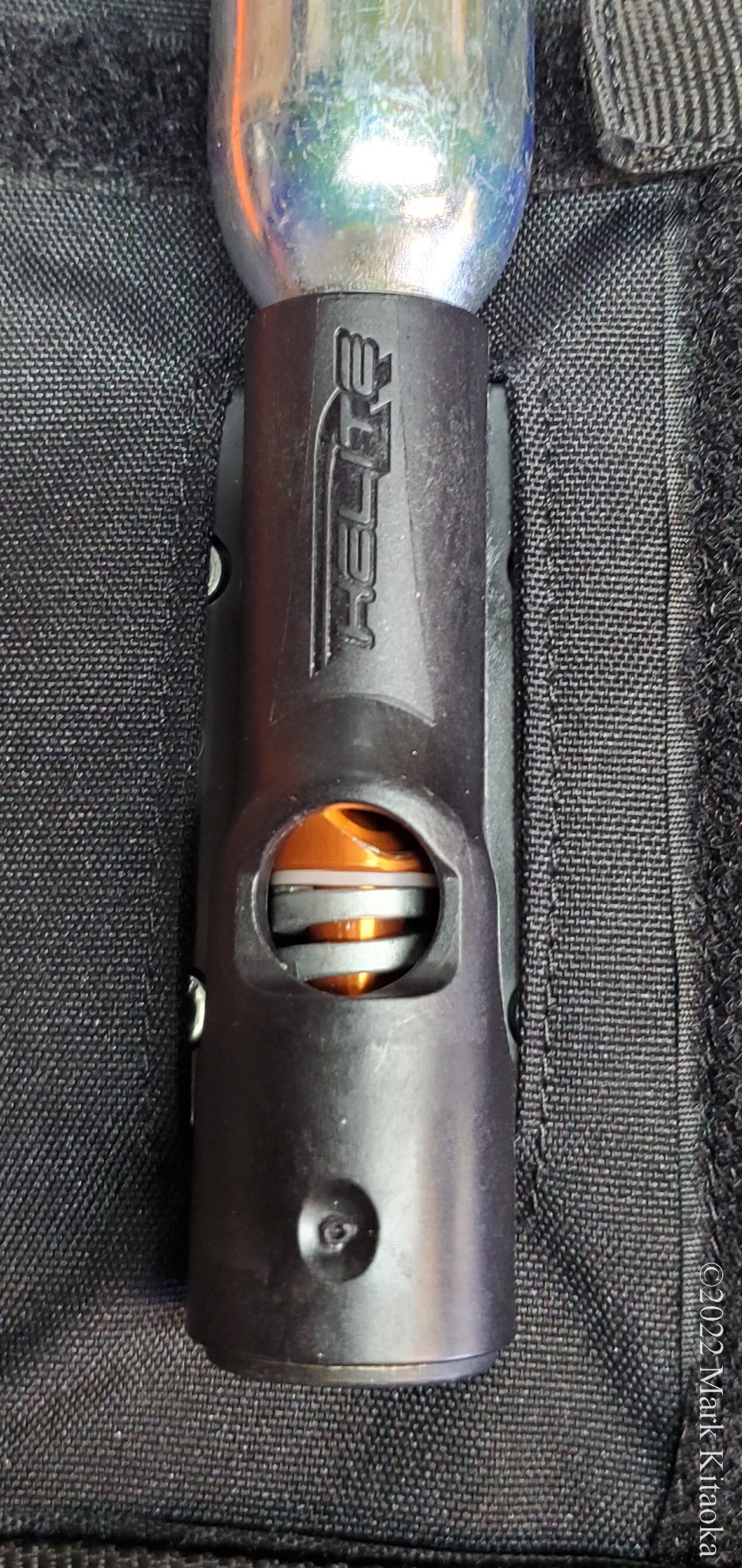
After removing the pierced CO2 canister, this is how the trigger mechanism appears. The ball and exterior ball frame are out of the trigger housing and the trigger spring appears where the ball and ball’s frame resided before deployment.
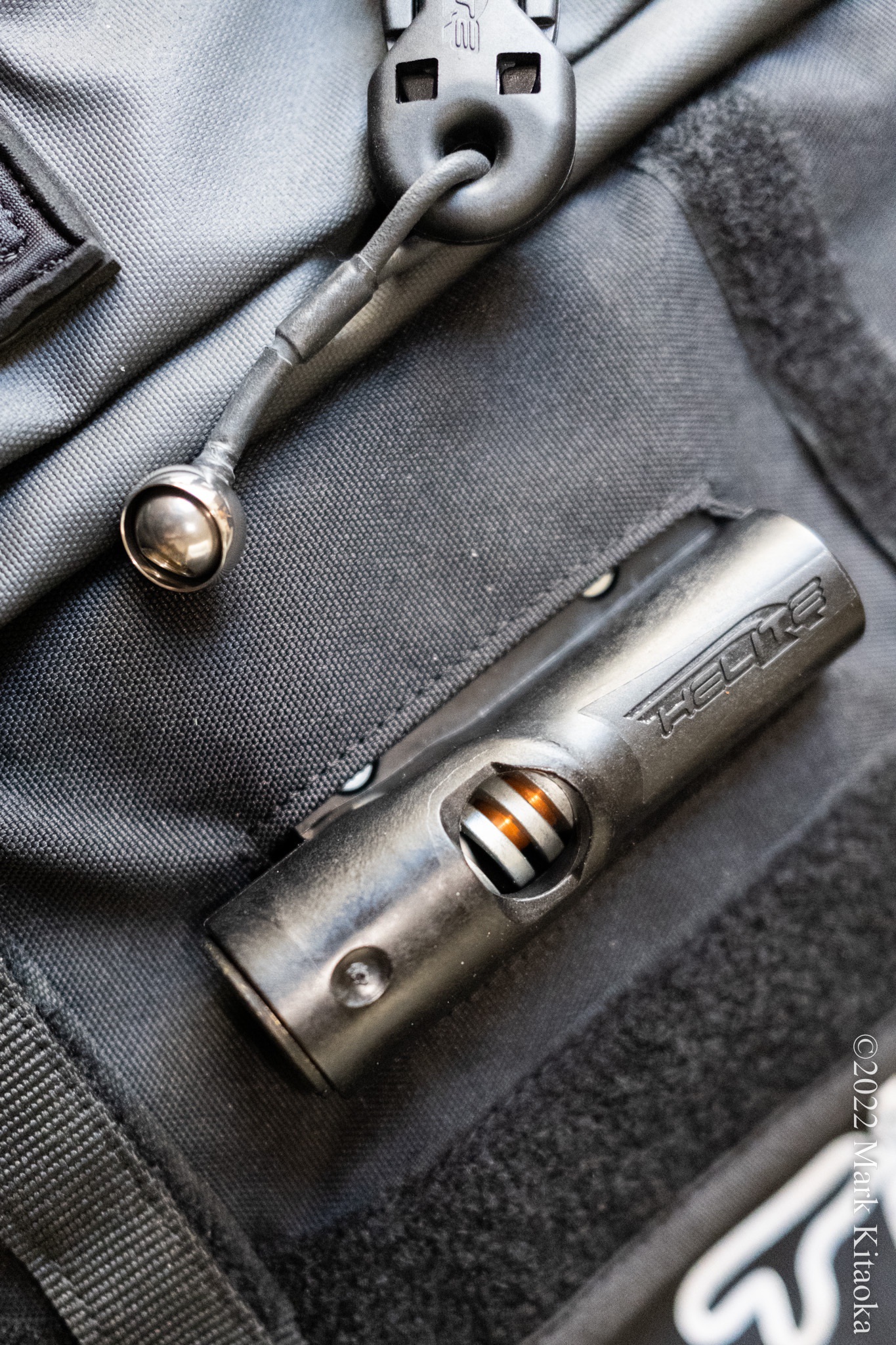
Here are all of the pieces for the user serviceable canister replacement:
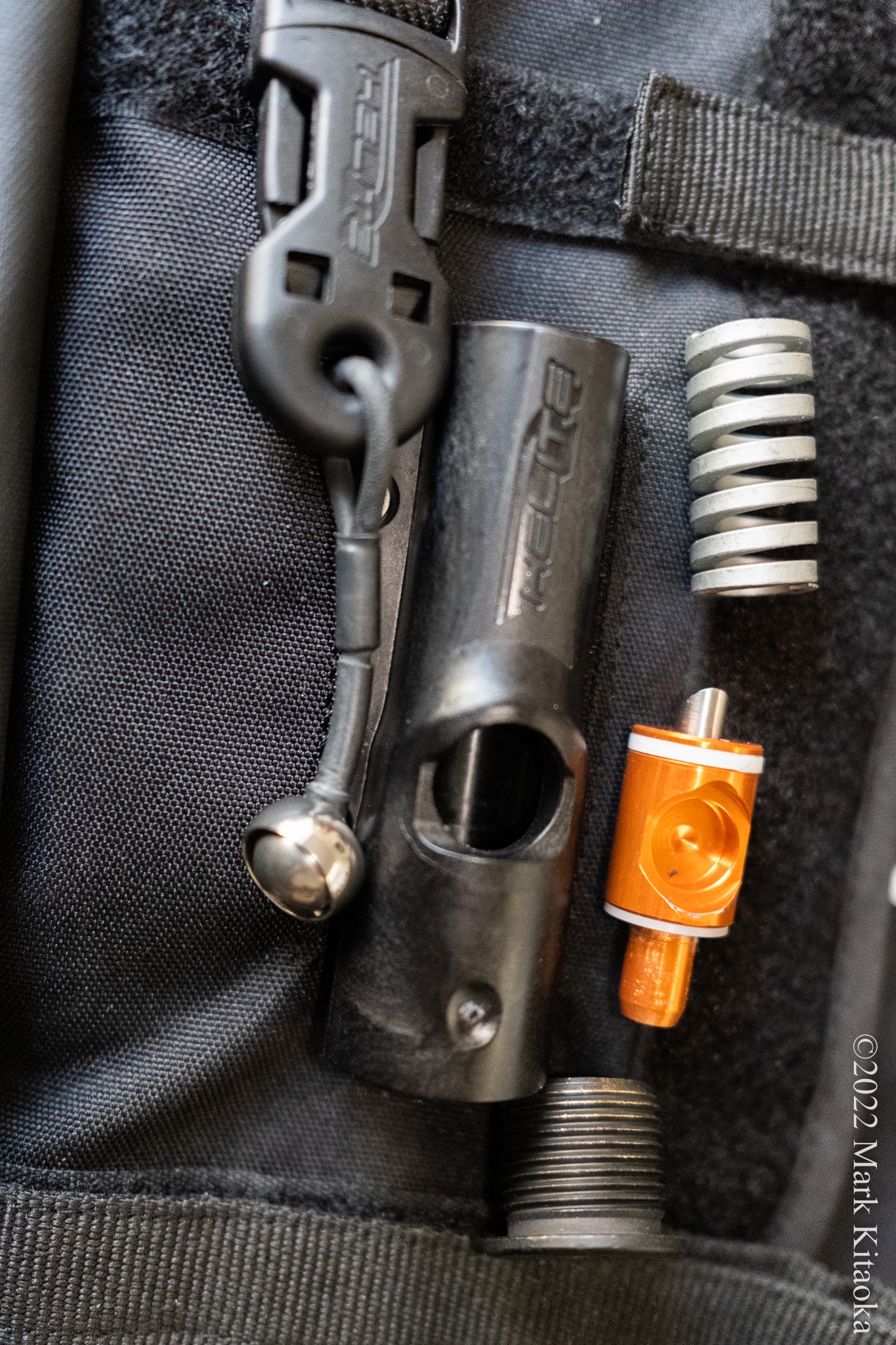
Canister piercing trigger:
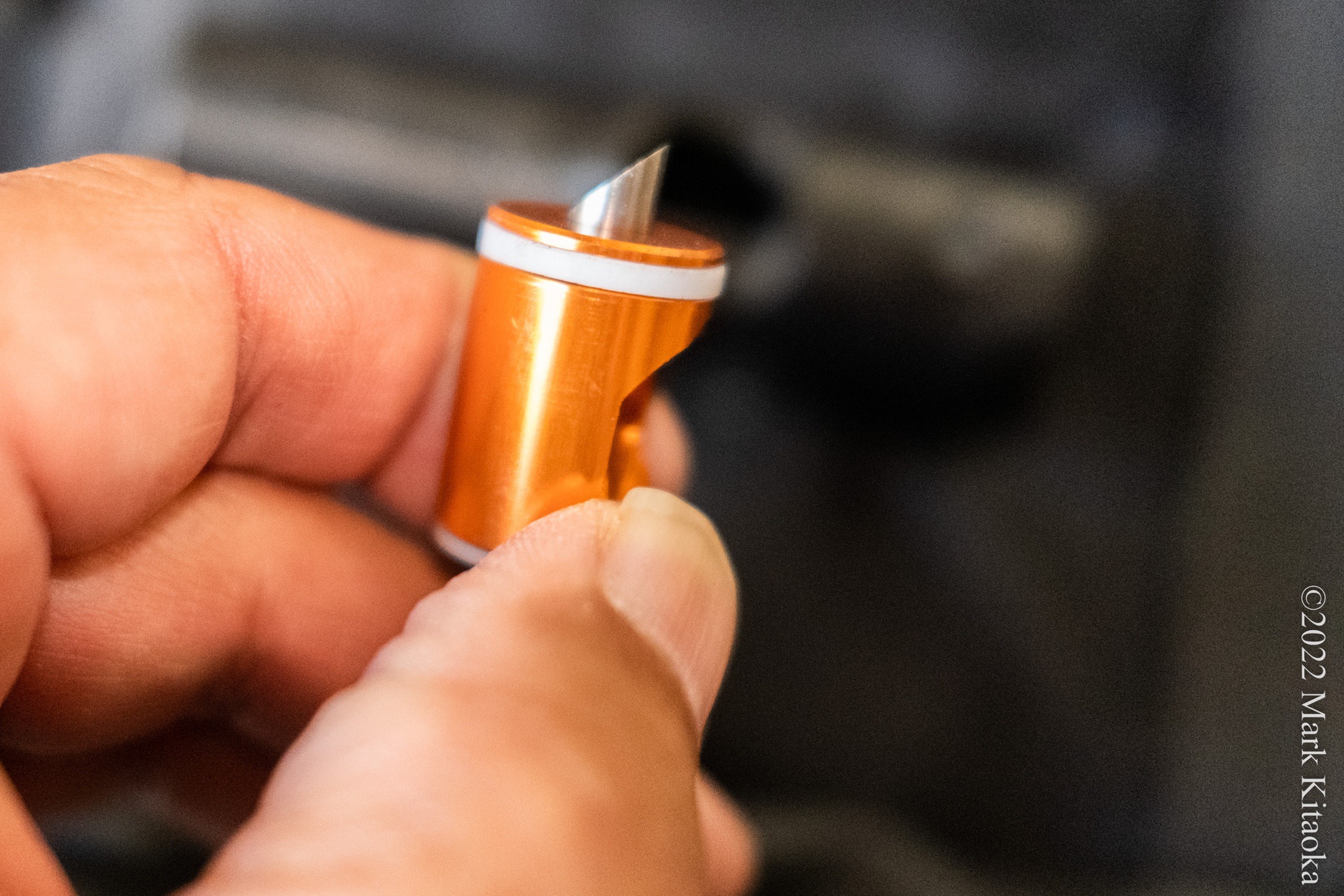
Ball tether pull:
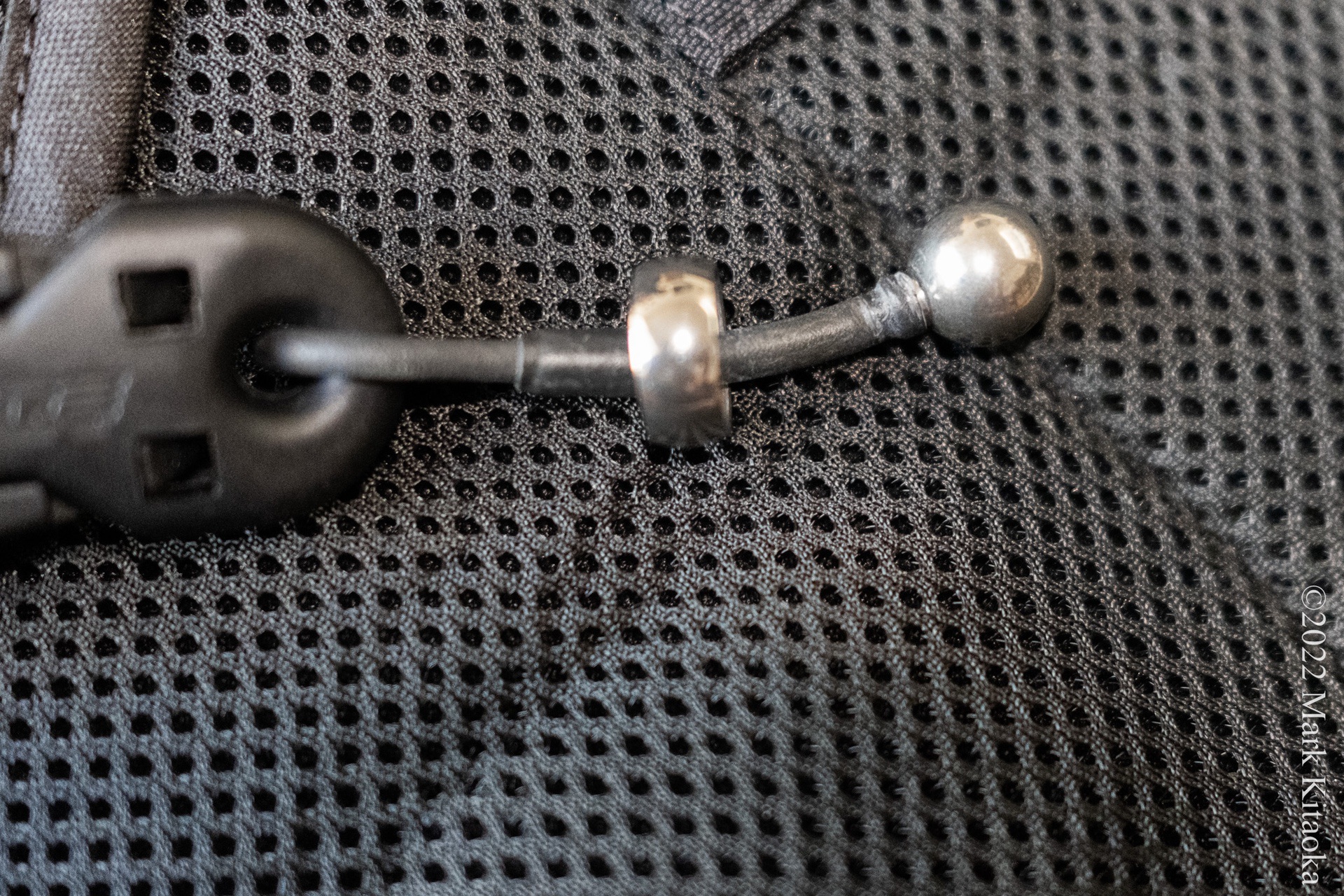
Trigger spring:
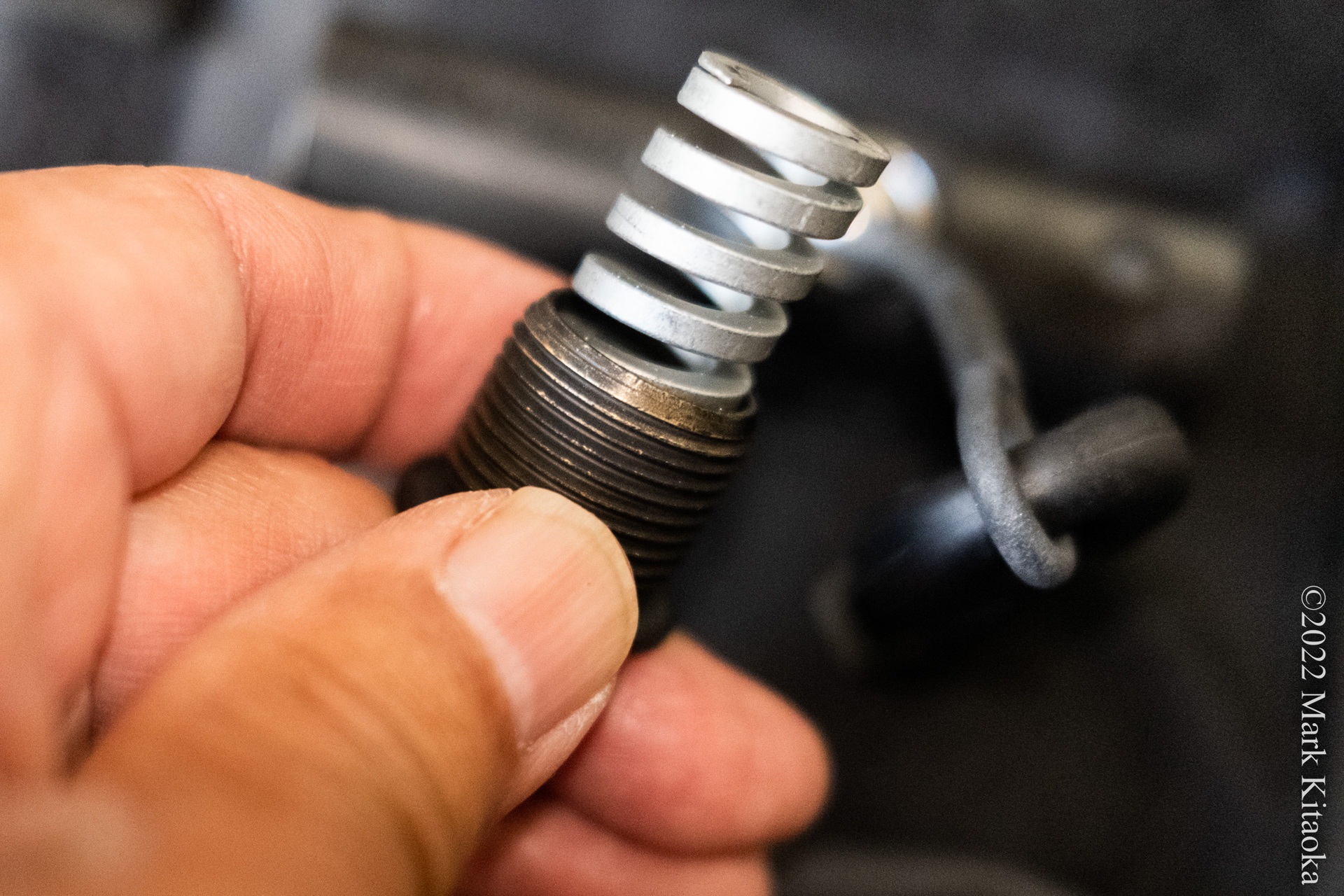
Place the 5mm hex wrench into the housing’s hex space.
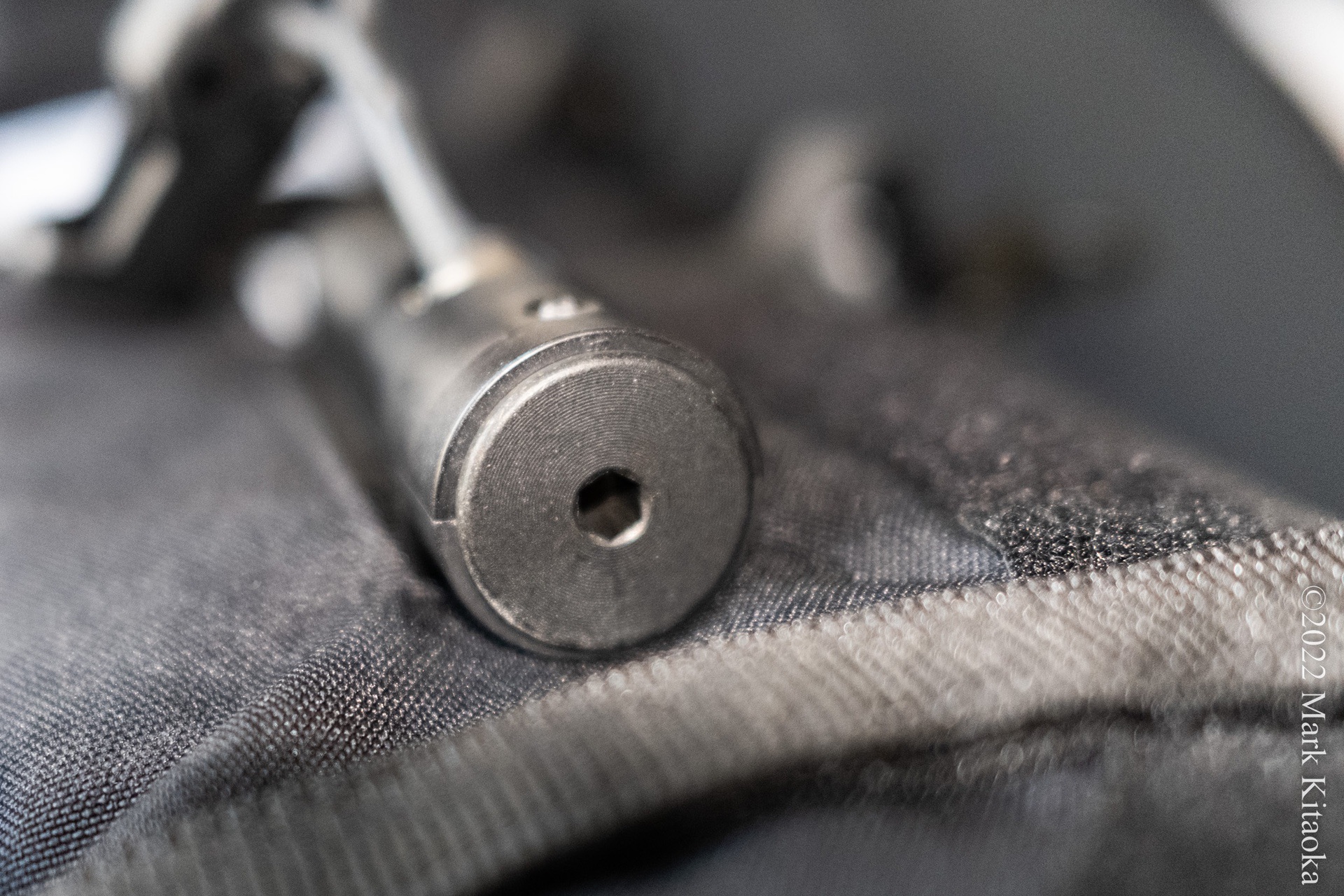
Use the 5mm hex wrench to loosen the bolt. Helite recommends that you do not completely remove the bolt like I did. I just don’t listen; ask my ex-wife.
You can push the piercing trigger down from where the canister is inserted, either with your finger or the hex wrench.
Once the trigger plunger’s hole aligns with the hole in the housing, reinsert the ball and its frame. Be sure the ball frame is square against the housing.
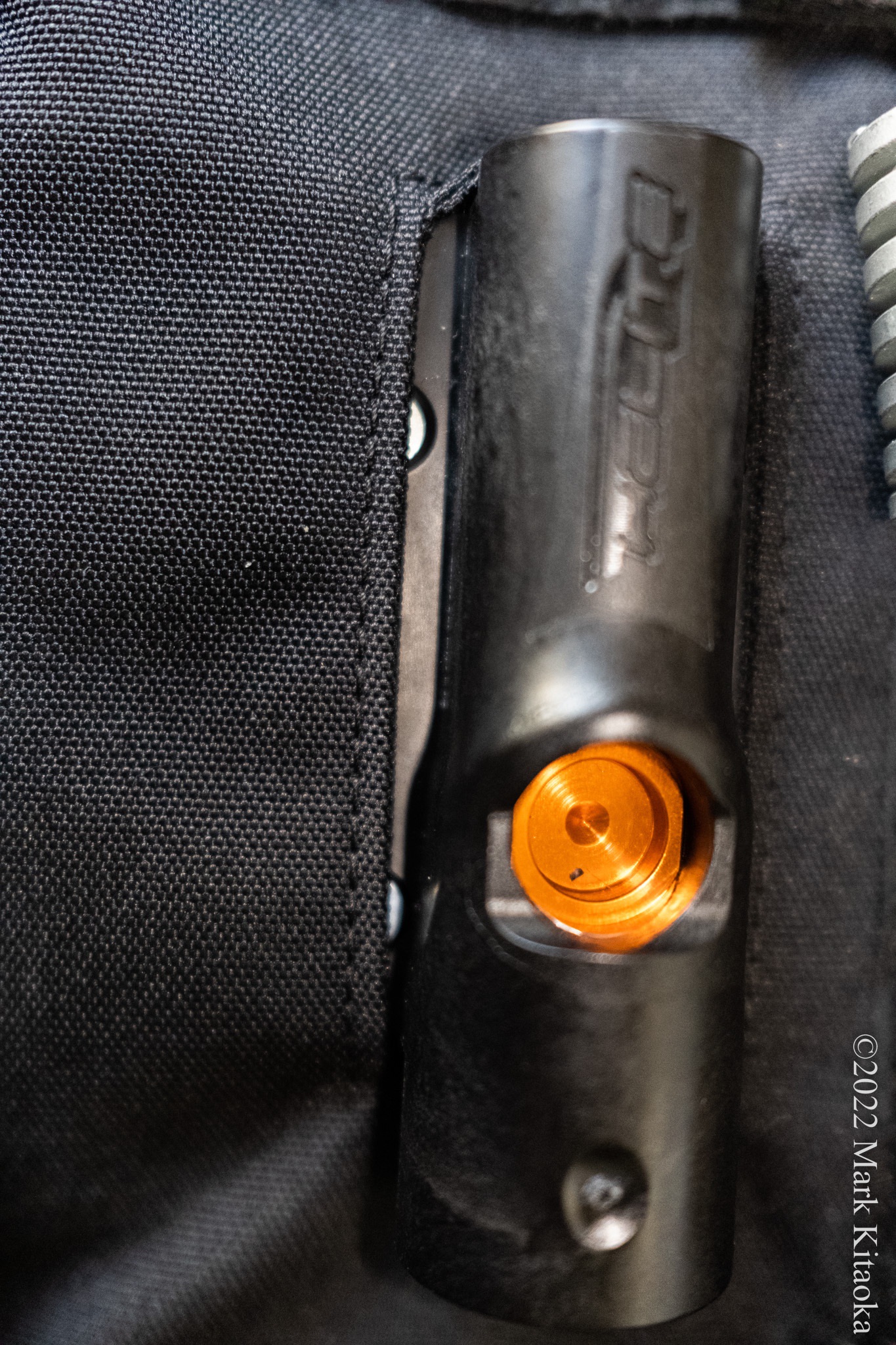
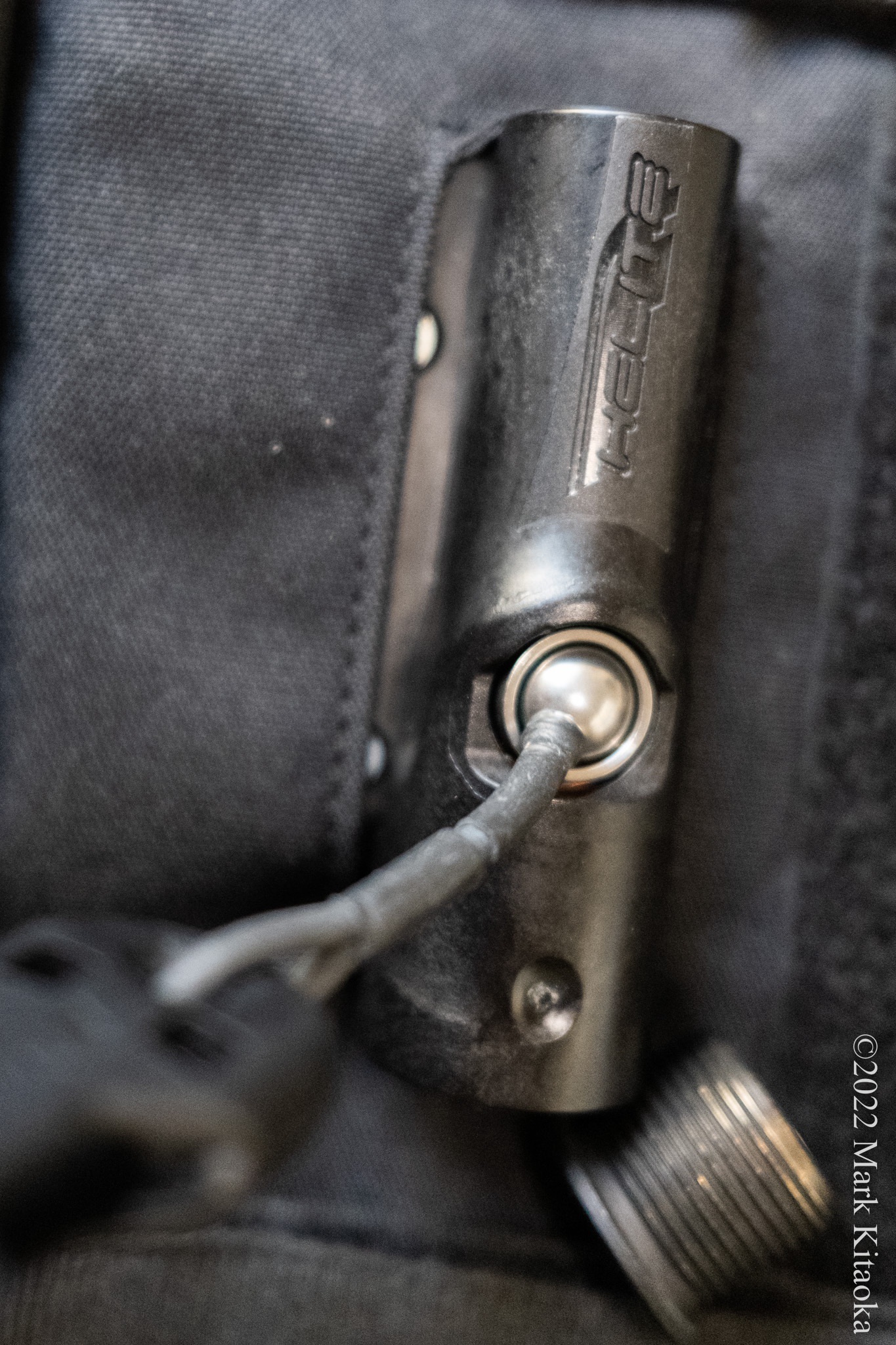
Using your thumb to hold the ball and its frame into the housing, insert the spring into the housing bolt’s hollow portion and thread it back into the trigger housing.

I found that by folding the lower portion of the vest up out of the way it’s much easier to continue to tighten the bolt using the longer end of the hex wrench. Don’t gorilla tighten the canister bolt. Snug it down securely.
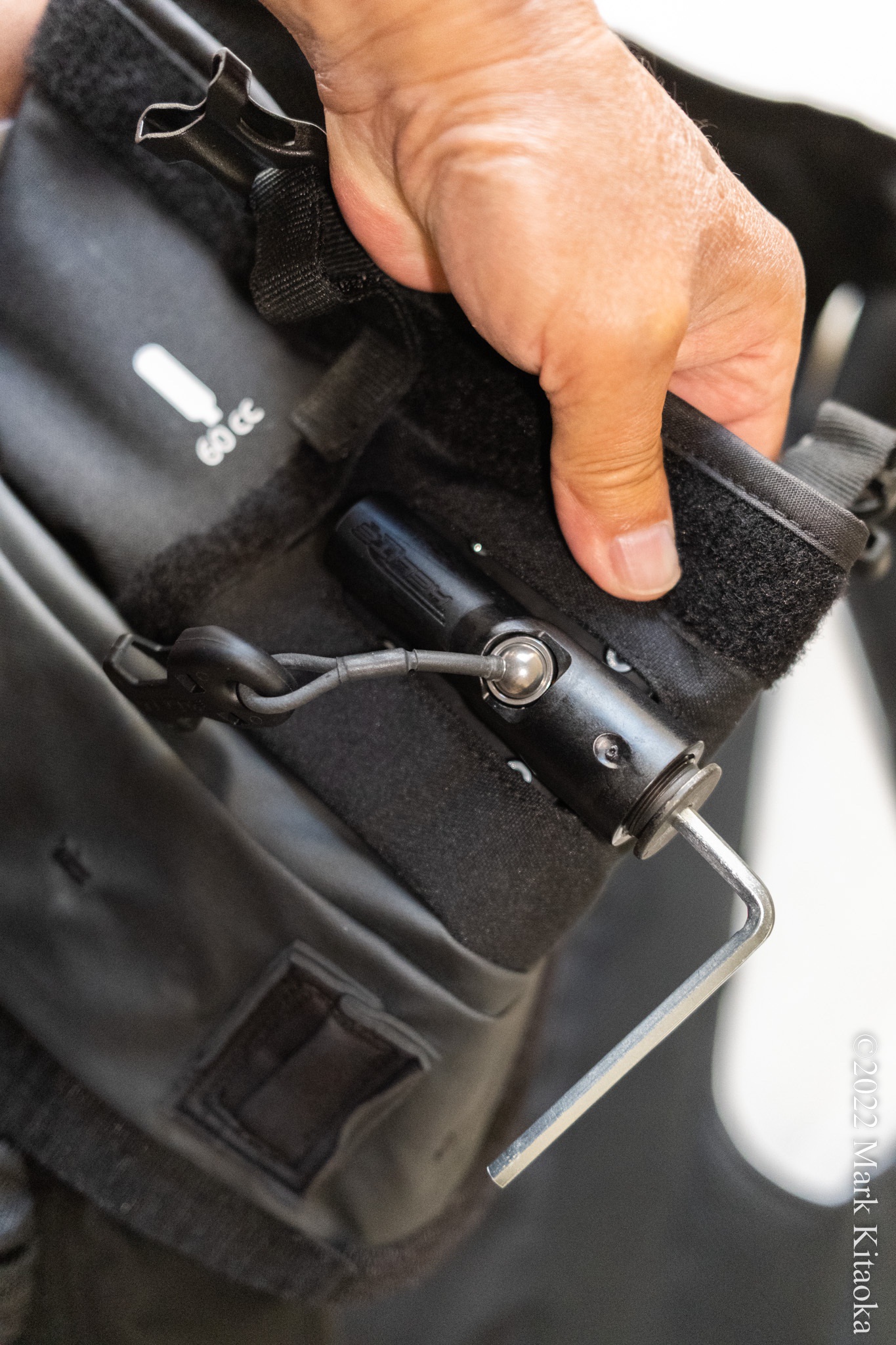
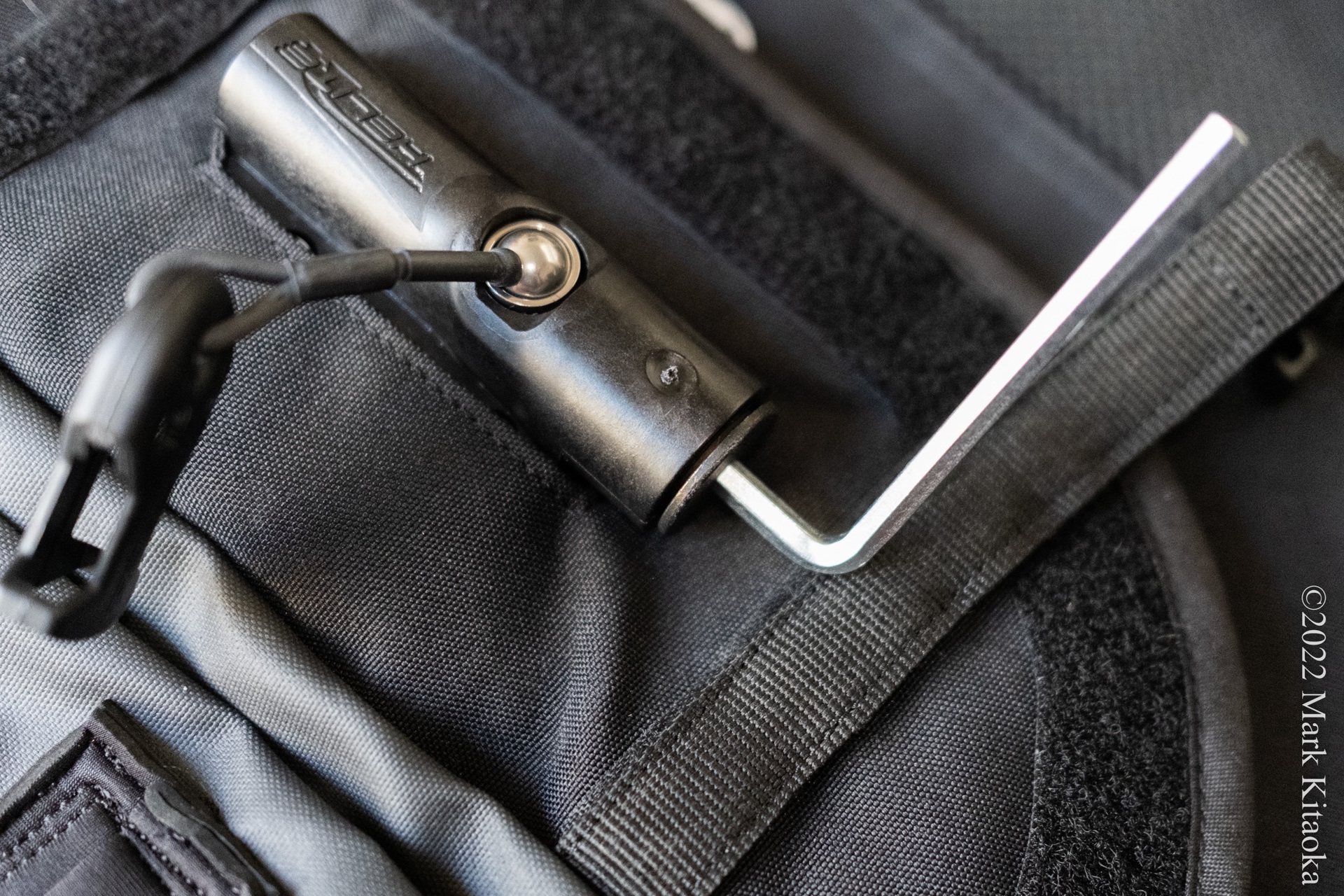
Try moving the ball lanyard around to ensure the ball moves freely and the ball’s frame remains steady. After that all you need to do is insert the new CO2 canister, thread the female buckle through and you’re all set to go.
Because the HT2 has such a wide range of adjustments via the six velcro straps, their location, and the ultra-wide side arm areas, it’s extremely comfortable. I had expected the vest to be just a tad confining or hot when worn over my numerous jackets. Nope, not at all.
I have weighed the vest with the 60cc canister. It measured 4.00 pounds. Around the weight of a helmet, but distributed over a much larger area on my body.
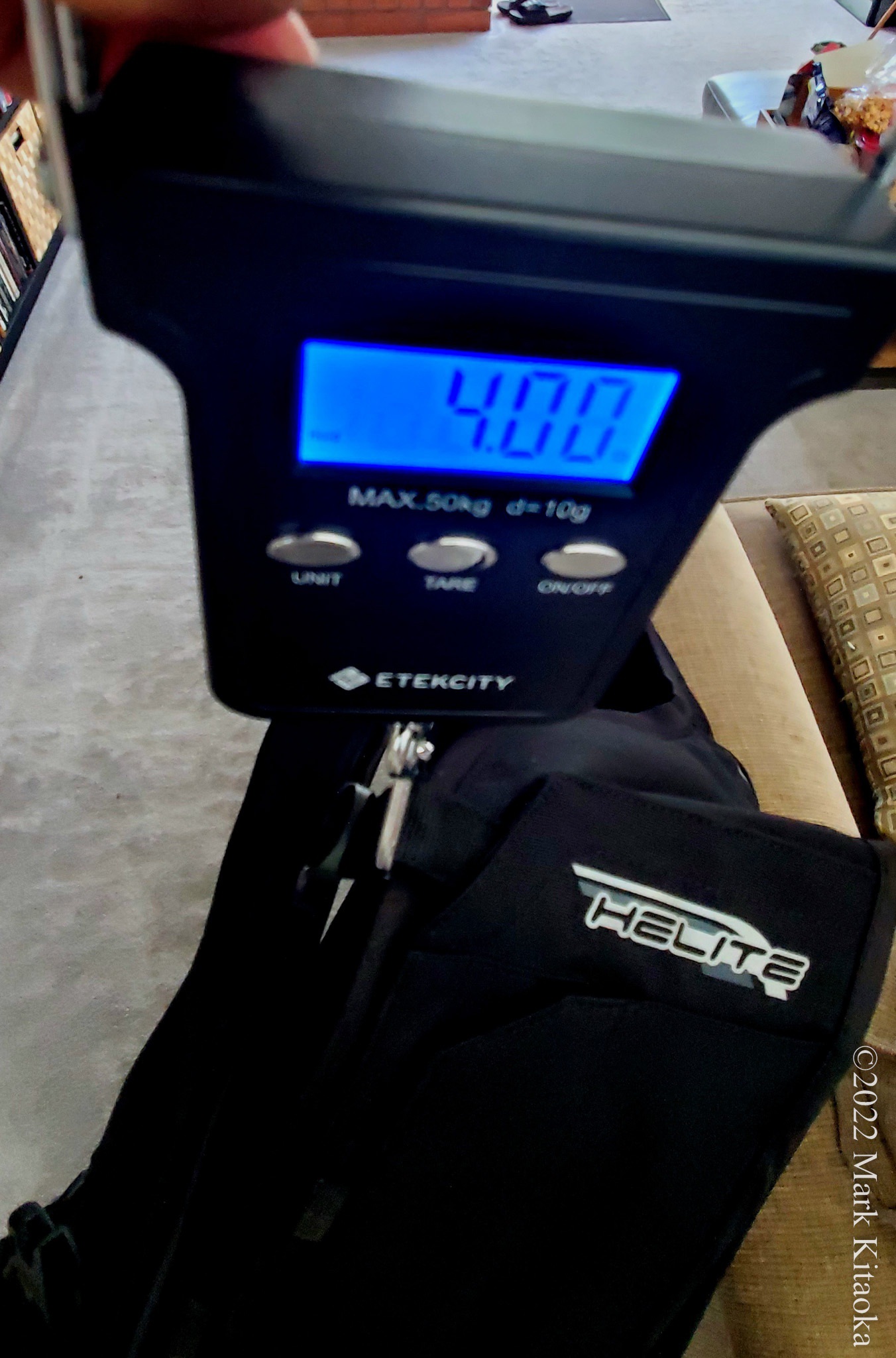
There isn’t a lot more to be said about its comfort. It’s as if you wore one of those CalTrans or construction safety vests over your t-shirt. At some point you just forget it’s there. That’s how the HT2 feels to me. And heck, I’d venture to say that if you choose their hi-viz version most would just think you’re wearing one of those safety vests. Except this one is WAY SAFER.
For those who worry about accidentally activating the HT2 by forgetting to disconnect the lanyard, I too was worried. When seat belts were first required, I rushed home because I really had to take a leak, and when I flung open the door to exit I forgot to disconnect my seatbelt. I pissed a little in my pants as the belt squeezed my stomach. I ended up just pissing in my own front yard.
Since the tether has elastic in a portion of the line, I get a tugging reminder when I have forgotten to disconnect it. Plus, Helite states that it takes 60 ft pounds of torque to exert enough force to dislodge the ball from the trigger housing. If you think about how often you torque a bolt down to 60 ft pounds it’s not often. Granted, the force would contemplate distance, but my view is that it would take a substantial accidental pull to activate the vest while purposely dismounting the bike.
The following are images after the vest has been deployed:
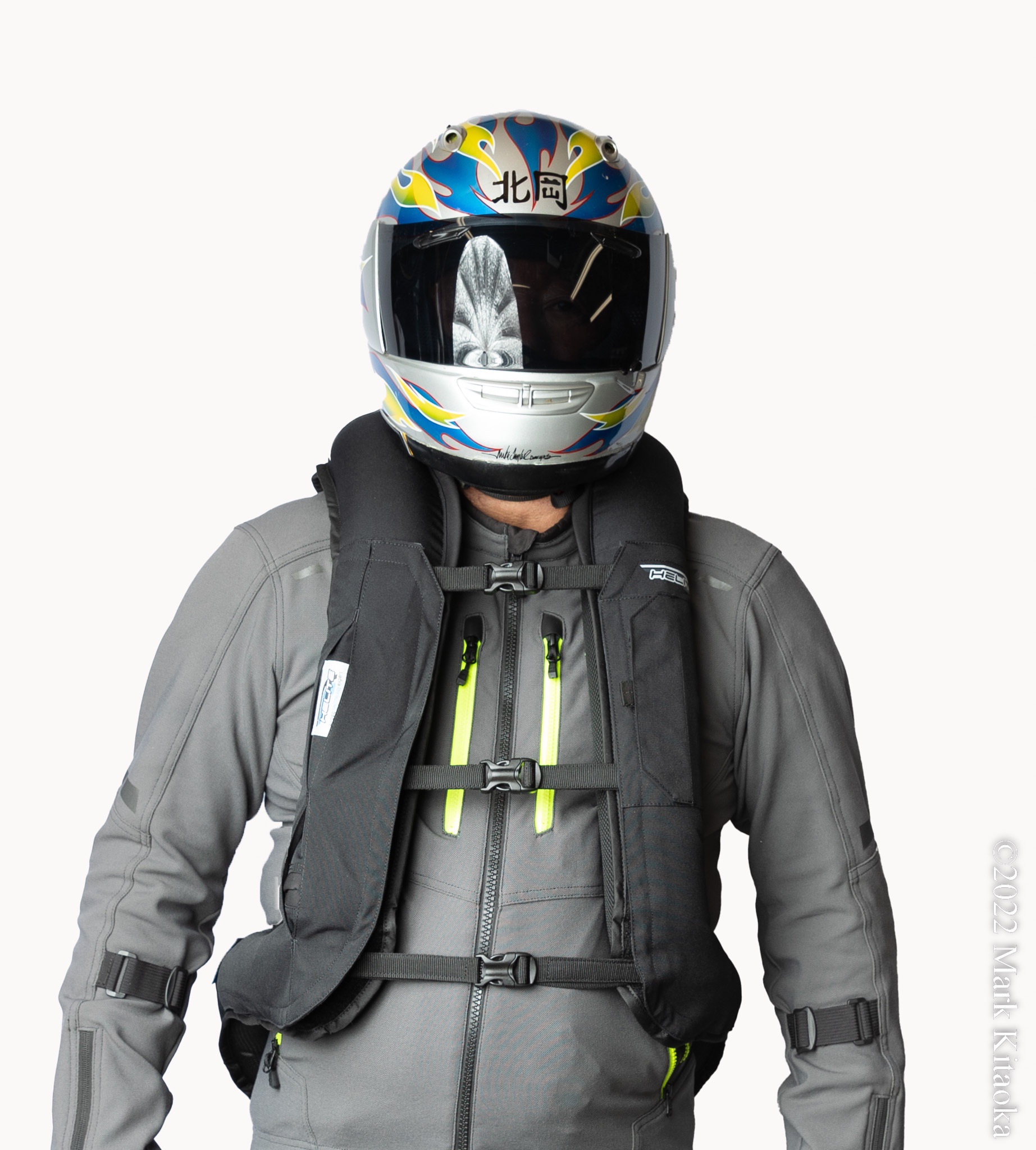
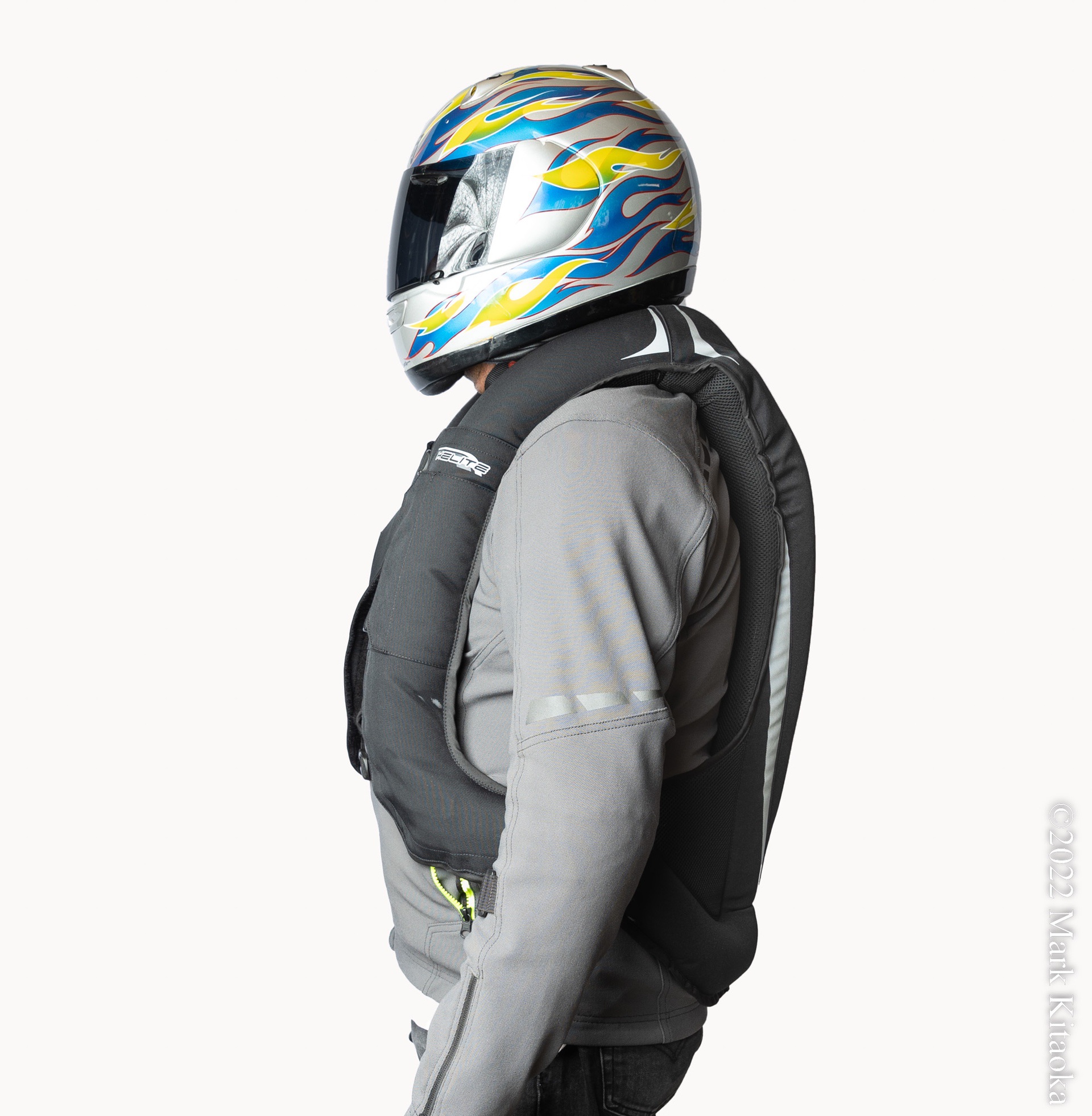
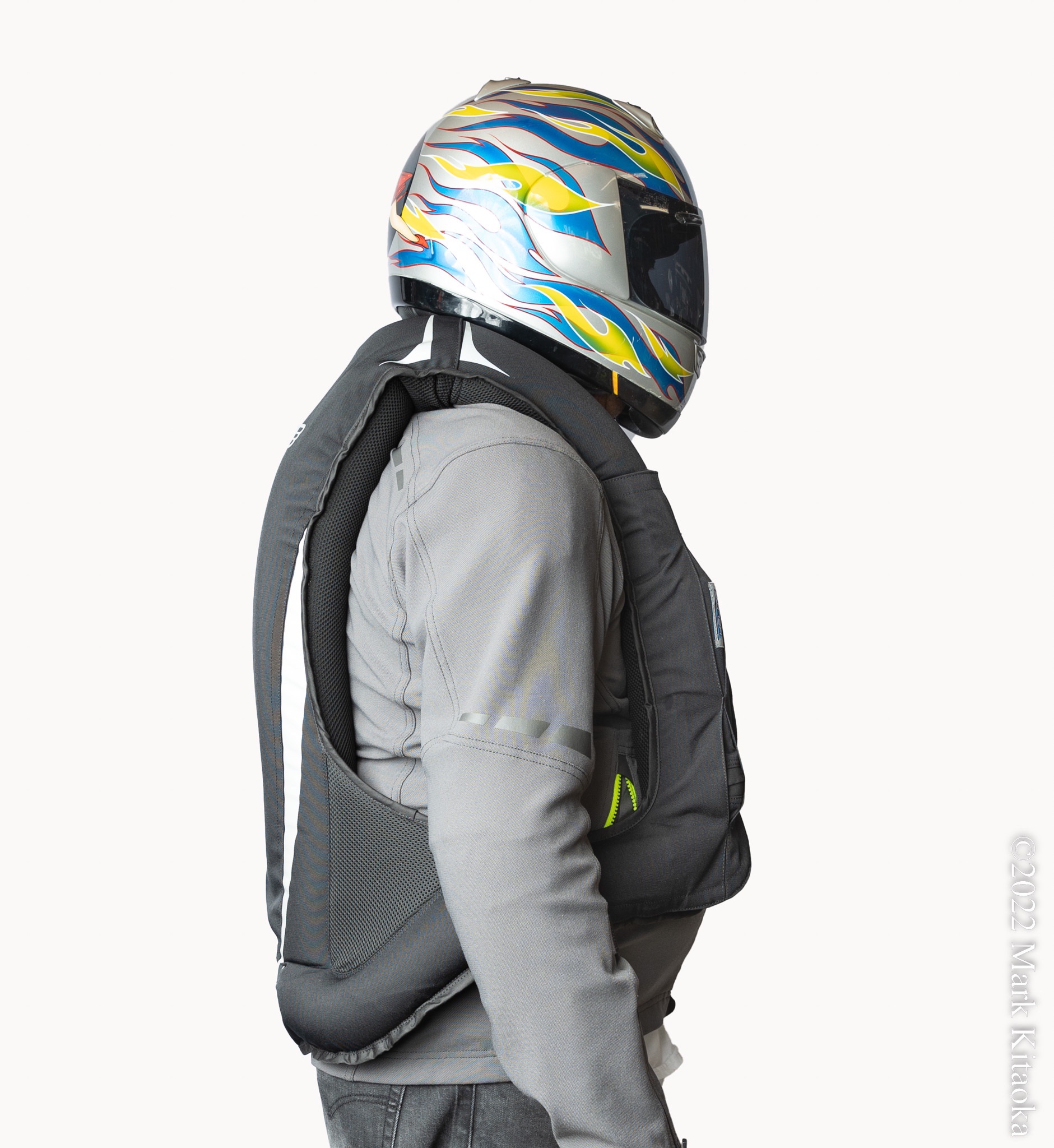
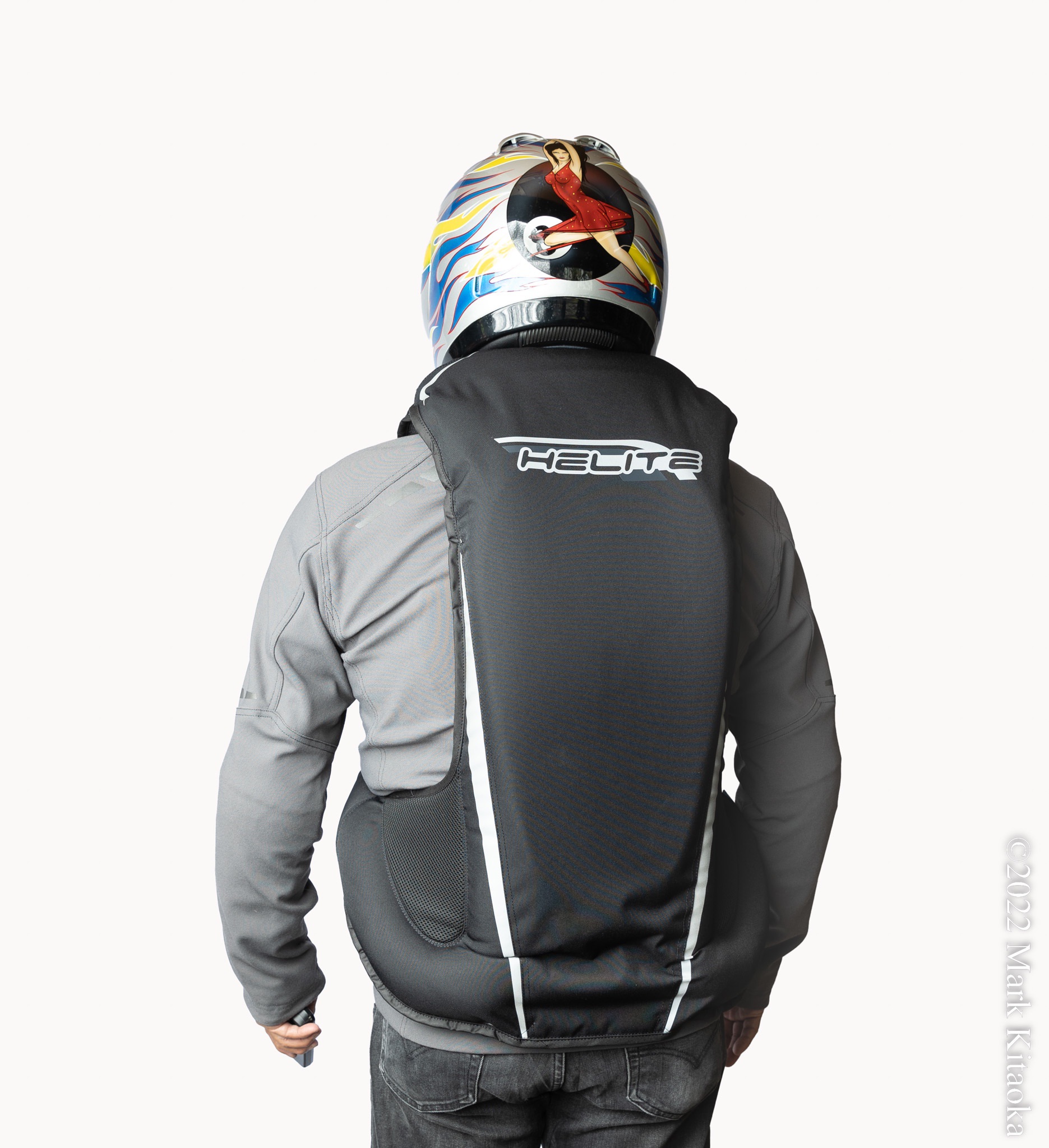
It’s very evident from these photos just how much protection is offered by the HT2 compared to other armor, be it Level 1 or 2. Here are images of the vest after I removed it and it had been deployed for 3 minutes.
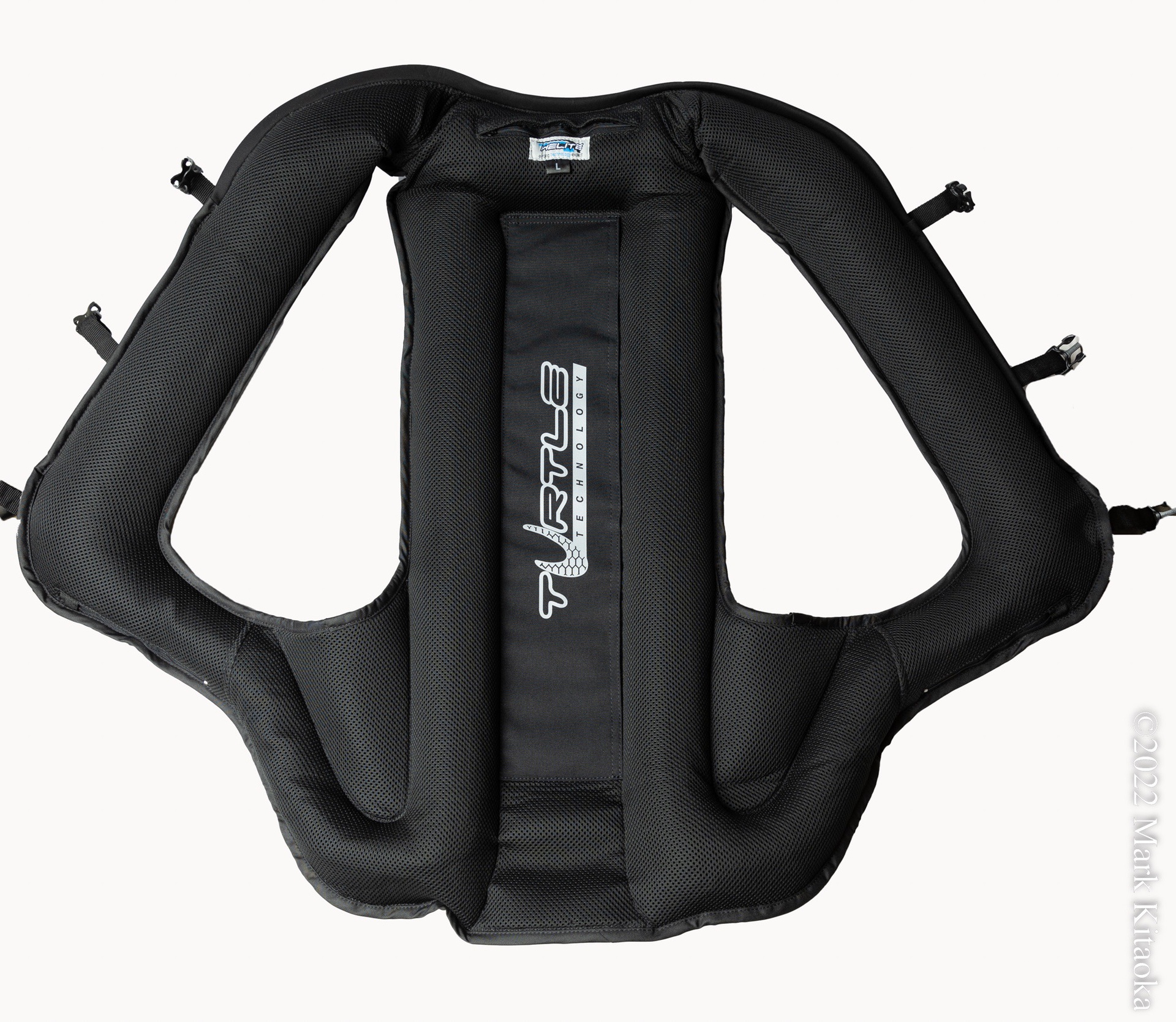
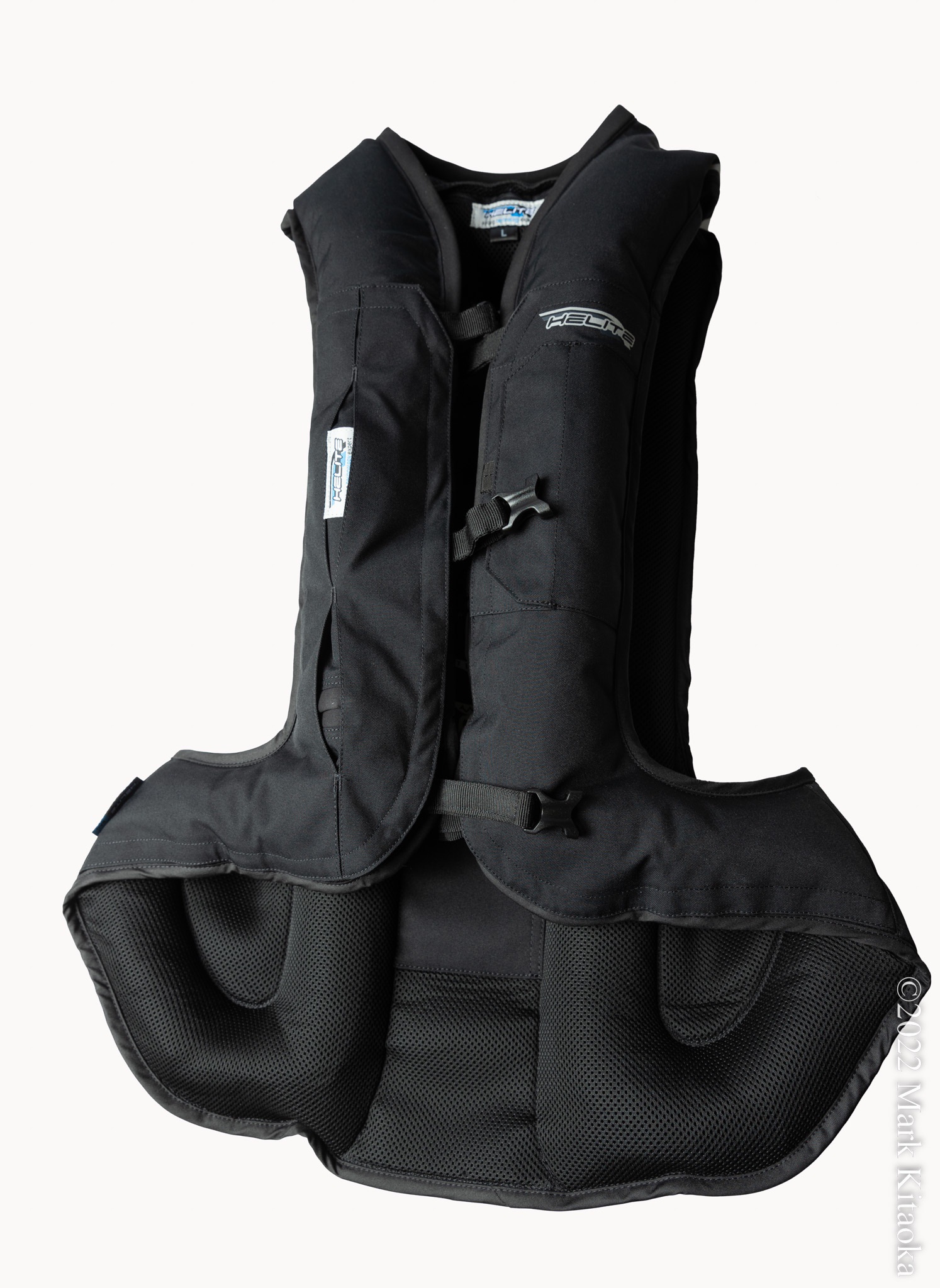
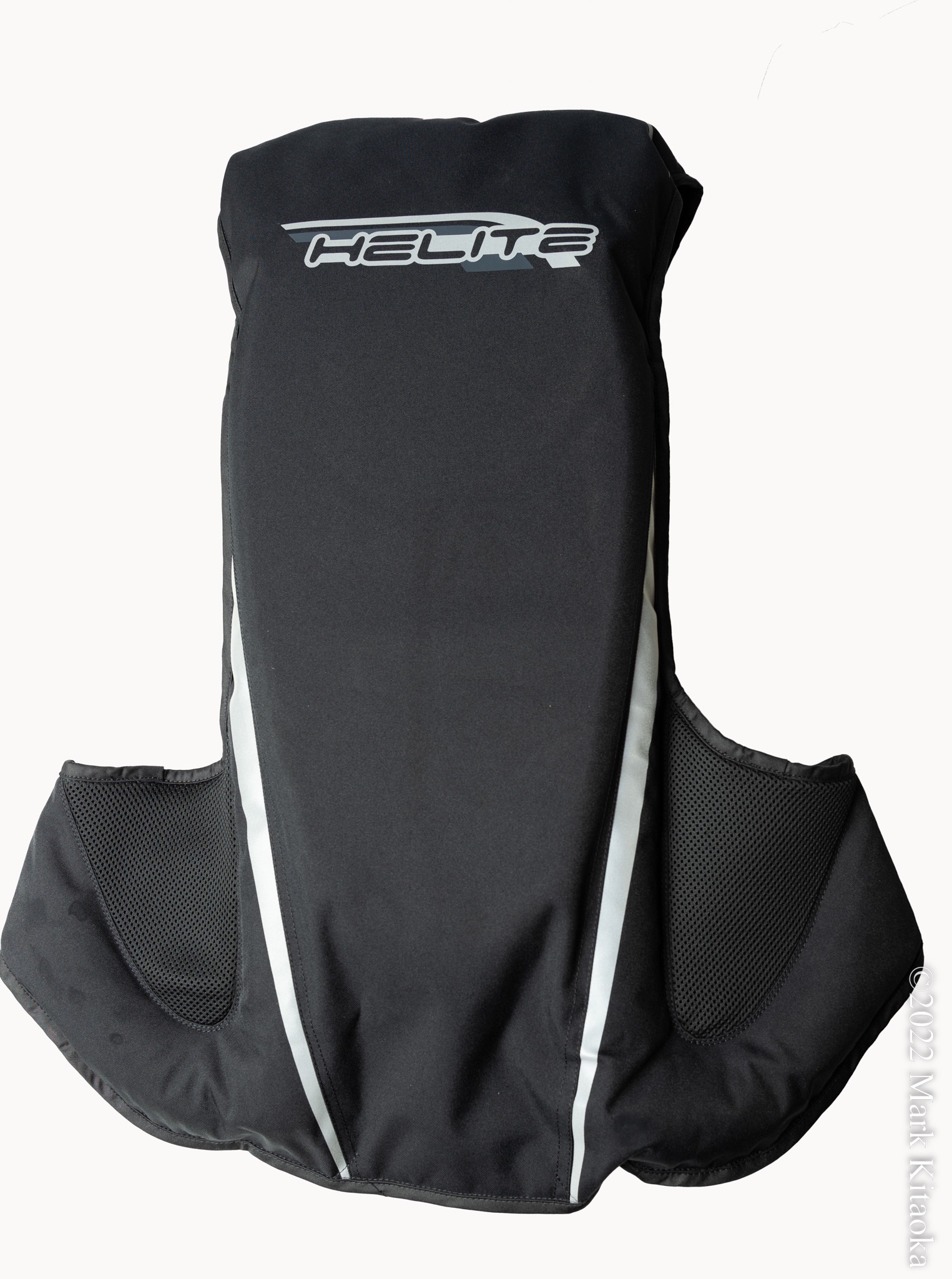
For me, this image is the one that really displays the amount of spine protection the HT2 offers. As you can see, the spine area is cradled in protection. And I had mentioned earlier that because of how the airbag inflates in the lower portion of the back, my tailbone is also protected well.
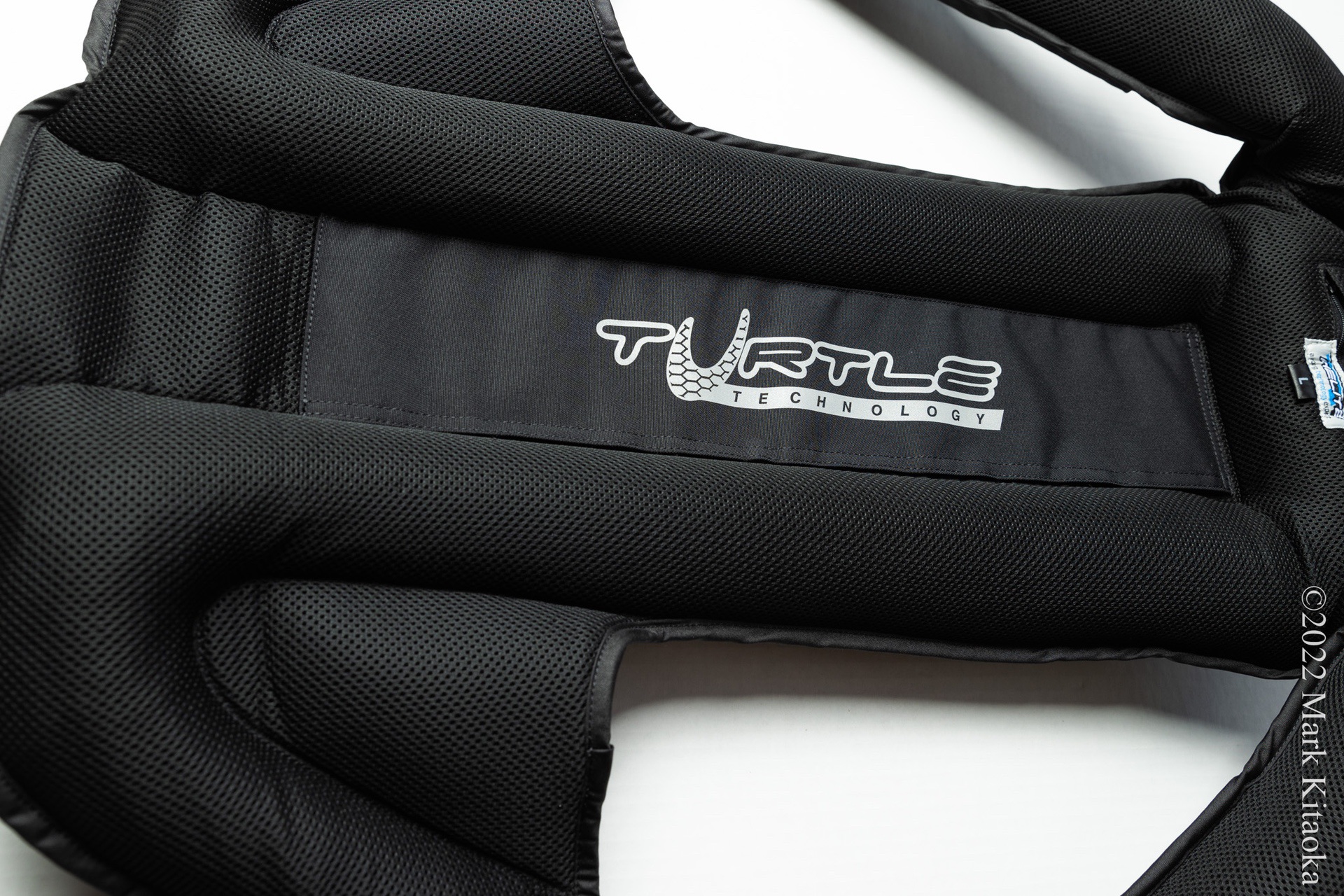
You can find the Helite Turtle 2 user manual on their product page or the PDF itself.
The thing about safety gear is this: most of us don’t like to wear it. In a perfect world, we would ride in a t-shirt and shorts, flip flops, and sunglasses. Hell you can still ride like that in Hawaii where my cousin lives. He actually rides like that still. Sure, most will wear a jacket, and in states where helmets are mandatory, you gotta wear one to ride (legally, anyway).
But an airbag, Mark, really? Come on—isn’t that going a bit too far? Are you such a sissy that you feel you need to do that, or are you just a s***y rider? Maybe both? And don’t you have to send the thing in if it deploys? I visited a motorcycle retailer who carries Helite and he told me I’d have to send it in if it deploys. Shows how little he knew about the product. How about $32.00 to $37.00 USD (depending on your vest’s size) to replace the cartridge with a simple hex wrench?
I will simply say that the Helite Turtle 2 is something I will enjoy wearing whenever I ride. Because I’ve crashed a few times at the racetrack, I know the value of great gear (plus having two ambulances and EMTs on site at all times, corner workers, flags and rules, safety runoff areas, etc.).
But on the street, none of those things exist. Instead, there are people texting, having lunch, drinking beers in paper bags, talking on their phones, and looking at their GPS for directions. And cars/trucks/SUVs are all my enemies. Curbs, light poles, and gravel are all things I can hit. I prefer to not become a paraplegic, so if I can wear something I don’t even notice and it will keep me from being in a wheelchair, I’m all for it. And for me, that’s the Helite Turtle 2.
When someone asks me why I feel the need to wear a motorcycle airbag vest, I present them with this question: “If you were (or are) a police officer, would you wear a second-chance bullet proof vest if it was not required? If not, why not, and if so, why?” As they try to justify that people may try to kill you, I say that stats show the number of injuries to motorcyclists far eclipses the number of times a police officer is shot at. Ask any officer whose second-chance vest saved their life if they even question wearing one now. Ask me after crashing at the racetrack three times if I ever ride without great gear. Both answers are the same.
RevZilla Helite
The post Helite Turtle 2 Airbag Vest: A “Compressed” Review appeared first on webBikeWorld.
Continue reading...
The Helite Turtle 2 is the company’s second generation airbag vest. It is intended for street use since they have another product specific to the track. It is both comfortable and provides incredible protection to riders of any skill level at a price comparable to a quality full face helmet.
Build Quality
Comfort
Protection
Value for Money
Pros
Can be worn over existing jackets
Excellent vital organ coverage
Air bladder expands more than competitors
Restricts head movement when deployed to prevent neck hyperextension or clavicle fractures
User serviceable CO2 canister replacement
Flows air well
Comfortable and does not restrict head movement
Available in Hi ReZ color
Cons
Same cost as high-end full-face helmet
Cannot be rolled up for storage
4.9
Buy Now
RevZillaHelite
The Closest Thing to Action Spy Gear
This review is for the most current analog Helite 2 Air Vest for motorcycles. I say analog because their model uses a physical tether to deploy the trigger for the firing mechanism when the rider departs from the motorcycle (i.e., crashes). I tend to only depend on things I have tested myself—firsthand experiences.
There are a number of videos about the Helite vests; most simply show the airbag’s deployment and then being hit by someone with their fists or more potentially damaging instruments like a golf club. There are a handful of videos where actual users have fallen while doing vlogs of themselves riding. All are very impressive.
I’ve written for webBikeWorld about other items and have told stories about my crashes at the racetrack. I’ve had three in total; one at Laguna Seca in turn three, one at Pahrump NV in turn two, and one at Thunderhill Raceway in turn 10. Even though that crash resulted in me being airlifted to the Enloe Trauma center, I had no broken bones or road rash of any kind. Rung the snot out of my bell, but I’ve had no spinal injuries in any track crash.
Keep in mind that racetracks are designed to contemplate crashes—they have corner workers, runoff areas, kitty litter, soft barriers, and a minimum of two ambulances at the standby along with EMTs. My custom-made leathers and back protector saved me from becoming a paraplegic for sure. Fortunately, not many street riders have to test their safety gear. But we have different dangers that don’t exist at the track. There are no ambulances on standby along with EMTs; no corner workers or flags. There are curbs, cars, texting, pedestrians, trucks…. you get the drift.
So my review will compare my firsthand experience with safety gear that has saved me from dire physical harm in the past to my observation of the preventive qualities of the Helite Turtle 2, which I will refer to as the HT2. I have not crashed in this vest, so as of now I cannot speak firsthand of its effectiveness in a high-speed crash.
My custom-made team leathers and back protector (seen below) were both worn during all crashing events. In two cases, the leathers had to be repaired after the crash.




About Helite
Helite was founded in 2002 by Gérard Thevenot, a French engineer who specialized in fluid mechanics and was passionate about light aeronautics (ULM, hang gliders, paramotors). The high accident rate in these sports led him to look for solutions for pilot protection, and so a first patent was filed for individual protection airbags.
As airbag technology is applicable to all high-risk activities, Helite has become an expert in this field, dedicating itself exclusively to the development of individual protection systems. Helite airbags are already used in a wide variety of fields such as motorcycling, horse riding, cycling, health, aeronautics, and industrial work; they are also highly appreciated in top-level sports.
From Helite’s website:
Our Ambition:
Helite’s mission is to make the world safer by developing new intelligent solutions to protect people in their sports and daily activities. Our special recipe: innovation, technology, simplicity, all made in France with our touch of authenticity.
Our R&D Approach:
From the idea to the design of an airbag, a long process and many skills are involved. In this sense, our airbag technology is still validated by numerous prototypes and crash tests.
Buy Now
RevZilla Helite
Helite Turtle 2 Airbag Vest Features
Let’s start with the protection offered by the coverage of the Helite Turtle 2:

The front of the HT2, when inflated, offers support around the neck and head, preventing fore and aft movement as well as side-to-side. This greatly reduces the potential for neck/spine injuries and the fracturing of the clavicle bone.
Most clavicle fractures occur when the lower edge of the rider’s motorcycle helmet impacts the clavicle bone upon impact. The HT2 does not restrict my head movement at all in any direction when not inflated. My leathers did not prevent head/neck movement in the event of an impact.
Helite Turtle 2 Airbag Vest First Impressions
In addition to the vest itself, here is what’s included with the HT2:
An instruction manual with a plastic pouch and 5mm hex key used to replace the CO2 cartridge when necessary.


Next up: one 60 cc Helite CO2 cartridge.

A lanyard tether, which attaches to the bike frame, and which incorporates an elastic portion for ease of movement when dismounting the bike.

Examining the HT2 revealed to me just how well engineered and executed the vest is. Seams are consistently sewn with no thread fraying. I have a size large and have worn it over a leather riding jacket as well as a KLIM Marrakesh, Alpinestars, and Aerostich Darian jacket. The side arm hole area is generous in its size, allowing complete freedom of movement and great airflow as well.

The reflective accents on the rear of the HT2 reflect well when illuminated by headlights.




The length of the rear of the HT2 covers the tailbone area, which is much appreciated by someone who has crashed. No, not in the HT2, but wearing full leathers and being able to examine damage to them after the fact in two low-sides and one high-side. Later in this review, I will explain how the HT2 protects the tailbone area.
Helite’s V1 and V2 models differ primarily in cosmetic changes. Helite USA notified me that the internal workings of the vests are the same. Here is Helite’s video of the changes between the V1 and V2.
Helite Turtle 2 Airbag Vest Construction
I have previously mentioned that the quality of construction in the HT2 is excellent. Let’s go over the components step by step.
I had previously mentioned the size of the side arm holes. It’s more accurate to describe them as arm openings. They’re huge, and I appreciate the amount of movement and airflow this offers. It also makes putting the vest on and off with a jacket a breeze—no pun intended.

Both sides of the front of the vest contain Velcro panels, which open to allow adjustment of the three straps, which hold the vest to your body. On the right-hand side, the vest contains the CO2 cartridge and the firing spring mechanism. Velcro straps sewn into each side panel allow the user to adjust the length of each strap.
Helite recommends that when adjusted over your riding jacket, enough space should exist between the vest and your jacket to fit a full fist on each side of the front panel. This is an estimate of how much room will be needed when the vest expands in deployment. My video in the Deployment section will show this.

The vest does not ship with the CO2 cartridge installed. It’s very convenient that the vest pocket shows the correct size cartridge to be used with the vest size you’ve purchased. Helite cartridges come in 50, 60, 85 and 100cc sizes depending on the vest’s size. Retail pricing for the replacement canisters ranges from $32.00 to $37.00 USD, depending on vest size.
Mine is a large, which uses a 60cc size. The black portion on the left of this image is where the female portion of the lanyard attached to the ball passes through when the flap is closed.


On both sides of the vest’s front, the interior panels have zippers where their pulls are hidden beneath elastic keepers. These zippers are used by Helite if the vest’s airbag needs to be serviced. There is also one of these zippers located in the neck area just above the Helite logo tag. Again, these zippers are not intended to be opened by the end user.


Like the right side, underneath the front panel on the left-hand side of the vest’s front exists Velcro straps, which are used to adjust the sizing straps.


In addition, the V2 Helite Turtle has added a small zippered pocket under its own Velcro panel. Although not stated in their literature, it appears that the zipper is the waterproof type. I’m not certain if the pocket is waterproof.




Nowhere in Helite’s literature do they state what should or should not be placed into this chest pocket. My personal view is I would not store anything in it other than a credit card, ID, or some cash—and certainly not my cell phone. When the airbag activates, I don’t want anything sharp or anything that could be damaged upon impact when the airbag deploys to be in there!
The back of the HT2 houses a solid piece of material between the vest’s material and the airbag. In examining the inside of the rear panel, I found that a vertical velcro patch exists that can be lifted on the right hand side.


Lifting this panel revealed hard armor on the interior of the airbag.


The airbag portion in the rear of the vest appears to be sandwiched between two hard armor plates offering excellent spine protection. Later in my deployment video and imagery you can view how the spine is cradled between two air chambers.
I want to say here, before I discuss how the vest operates, that for me, dying is not my primary fear. But I don’t believe I have the strength of will to endure what people like Wayne Rainy and Christopher Reeves experienced. Anything I can do to prevent that happening is something I will do.
Buy Now
RevZilla Helite
Helite Turtle 2 Airbag Vest Operation
In this section, I will combine Helite’s own user guide instructions with my own imagery. First off is the process of installing the partial elastic tether to your bike.

This is how I installed the tether on my Zero DSR:



Since I use a dual sport strapped tank bag on my bike, I can store the tether this way when I’m not using it.

Installing the CO2 Canister
Push the female end of the lanyard clip through the vent hole in the right-side flap. Open the right-hand flap. It’s best to adjust the length of the velcro straps before installing the CO2 canister on the right side. Once the canister is installed, it’s tough to get your fingers under the vessel to lift the velcro strap. So adjust the size of your straps first.
And as with all threaded things, be sure to not cross thread the canister as you screw it into the airbag’s housing. Conventional threads, ‘righty tighty, lefty loosey’, finger tight.


Thread the female end of the lanyard attachment clip back through the flaps vent hole.

Close the right hand flap over the canister.

I noticed that once I inserted the CO2 cartridge the Helite logo patch appears in between the small seams on the right-hand side panel. Not sure if this is intended, but a cool way to check that the canister is installed. Of course, just feeling for the bulge in the panel works too. I just appreciate small details.

I wanted to examine the mechanism after the HT2’s trigger was deployed. Here are Helite’s instructions to perform that operation, along with their company’s video:

Helite’s video on how to install a new CO2 cartridge:
Here is how the CO2 canister appears after being pierced:


After removing the pierced CO2 canister, this is how the trigger mechanism appears. The ball and exterior ball frame are out of the trigger housing and the trigger spring appears where the ball and ball’s frame resided before deployment.

Here are all of the pieces for the user serviceable canister replacement:

Canister piercing trigger:

Ball tether pull:

Trigger spring:

Place the 5mm hex wrench into the housing’s hex space.

Use the 5mm hex wrench to loosen the bolt. Helite recommends that you do not completely remove the bolt like I did. I just don’t listen; ask my ex-wife.
You can push the piercing trigger down from where the canister is inserted, either with your finger or the hex wrench.
Once the trigger plunger’s hole aligns with the hole in the housing, reinsert the ball and its frame. Be sure the ball frame is square against the housing.


Using your thumb to hold the ball and its frame into the housing, insert the spring into the housing bolt’s hollow portion and thread it back into the trigger housing.

I found that by folding the lower portion of the vest up out of the way it’s much easier to continue to tighten the bolt using the longer end of the hex wrench. Don’t gorilla tighten the canister bolt. Snug it down securely.


Try moving the ball lanyard around to ensure the ball moves freely and the ball’s frame remains steady. After that all you need to do is insert the new CO2 canister, thread the female buckle through and you’re all set to go.
Helite Turtle 2 Airbag Vest Fit & Feel
Because the HT2 has such a wide range of adjustments via the six velcro straps, their location, and the ultra-wide side arm areas, it’s extremely comfortable. I had expected the vest to be just a tad confining or hot when worn over my numerous jackets. Nope, not at all.
I have weighed the vest with the 60cc canister. It measured 4.00 pounds. Around the weight of a helmet, but distributed over a much larger area on my body.

There isn’t a lot more to be said about its comfort. It’s as if you wore one of those CalTrans or construction safety vests over your t-shirt. At some point you just forget it’s there. That’s how the HT2 feels to me. And heck, I’d venture to say that if you choose their hi-viz version most would just think you’re wearing one of those safety vests. Except this one is WAY SAFER.
Helite Turtle 2 Airbag Vest Deployment
For those who worry about accidentally activating the HT2 by forgetting to disconnect the lanyard, I too was worried. When seat belts were first required, I rushed home because I really had to take a leak, and when I flung open the door to exit I forgot to disconnect my seatbelt. I pissed a little in my pants as the belt squeezed my stomach. I ended up just pissing in my own front yard.
Since the tether has elastic in a portion of the line, I get a tugging reminder when I have forgotten to disconnect it. Plus, Helite states that it takes 60 ft pounds of torque to exert enough force to dislodge the ball from the trigger housing. If you think about how often you torque a bolt down to 60 ft pounds it’s not often. Granted, the force would contemplate distance, but my view is that it would take a substantial accidental pull to activate the vest while purposely dismounting the bike.
The following are images after the vest has been deployed:




It’s very evident from these photos just how much protection is offered by the HT2 compared to other armor, be it Level 1 or 2. Here are images of the vest after I removed it and it had been deployed for 3 minutes.



For me, this image is the one that really displays the amount of spine protection the HT2 offers. As you can see, the spine area is cradled in protection. And I had mentioned earlier that because of how the airbag inflates in the lower portion of the back, my tailbone is also protected well.

Helite Turtle 2 Airbag Vest Warranty & Service
You can find the Helite Turtle 2 user manual on their product page or the PDF itself.
Final Thoughts on the Helite Turtle 2 Airbag Vest
The thing about safety gear is this: most of us don’t like to wear it. In a perfect world, we would ride in a t-shirt and shorts, flip flops, and sunglasses. Hell you can still ride like that in Hawaii where my cousin lives. He actually rides like that still. Sure, most will wear a jacket, and in states where helmets are mandatory, you gotta wear one to ride (legally, anyway).
But an airbag, Mark, really? Come on—isn’t that going a bit too far? Are you such a sissy that you feel you need to do that, or are you just a s***y rider? Maybe both? And don’t you have to send the thing in if it deploys? I visited a motorcycle retailer who carries Helite and he told me I’d have to send it in if it deploys. Shows how little he knew about the product. How about $32.00 to $37.00 USD (depending on your vest’s size) to replace the cartridge with a simple hex wrench?
I will simply say that the Helite Turtle 2 is something I will enjoy wearing whenever I ride. Because I’ve crashed a few times at the racetrack, I know the value of great gear (plus having two ambulances and EMTs on site at all times, corner workers, flags and rules, safety runoff areas, etc.).
But on the street, none of those things exist. Instead, there are people texting, having lunch, drinking beers in paper bags, talking on their phones, and looking at their GPS for directions. And cars/trucks/SUVs are all my enemies. Curbs, light poles, and gravel are all things I can hit. I prefer to not become a paraplegic, so if I can wear something I don’t even notice and it will keep me from being in a wheelchair, I’m all for it. And for me, that’s the Helite Turtle 2.
When someone asks me why I feel the need to wear a motorcycle airbag vest, I present them with this question: “If you were (or are) a police officer, would you wear a second-chance bullet proof vest if it was not required? If not, why not, and if so, why?” As they try to justify that people may try to kill you, I say that stats show the number of injuries to motorcyclists far eclipses the number of times a police officer is shot at. Ask any officer whose second-chance vest saved their life if they even question wearing one now. Ask me after crashing at the racetrack three times if I ever ride without great gear. Both answers are the same.
Pros
- Worn over existing jackets
- Excellent vital organ coverage
- Air bladder expands more than competitors
- Restricts head movement when deployed to prevent neck hyperextension or clavicle fractures
- User serviceable CO2 canister replacement
- Flows air well
- Comfortable
- Does not restrict head movement
- Available in Hi ReZ color
Cons
- Same cost as high-end full-face helmet
- Cannot be rolled up to store
Specs
- Manufacturer: Helite
- Price: (When Tested) $679-$699
- Colors: black, titanium/black, light gray/black, dark gray/black
- Sizes: S, M, L, XL, 2XL, 3XL, 4XL
- Review Period: April – June 2022
Important Links / Where to Buy
Buy NowRevZilla Helite
The post Helite Turtle 2 Airbag Vest: A “Compressed” Review appeared first on webBikeWorld.
Continue reading...


